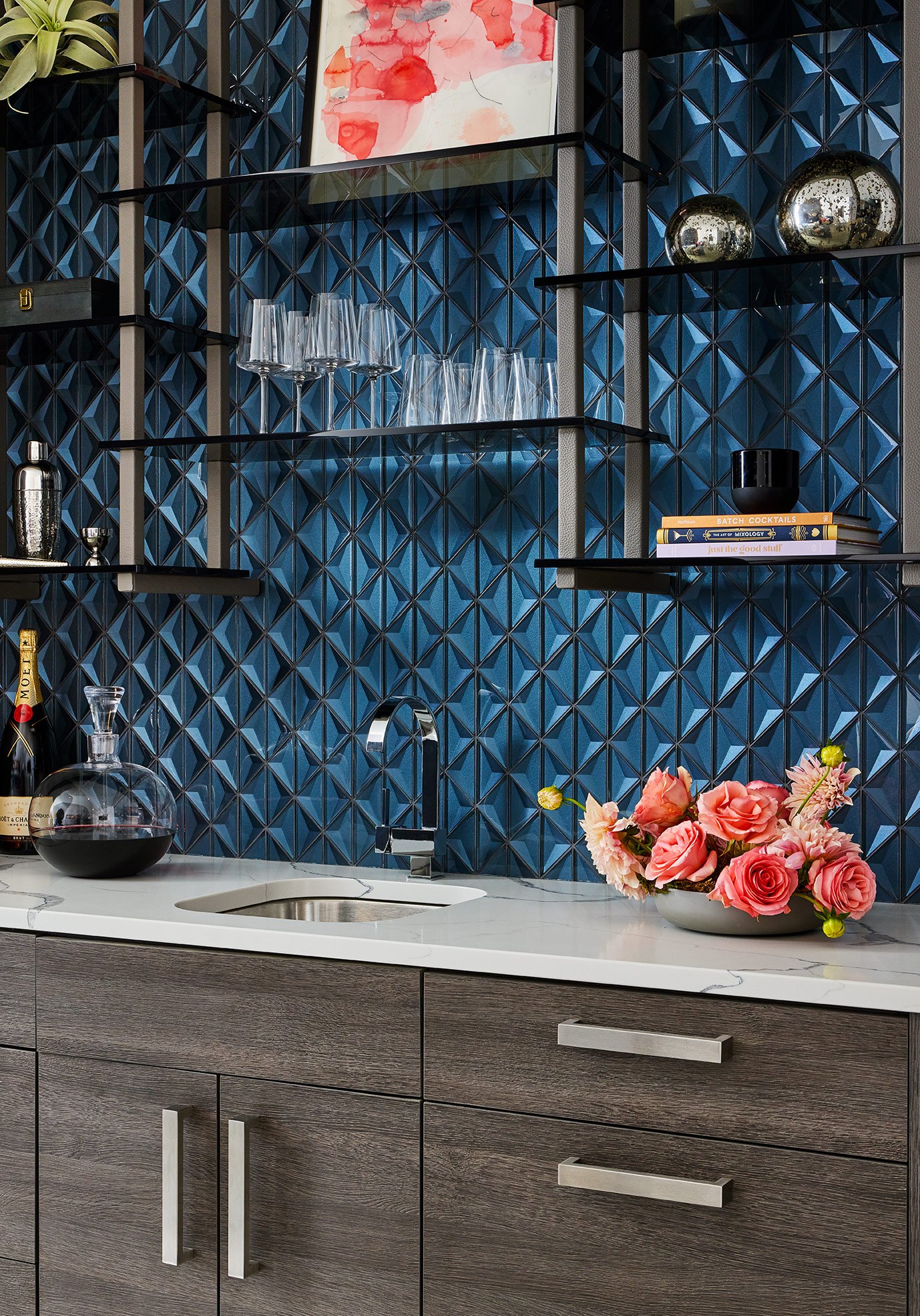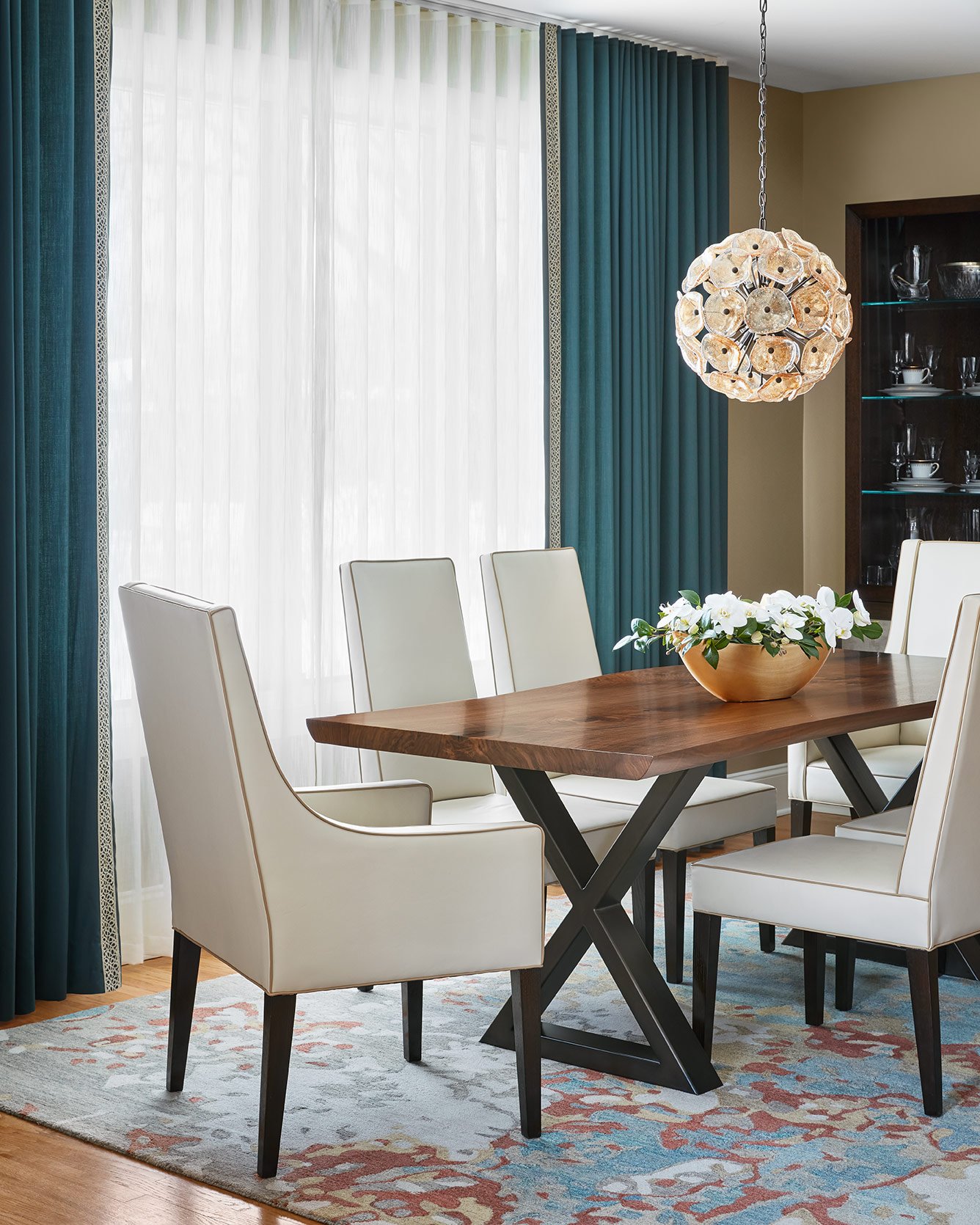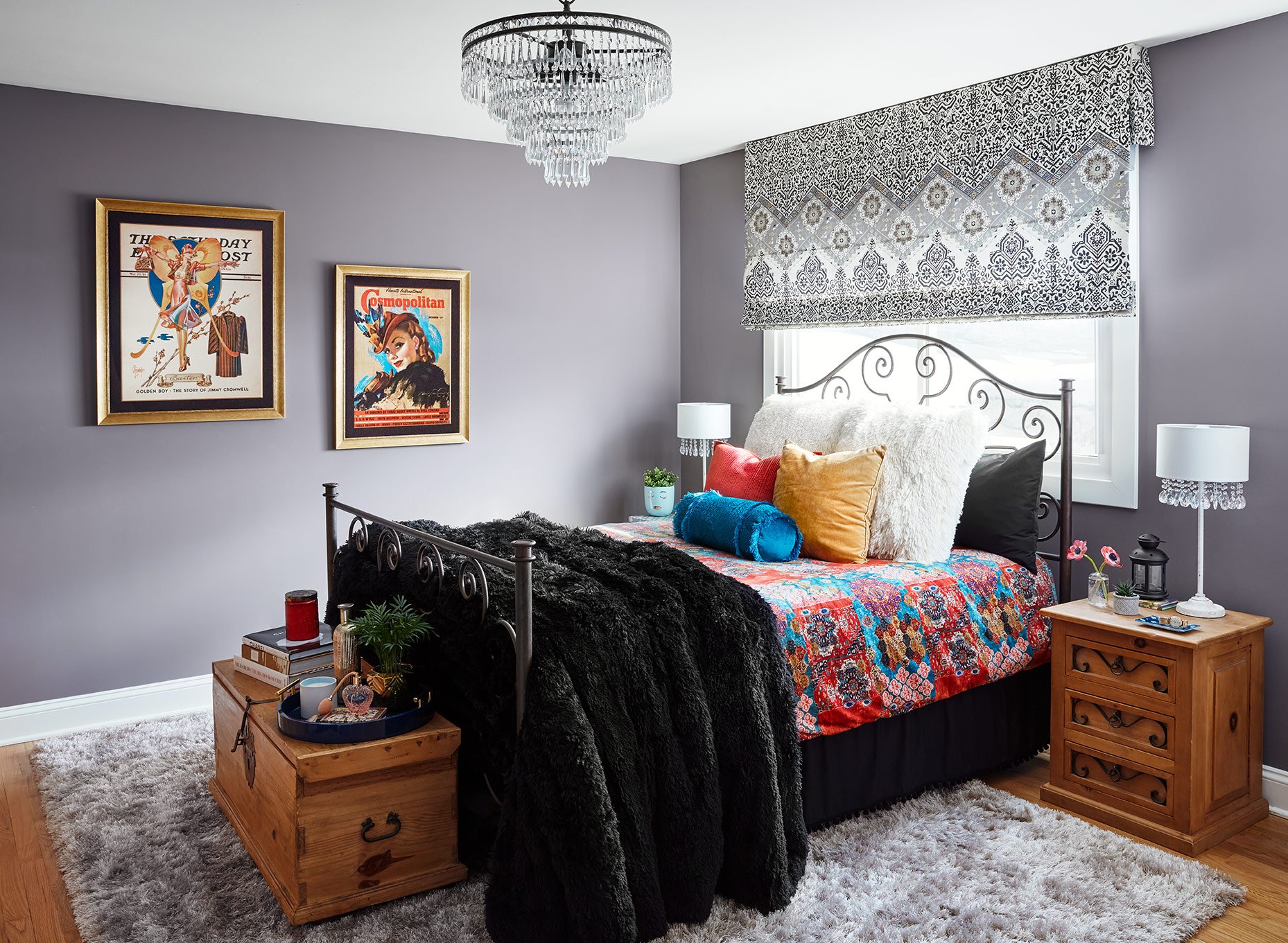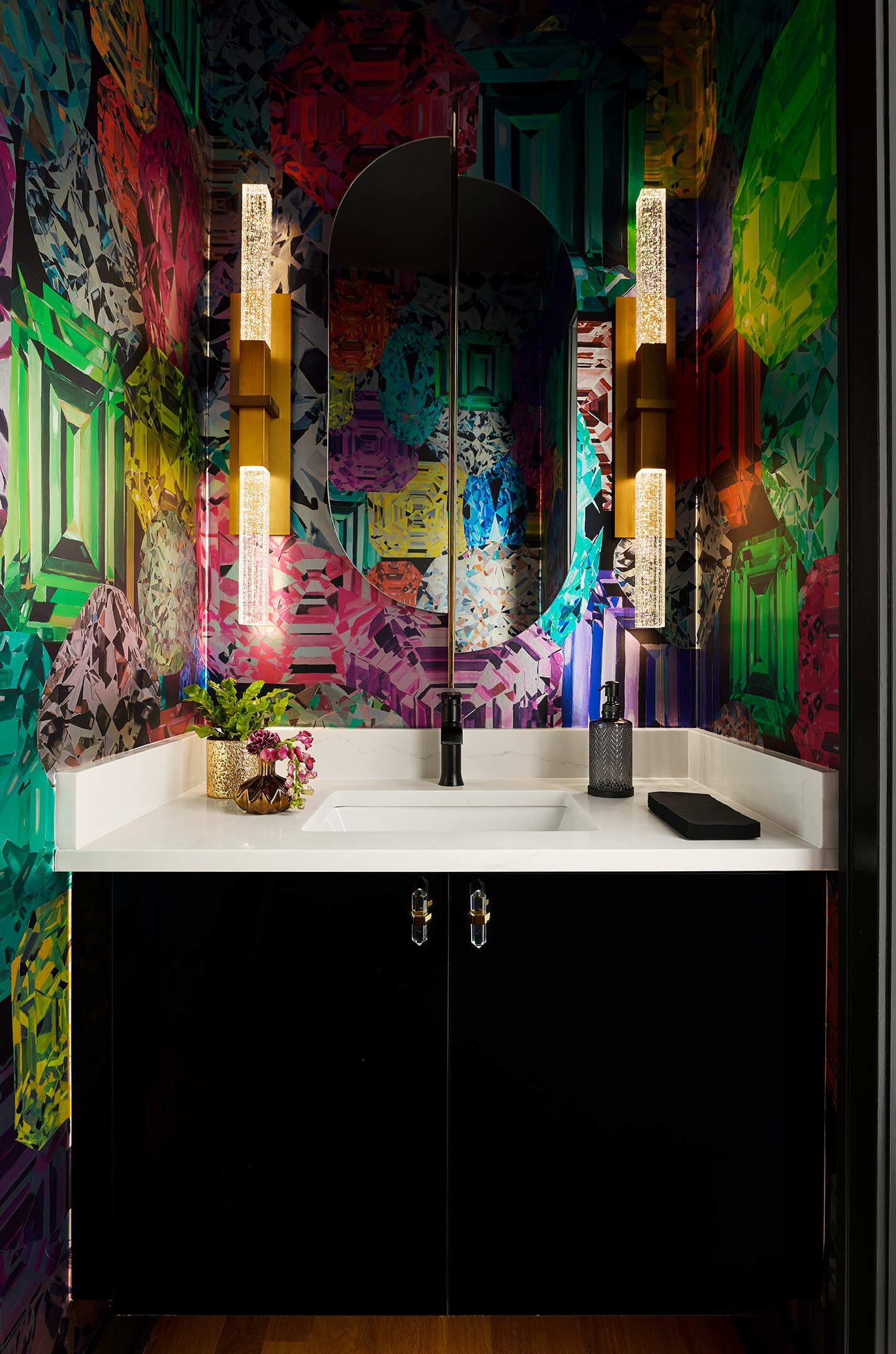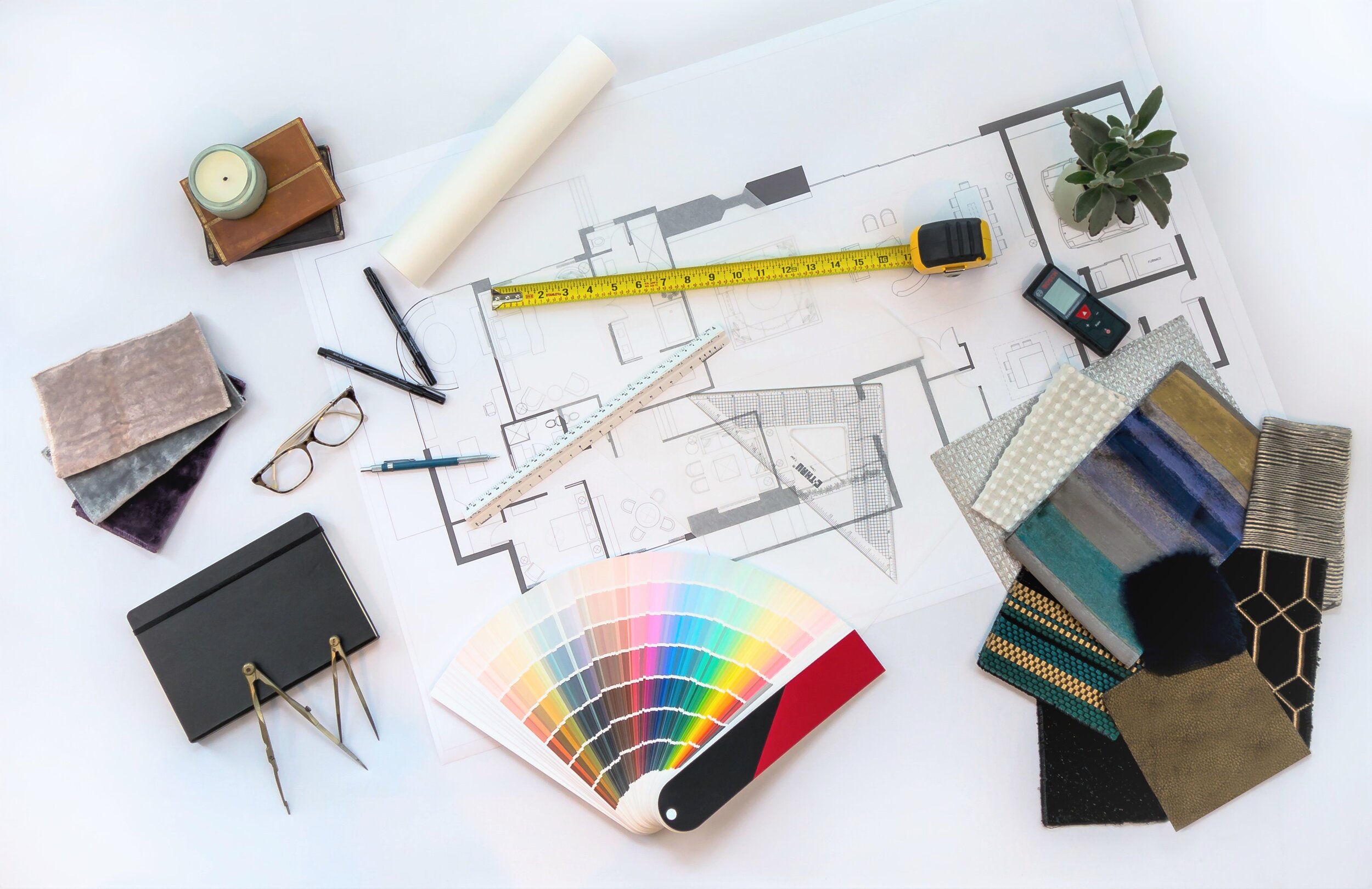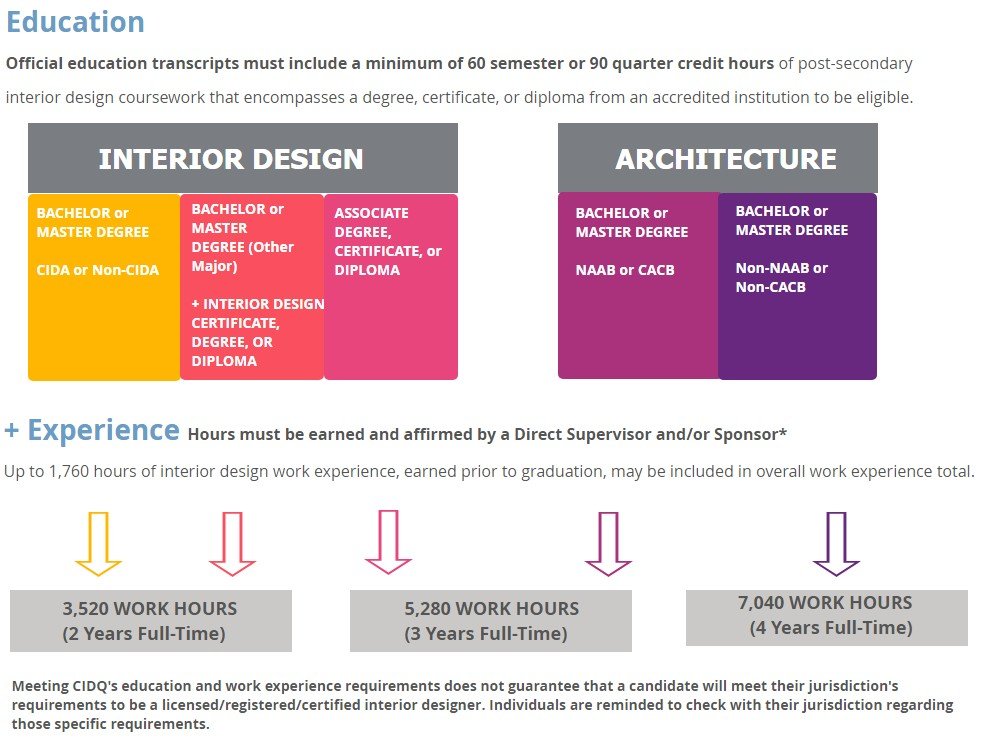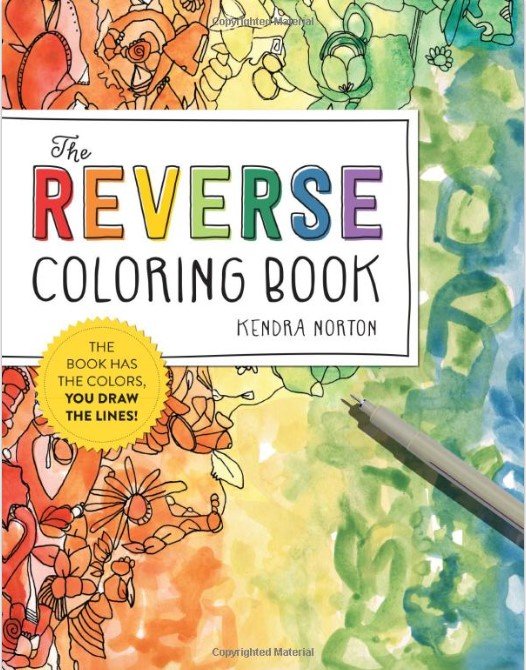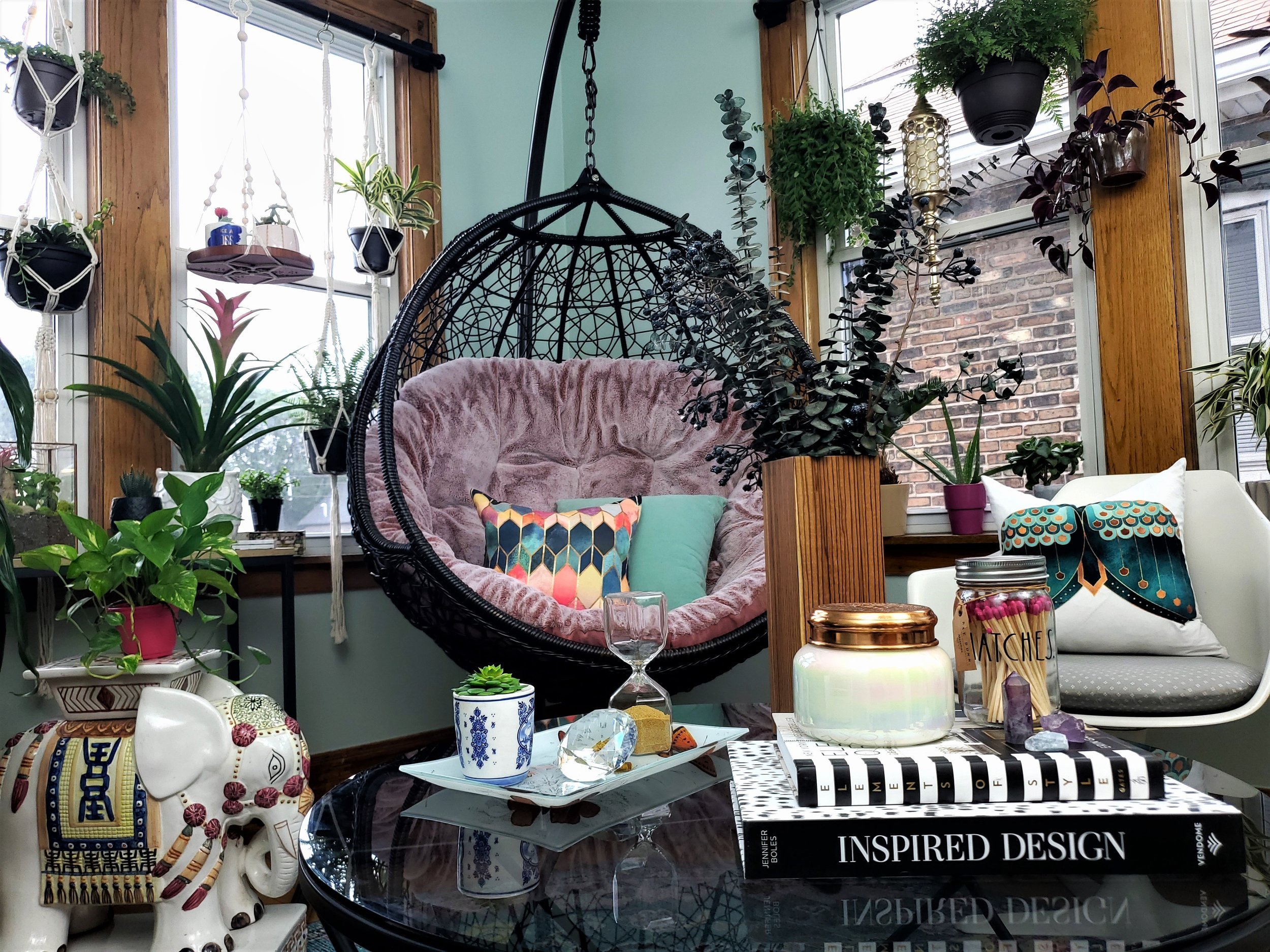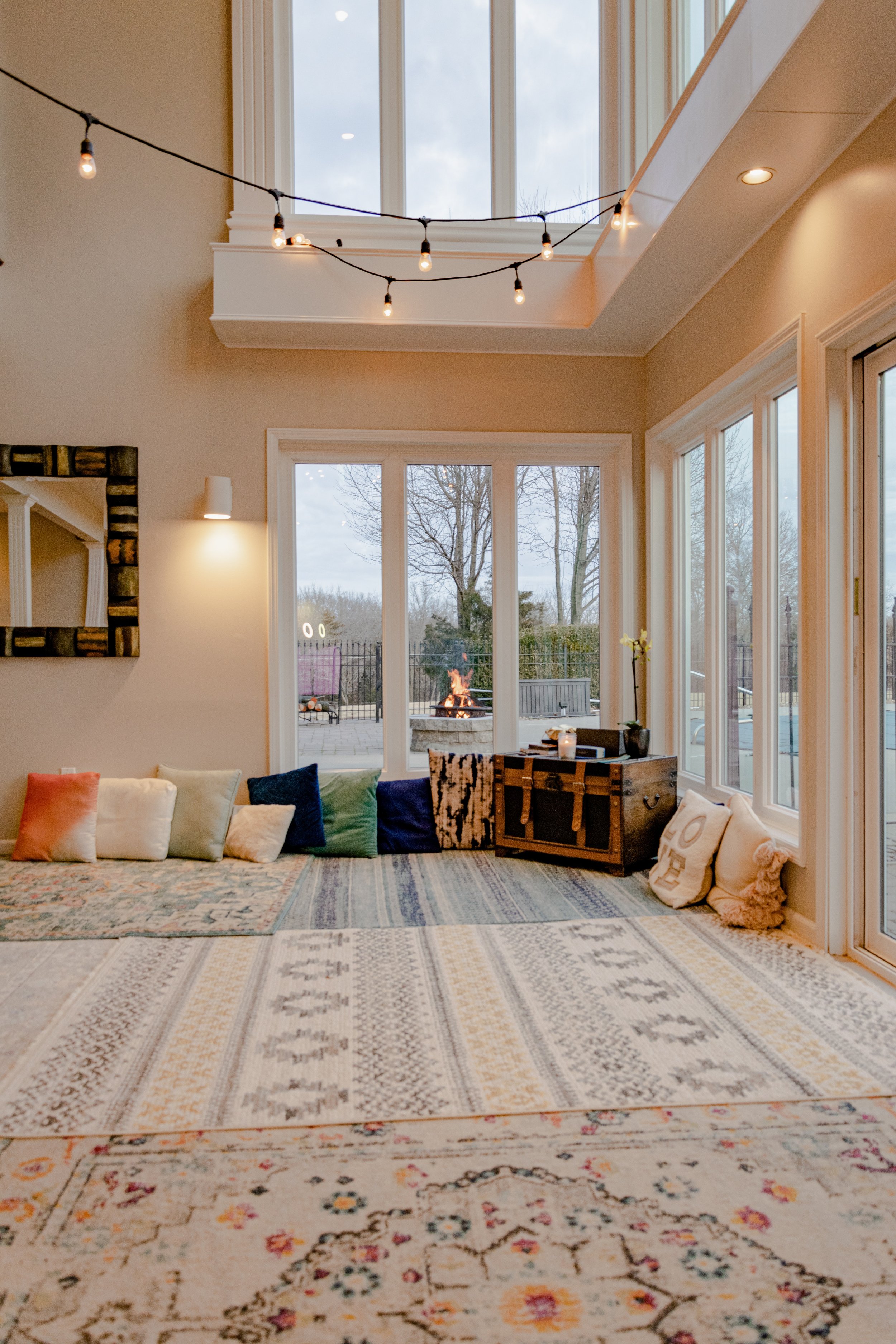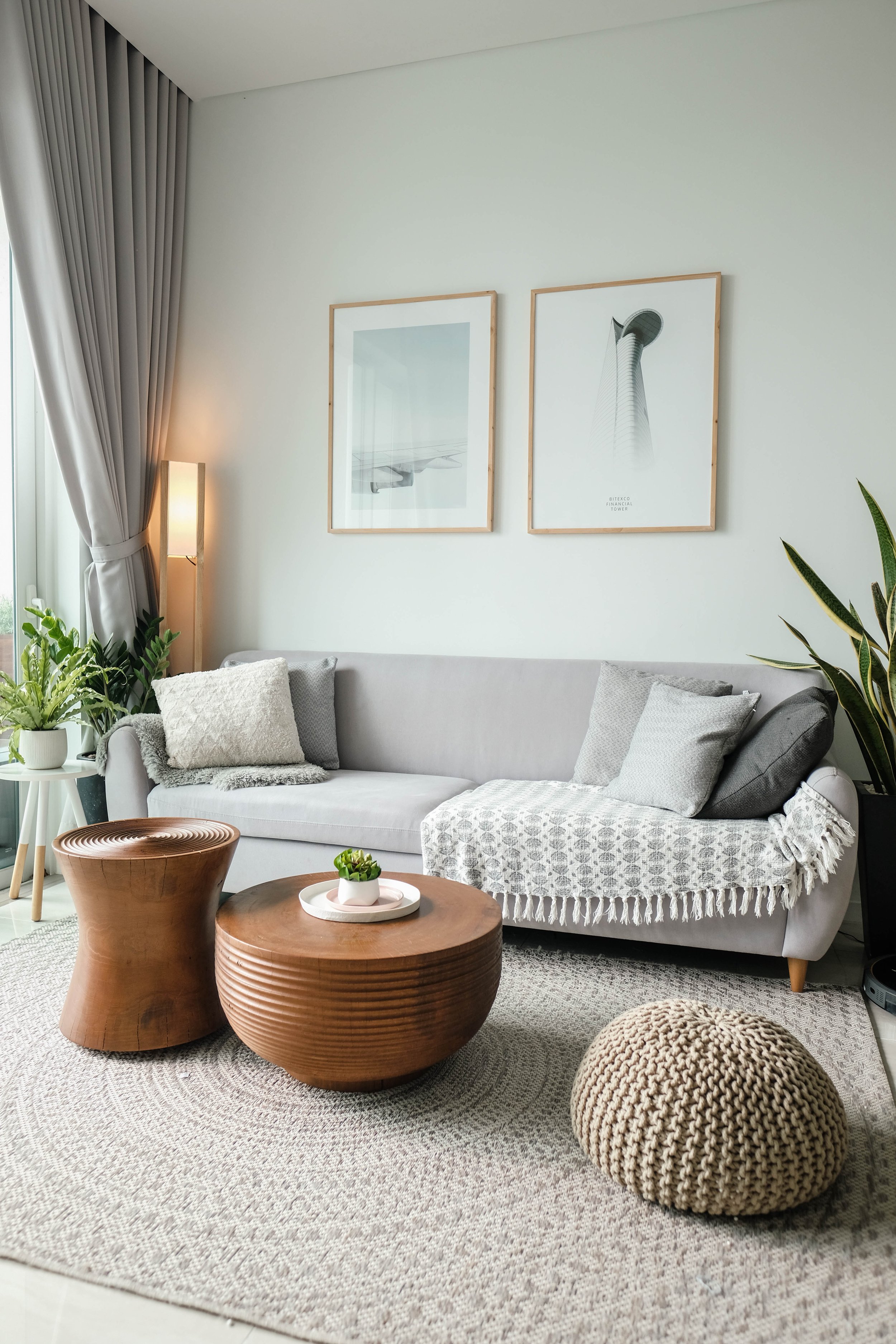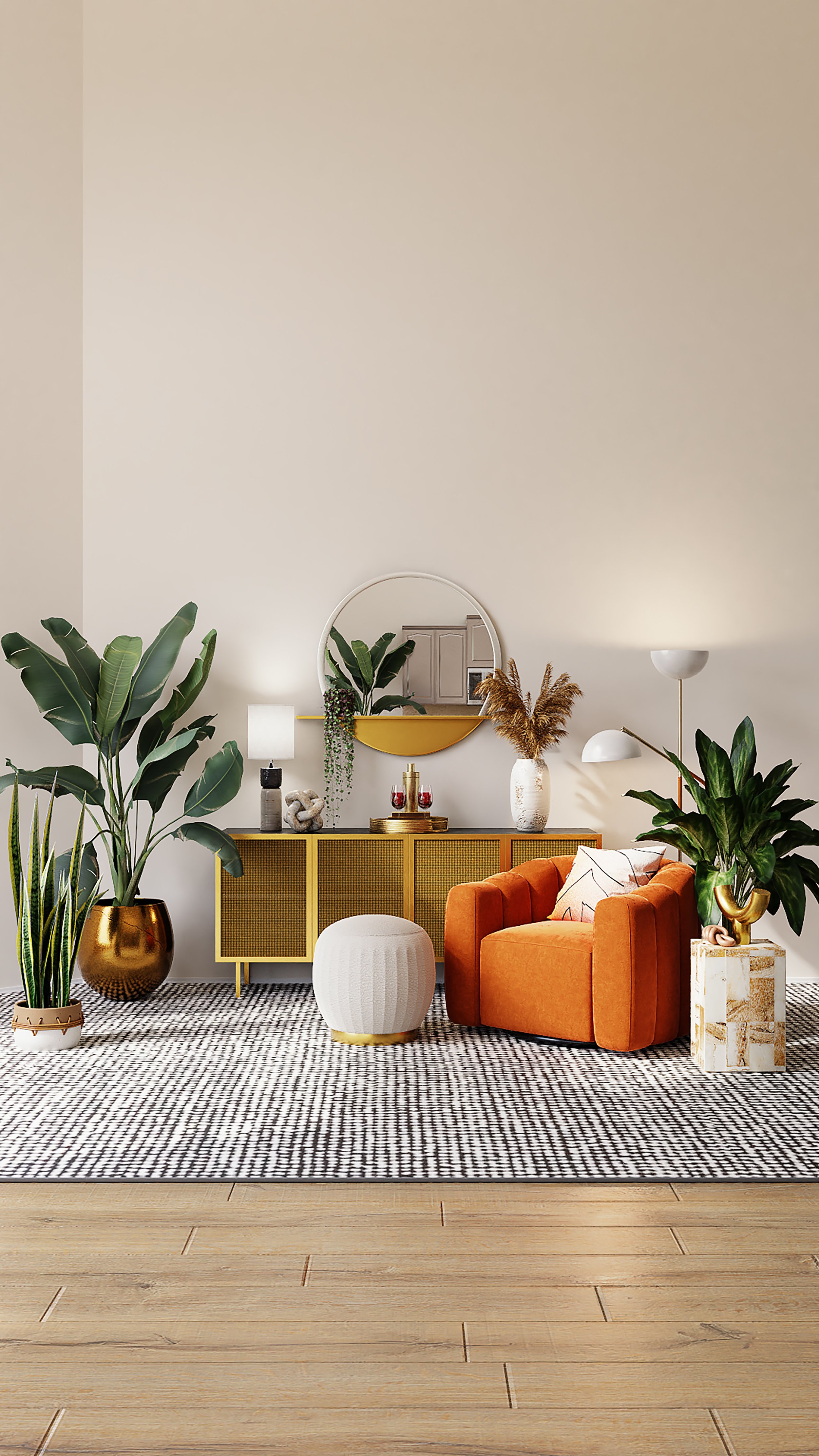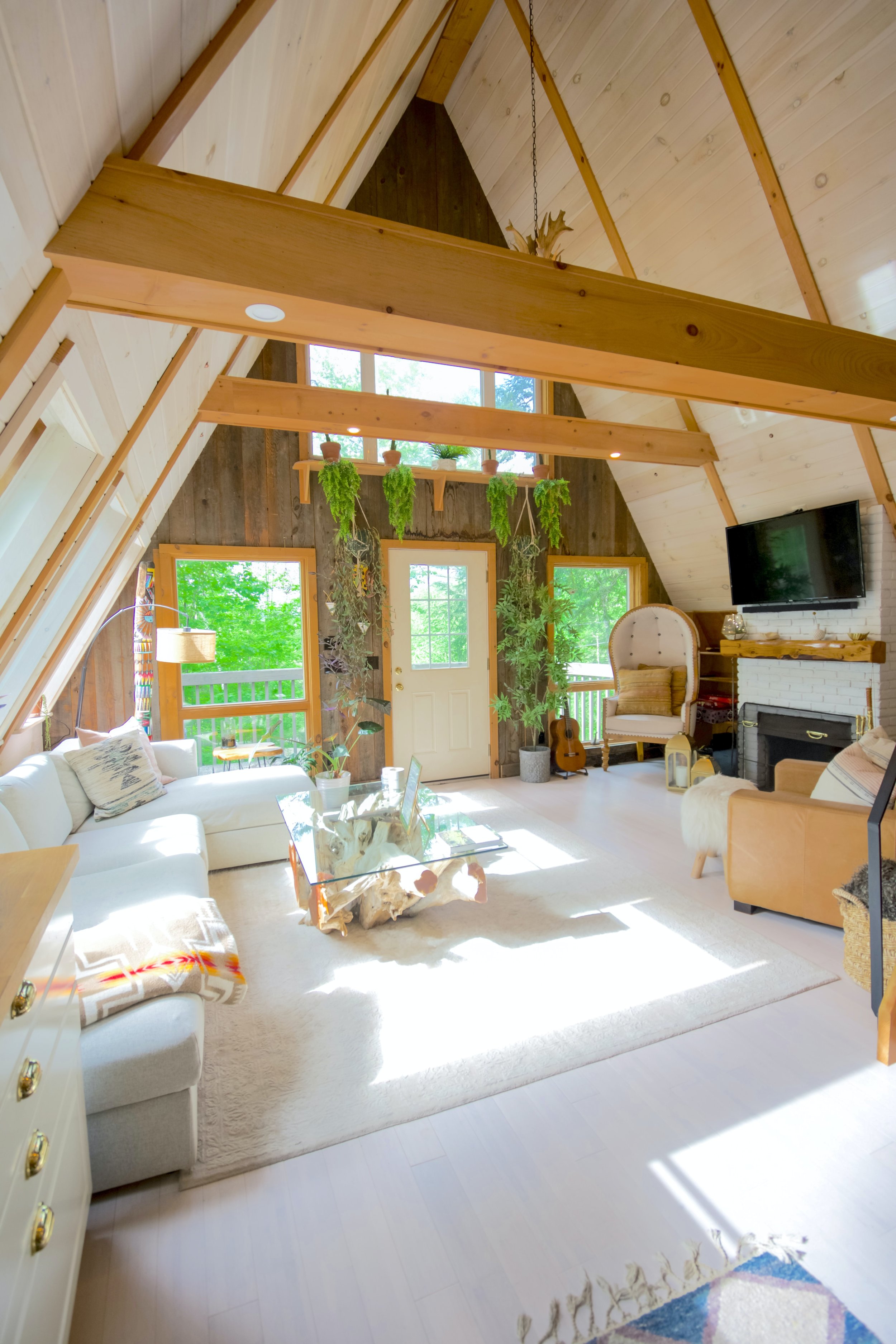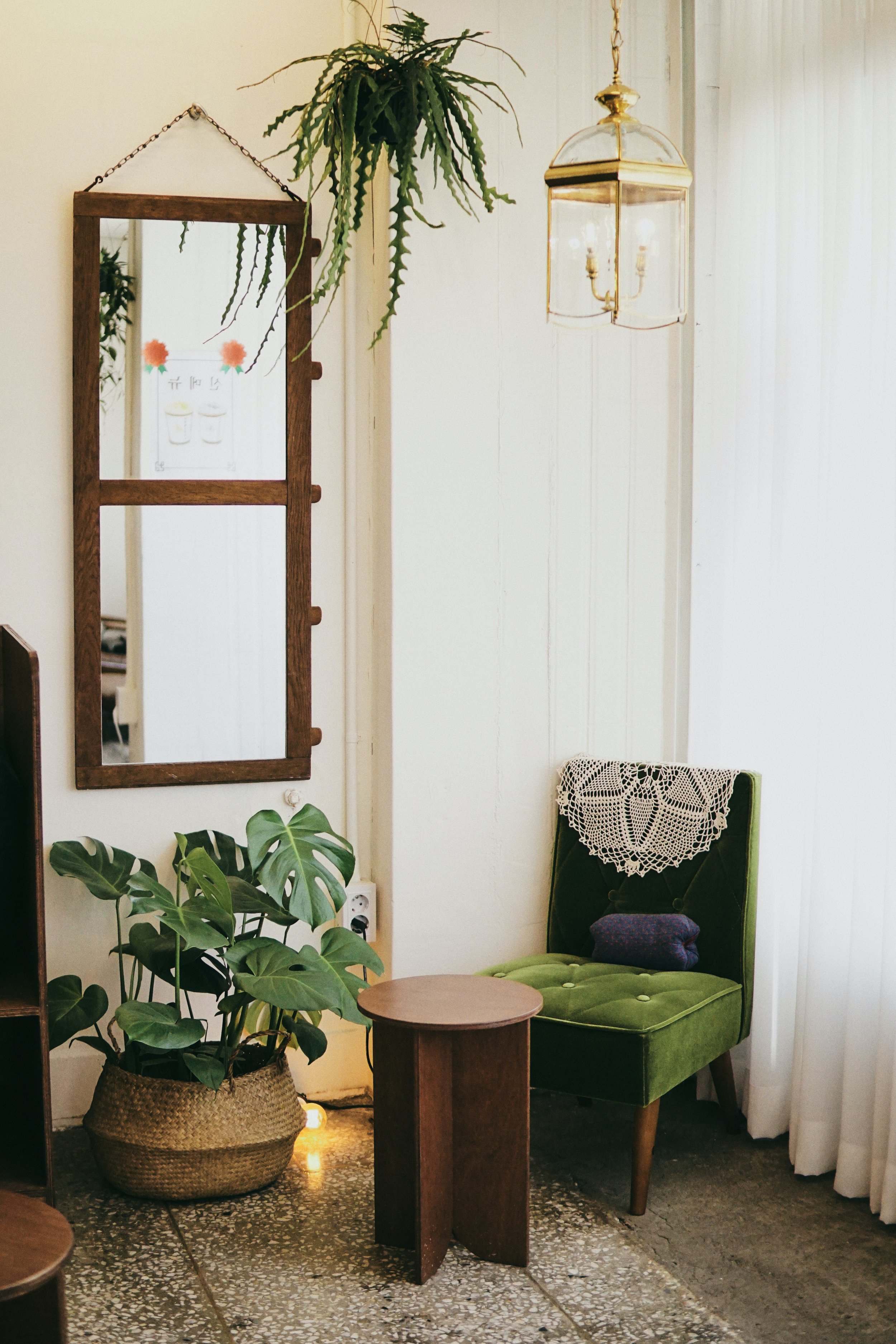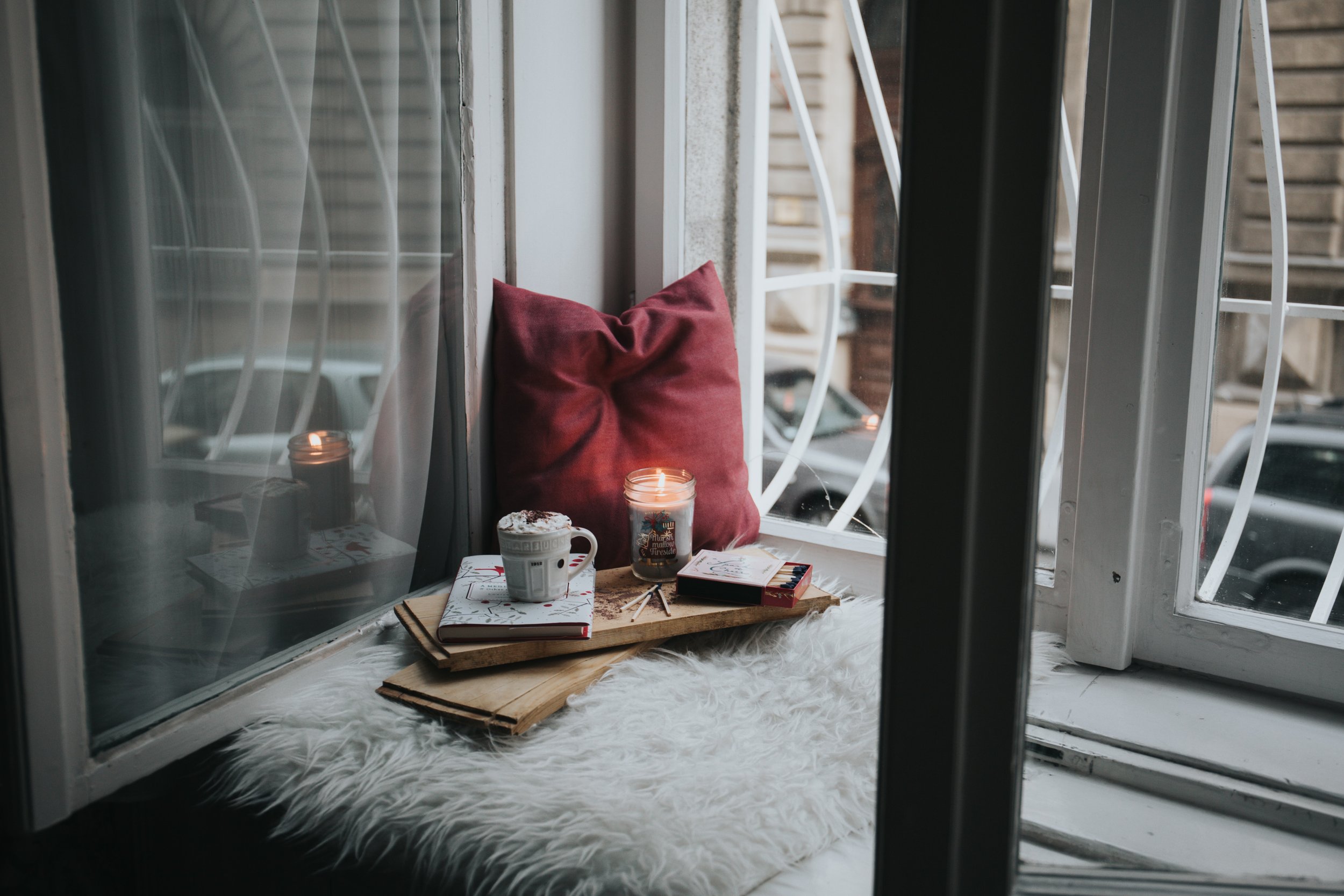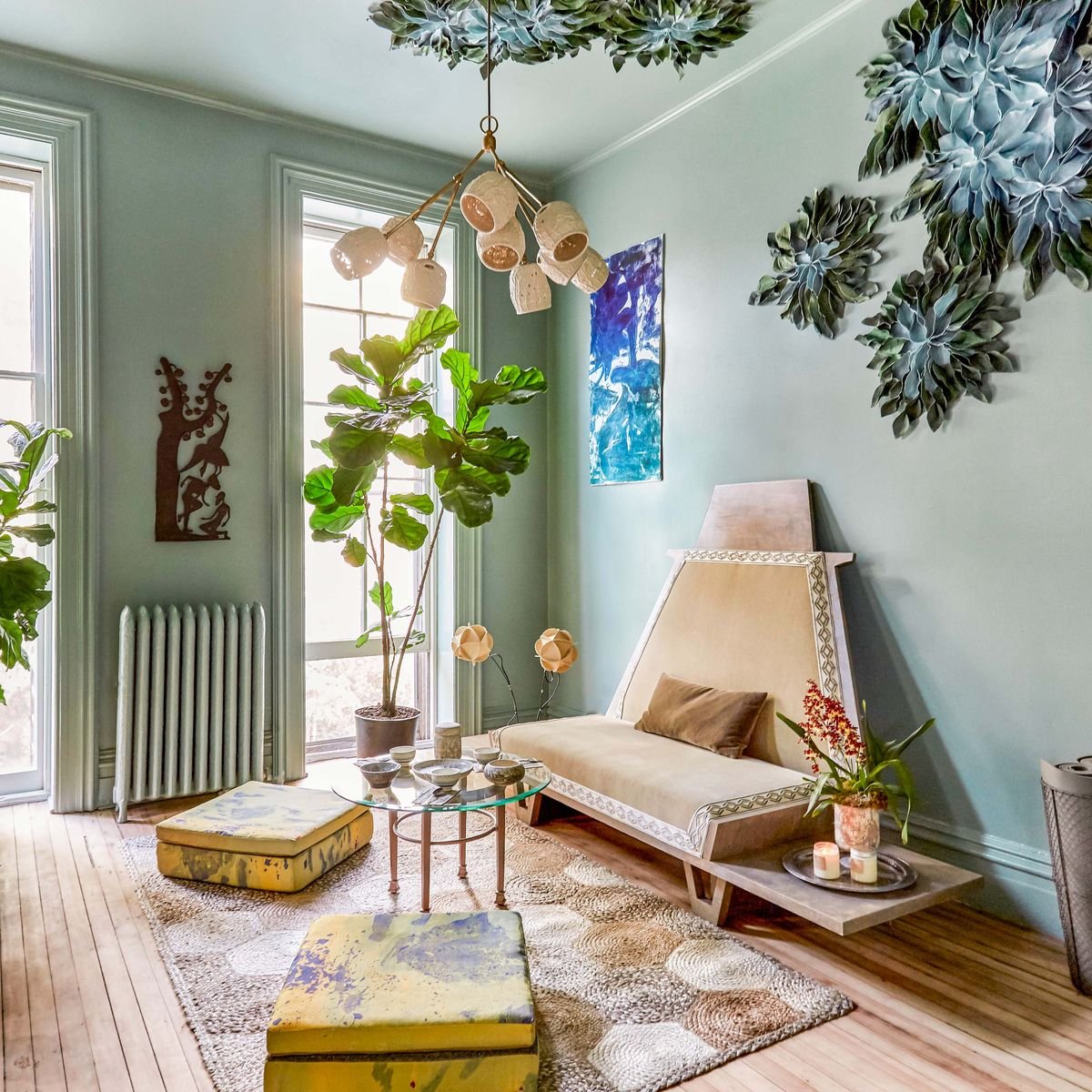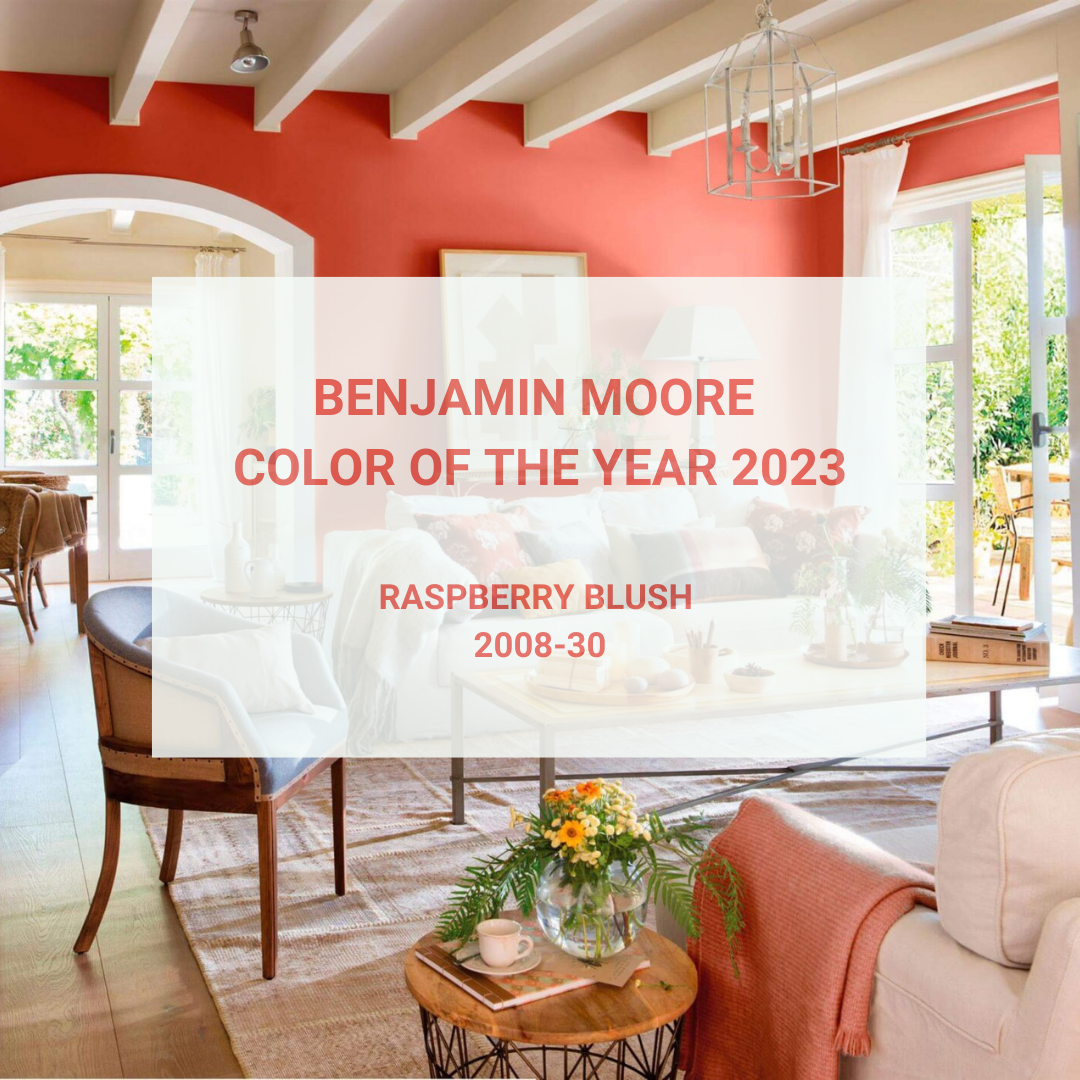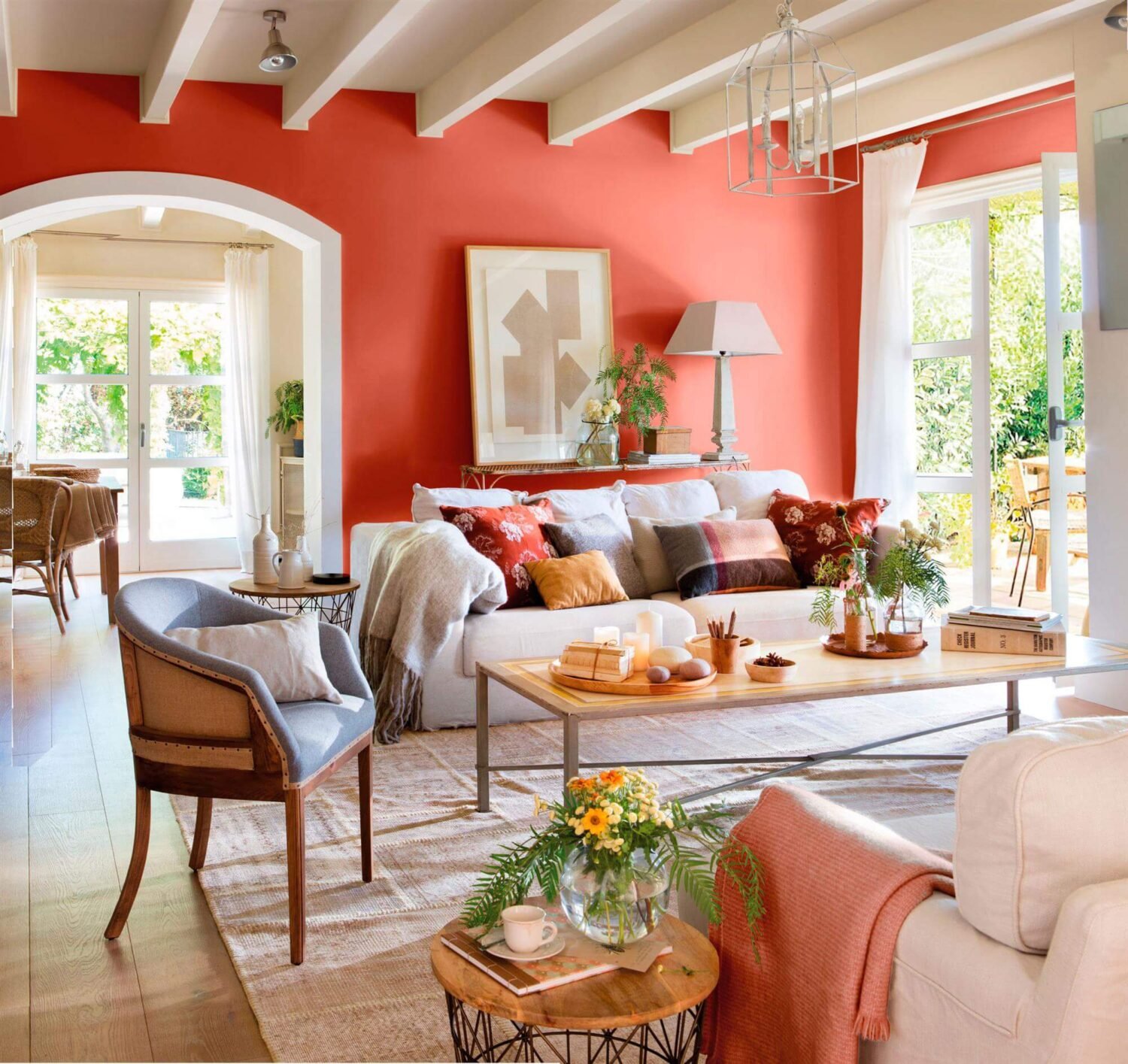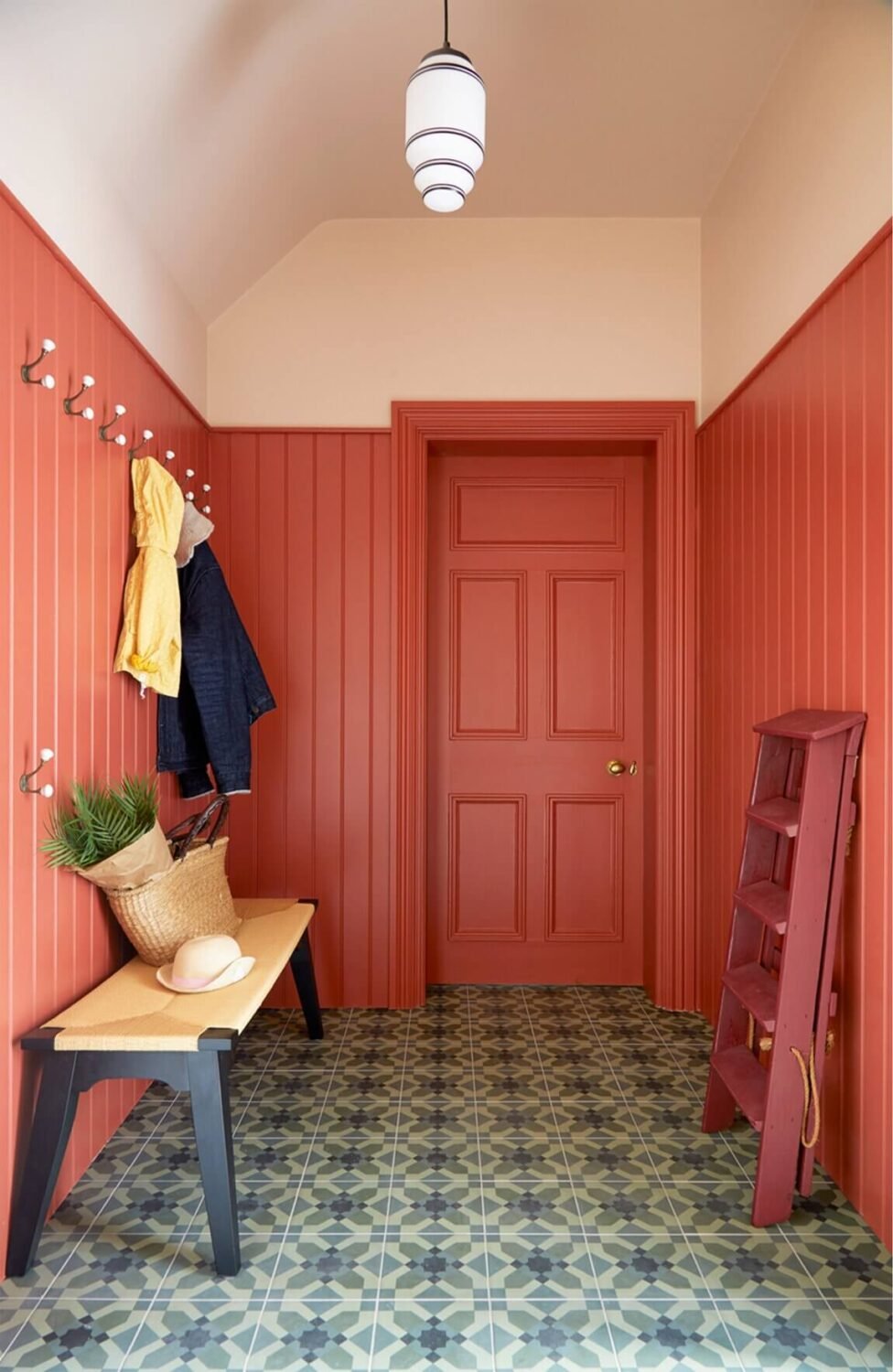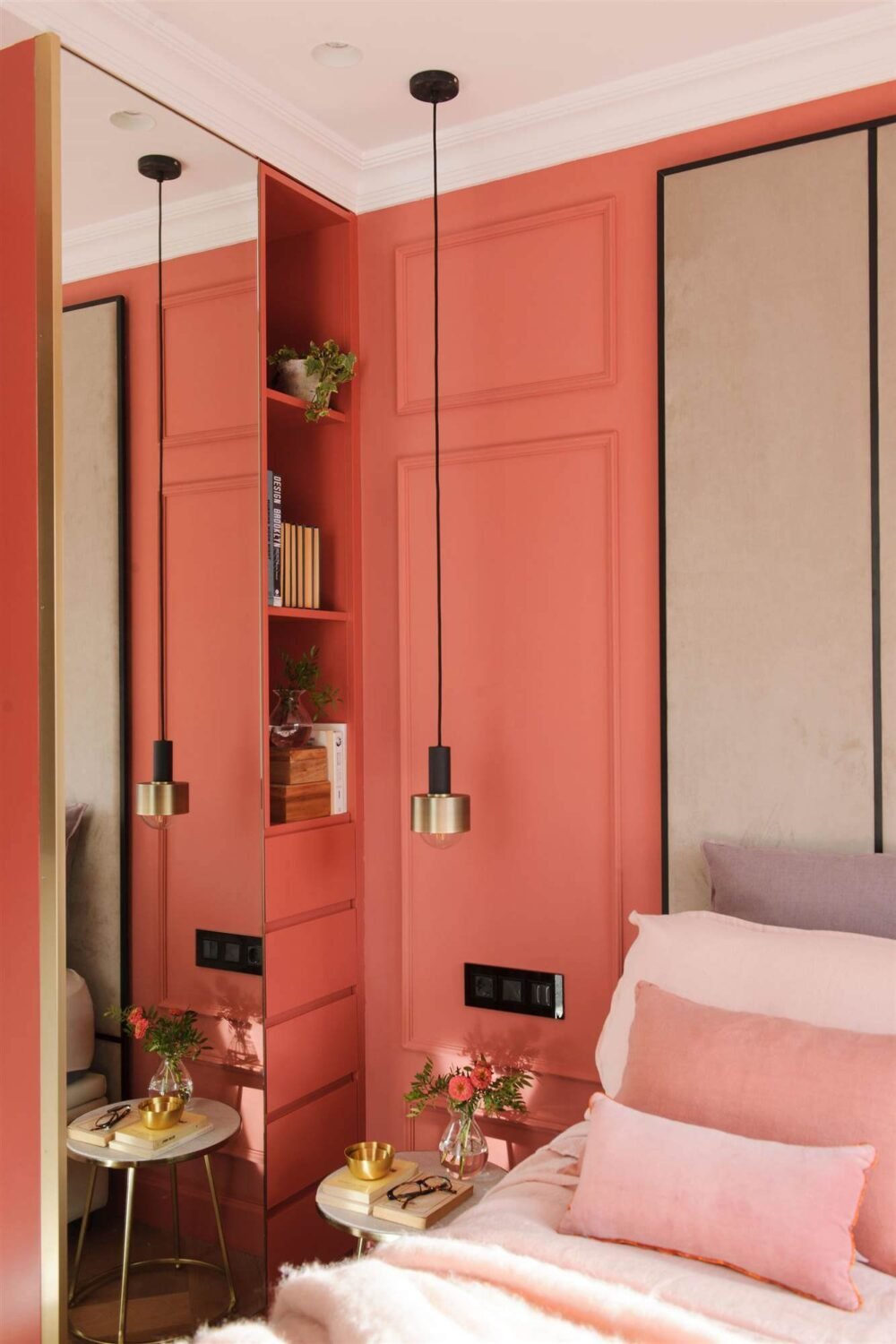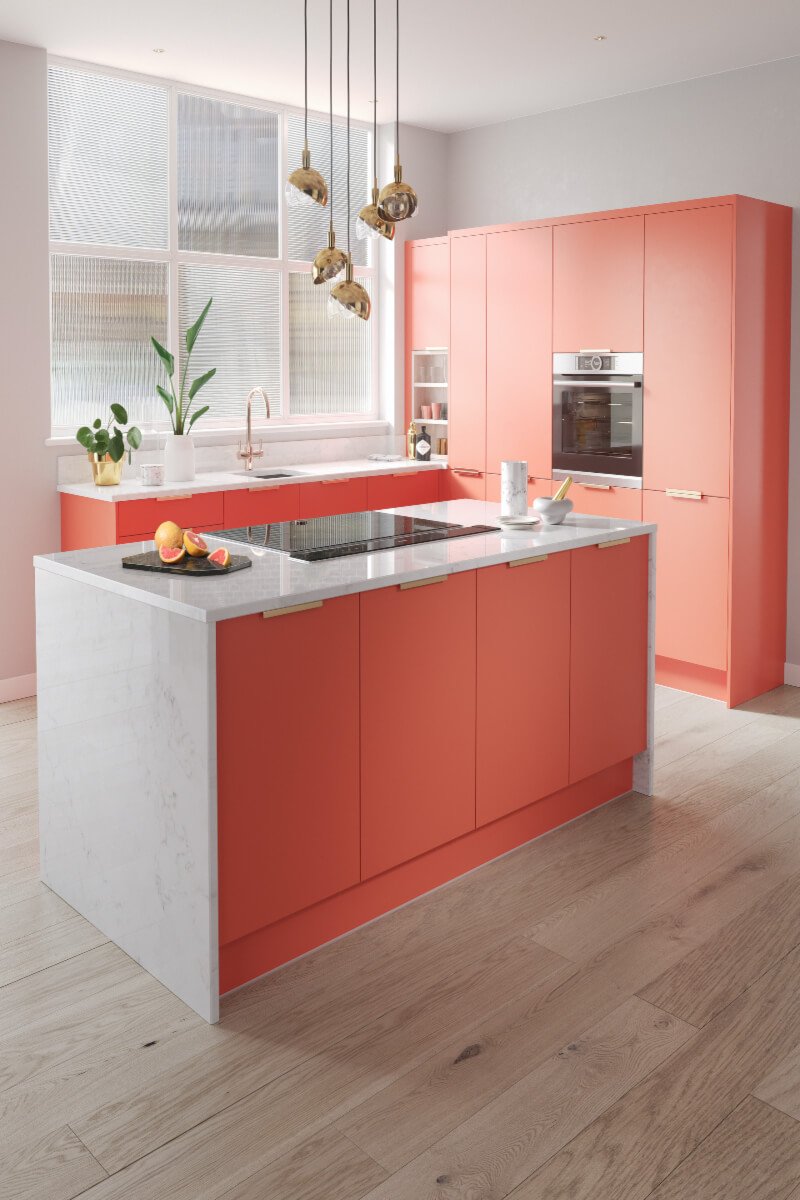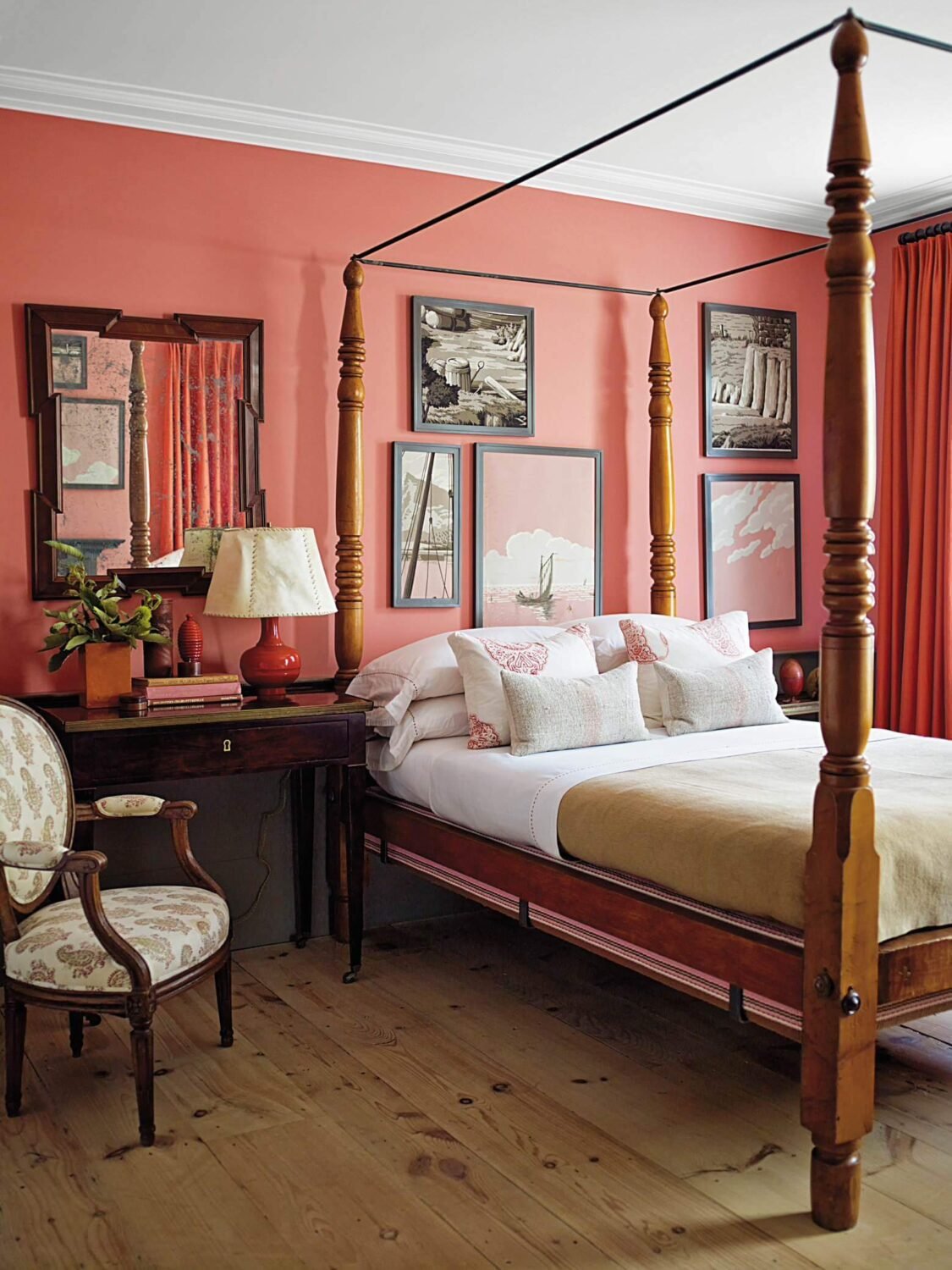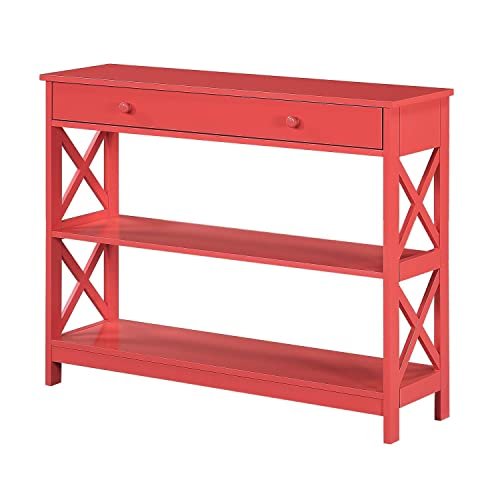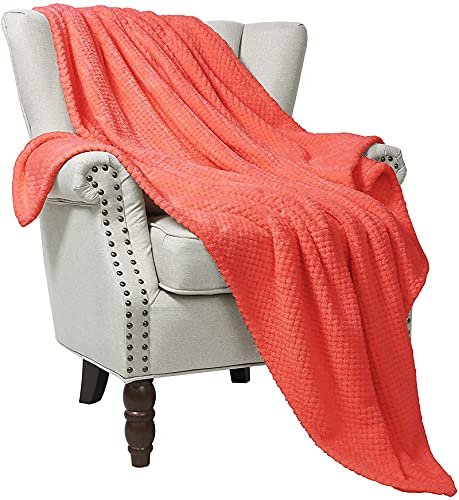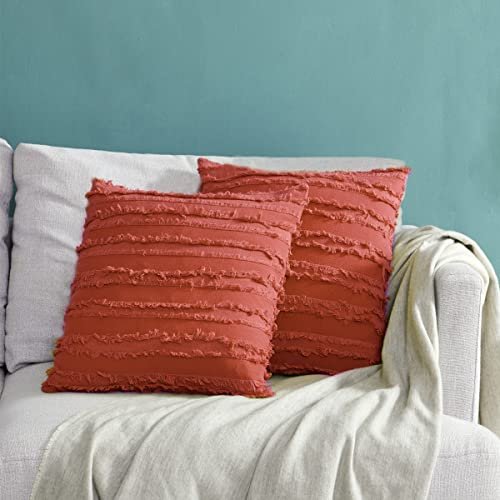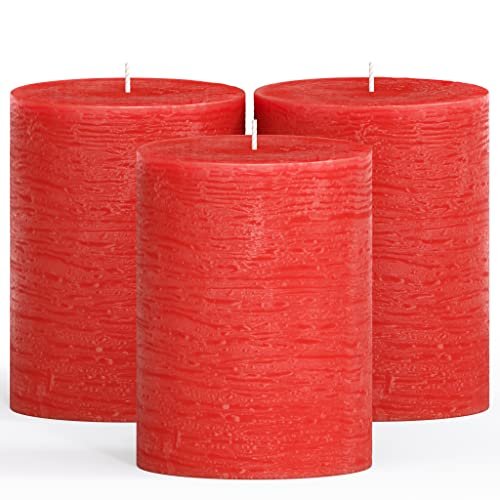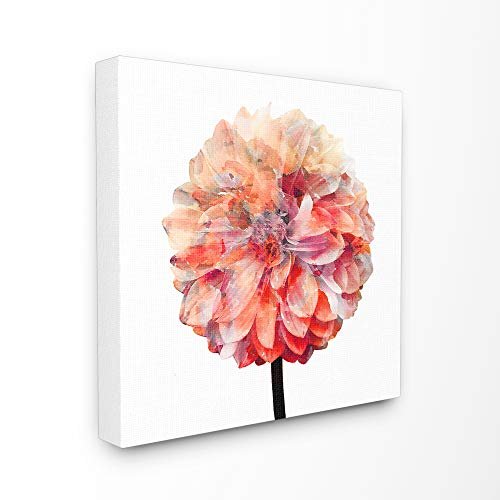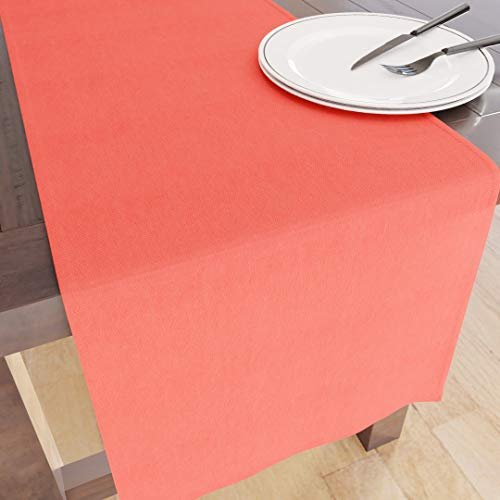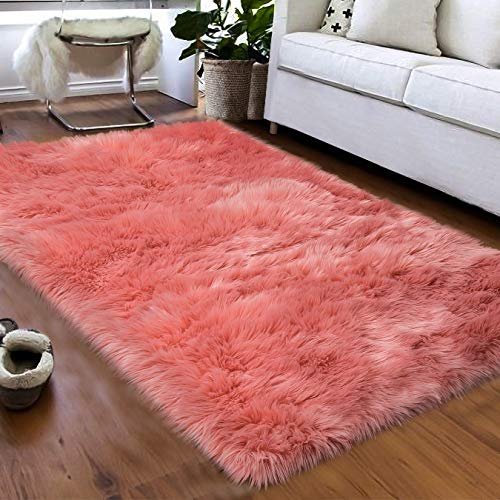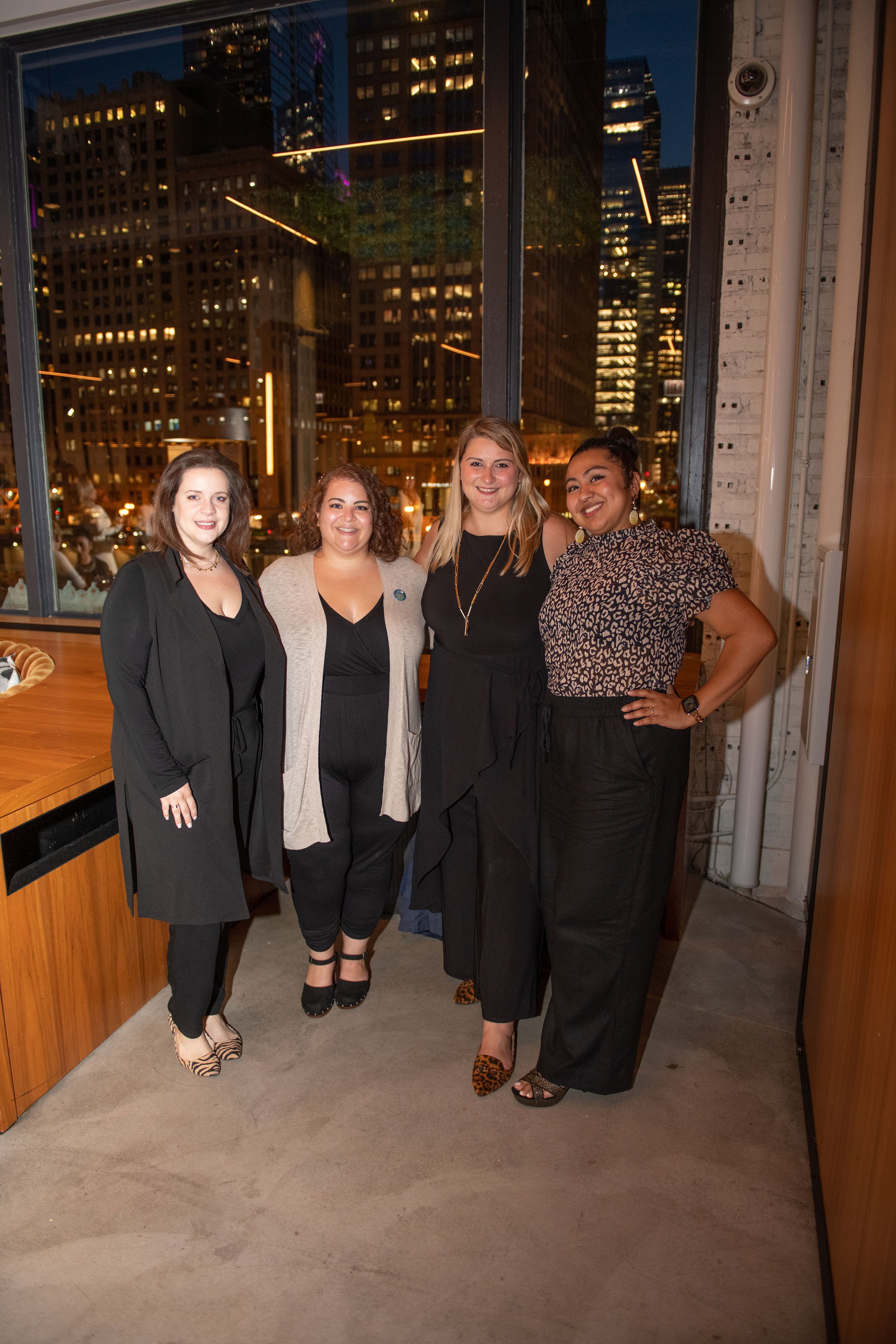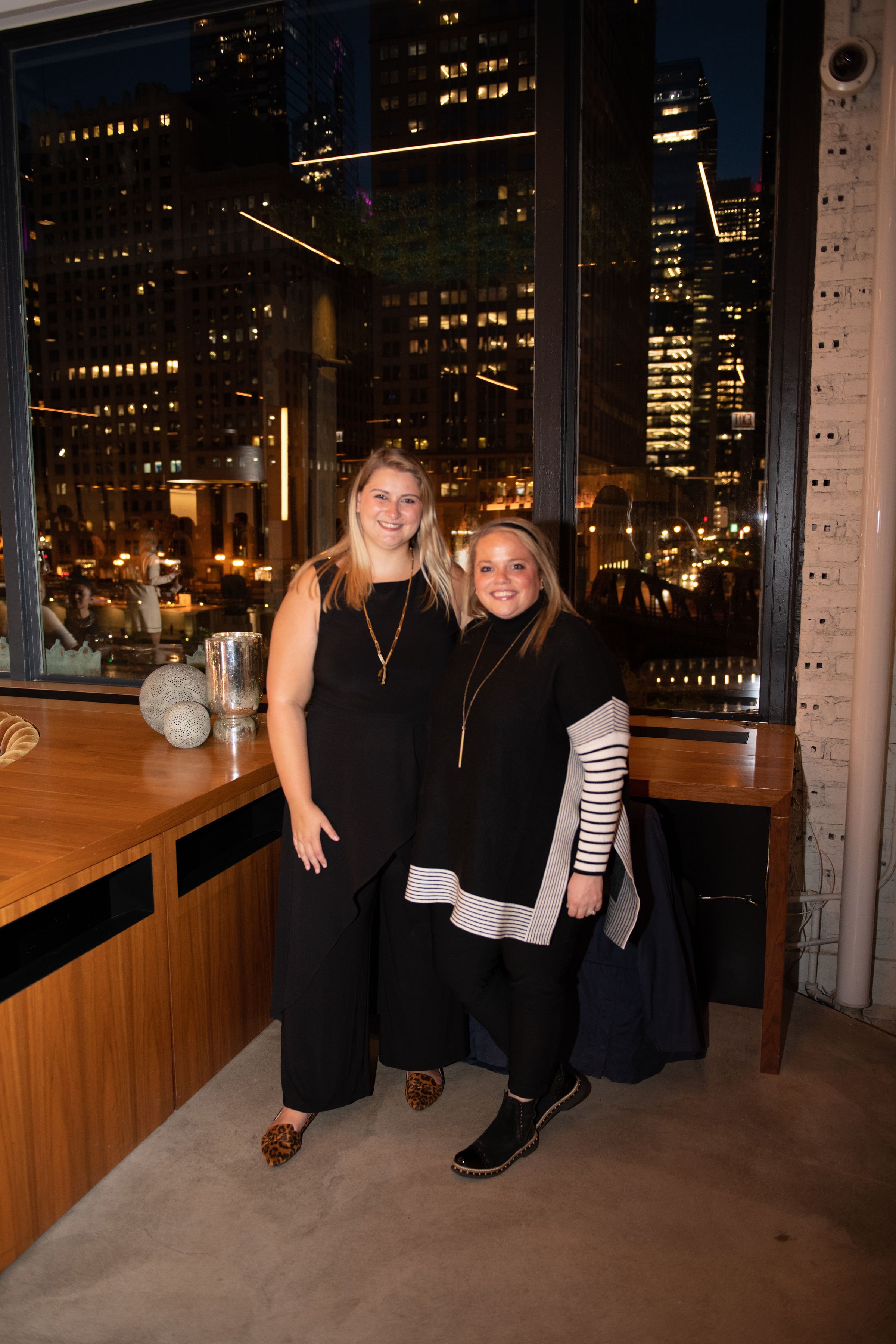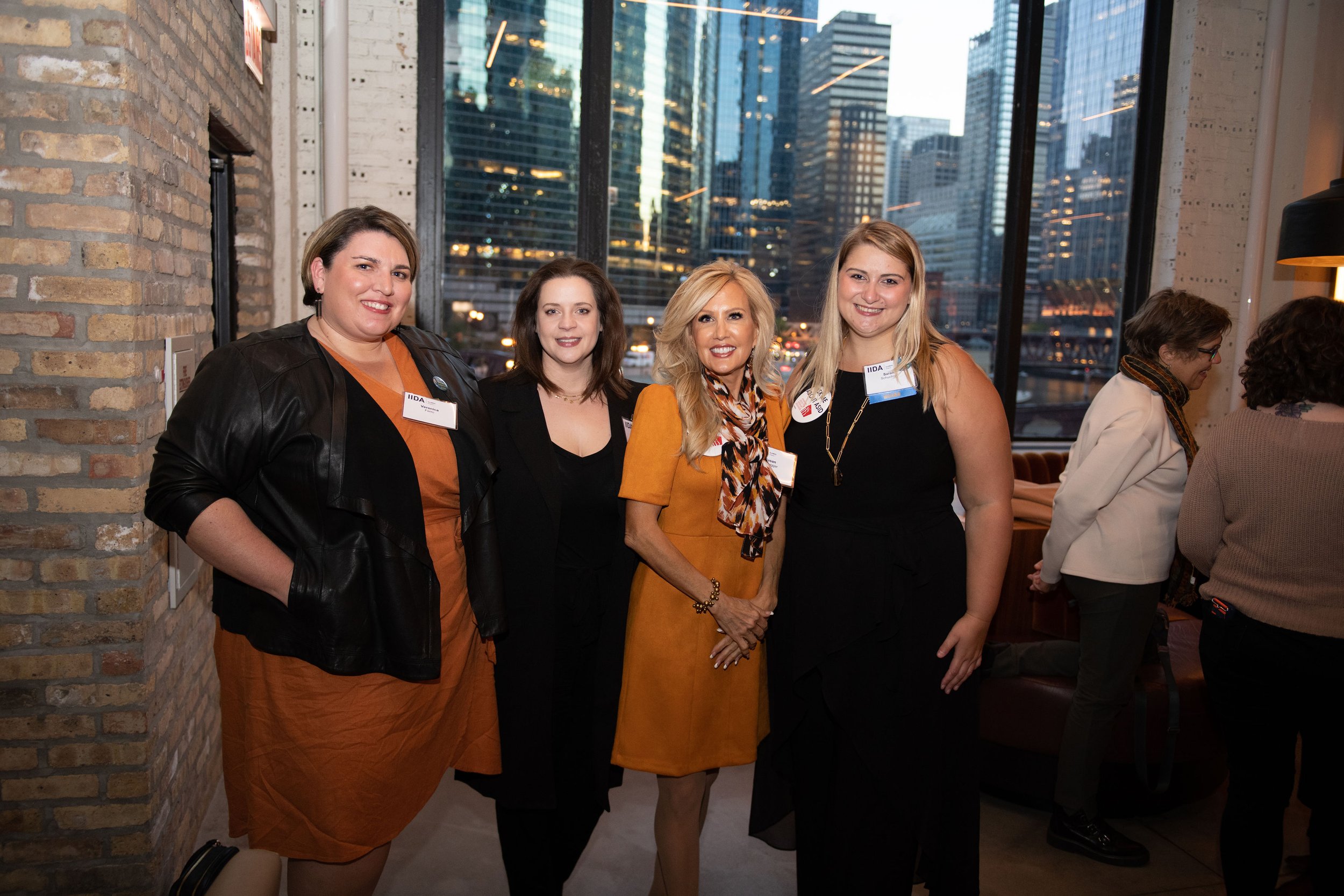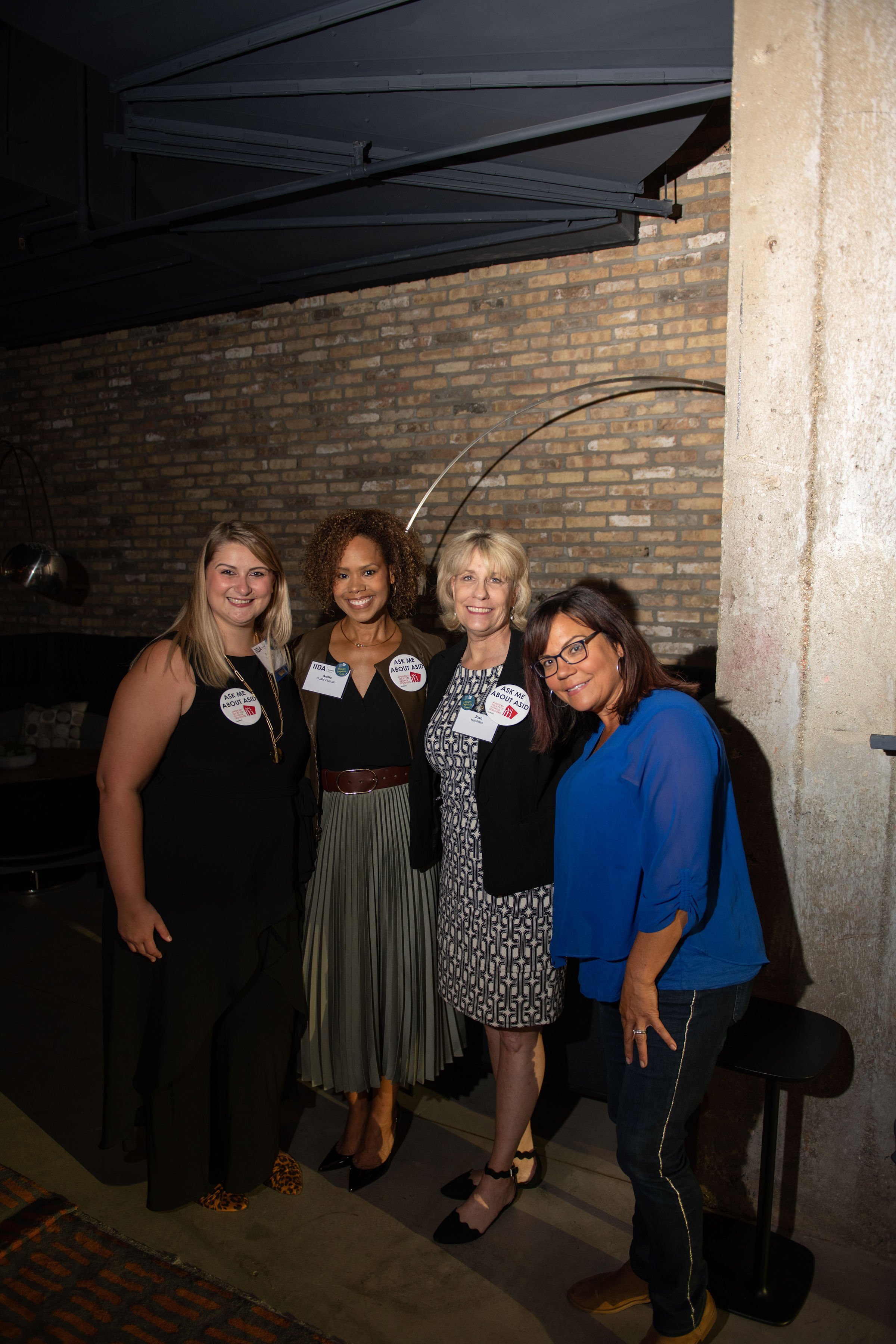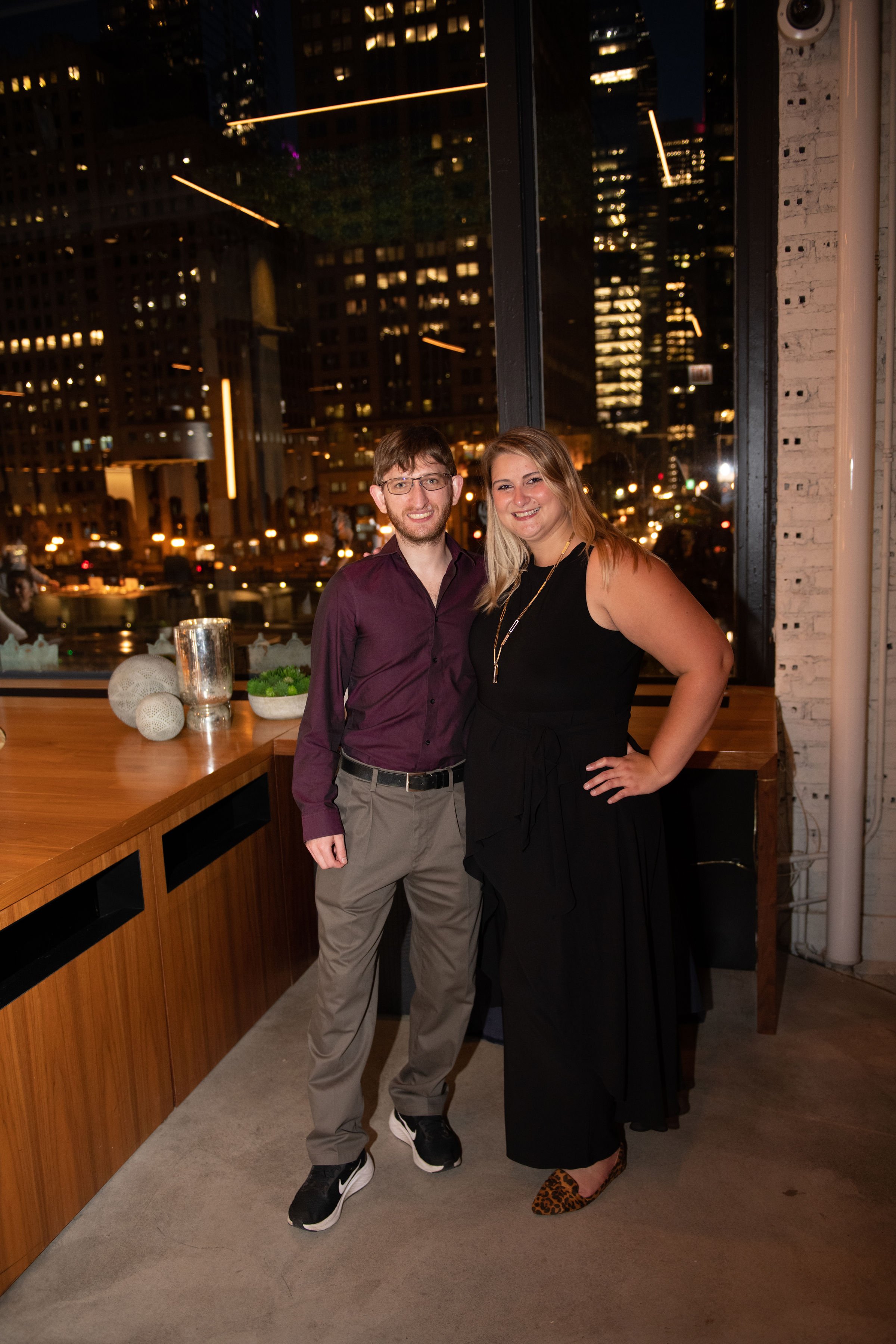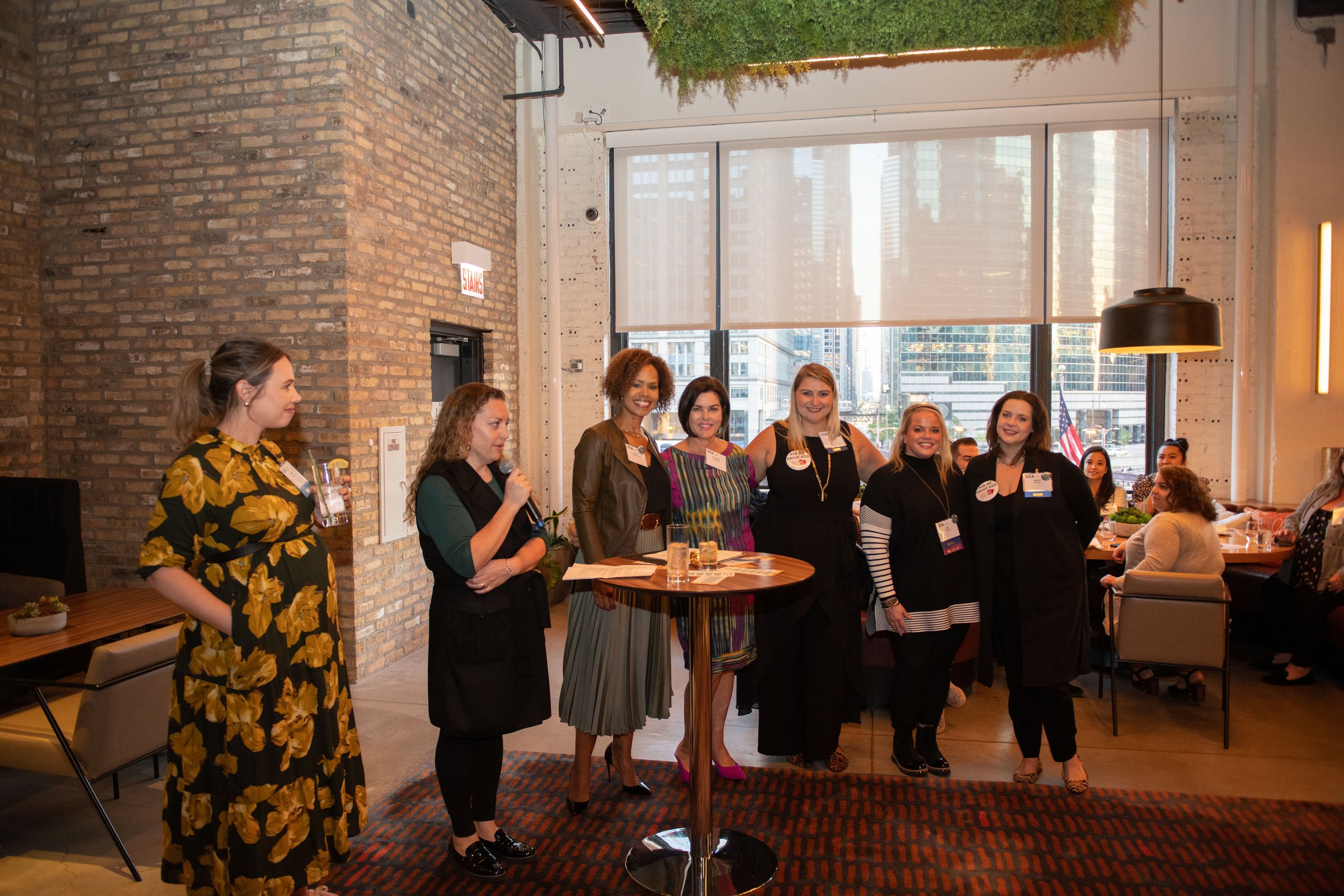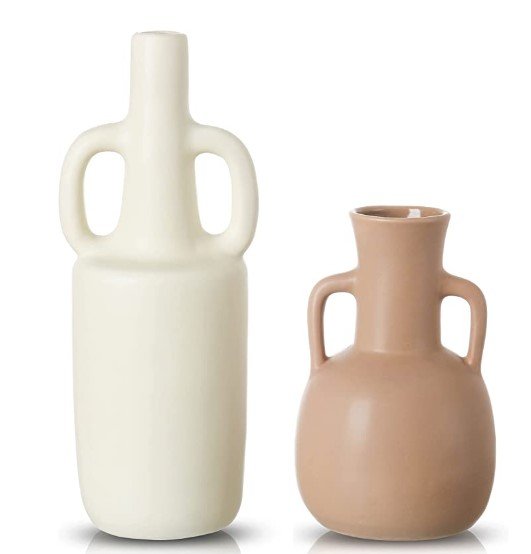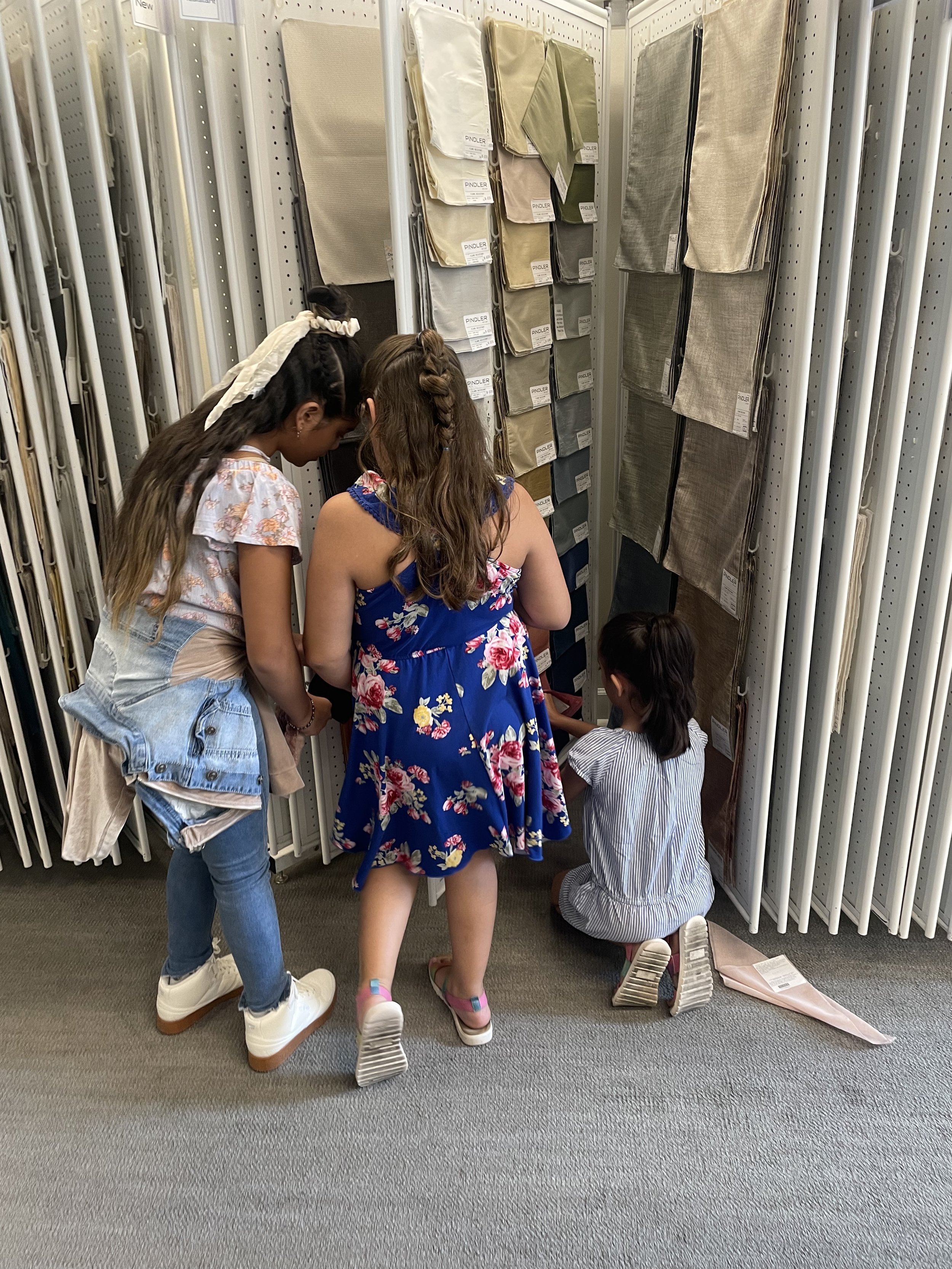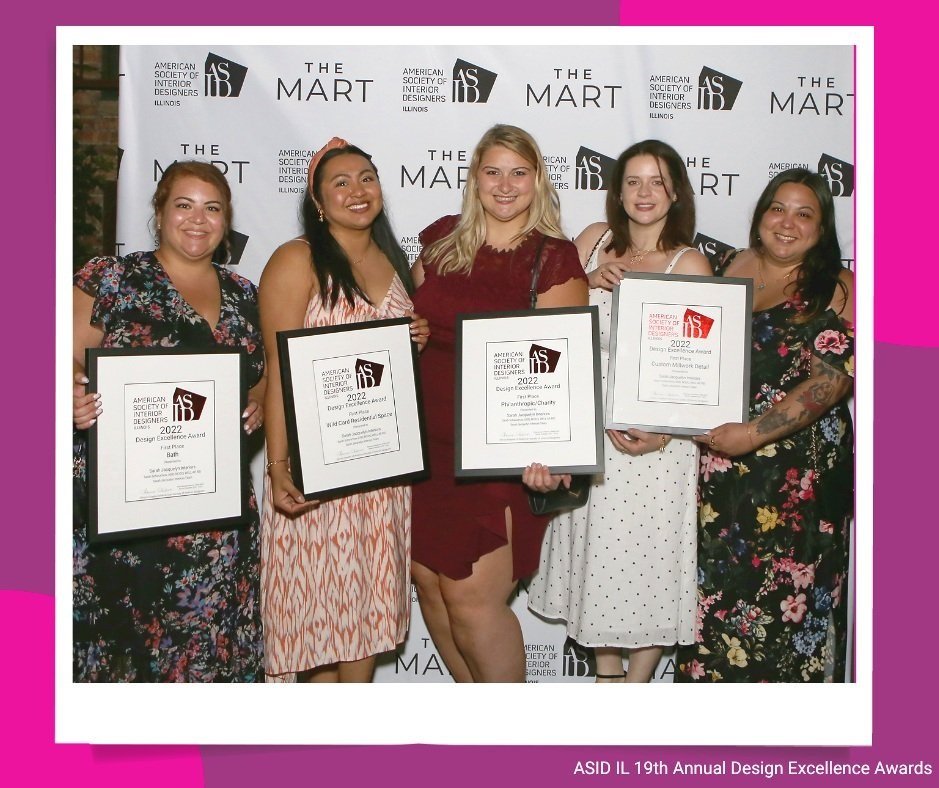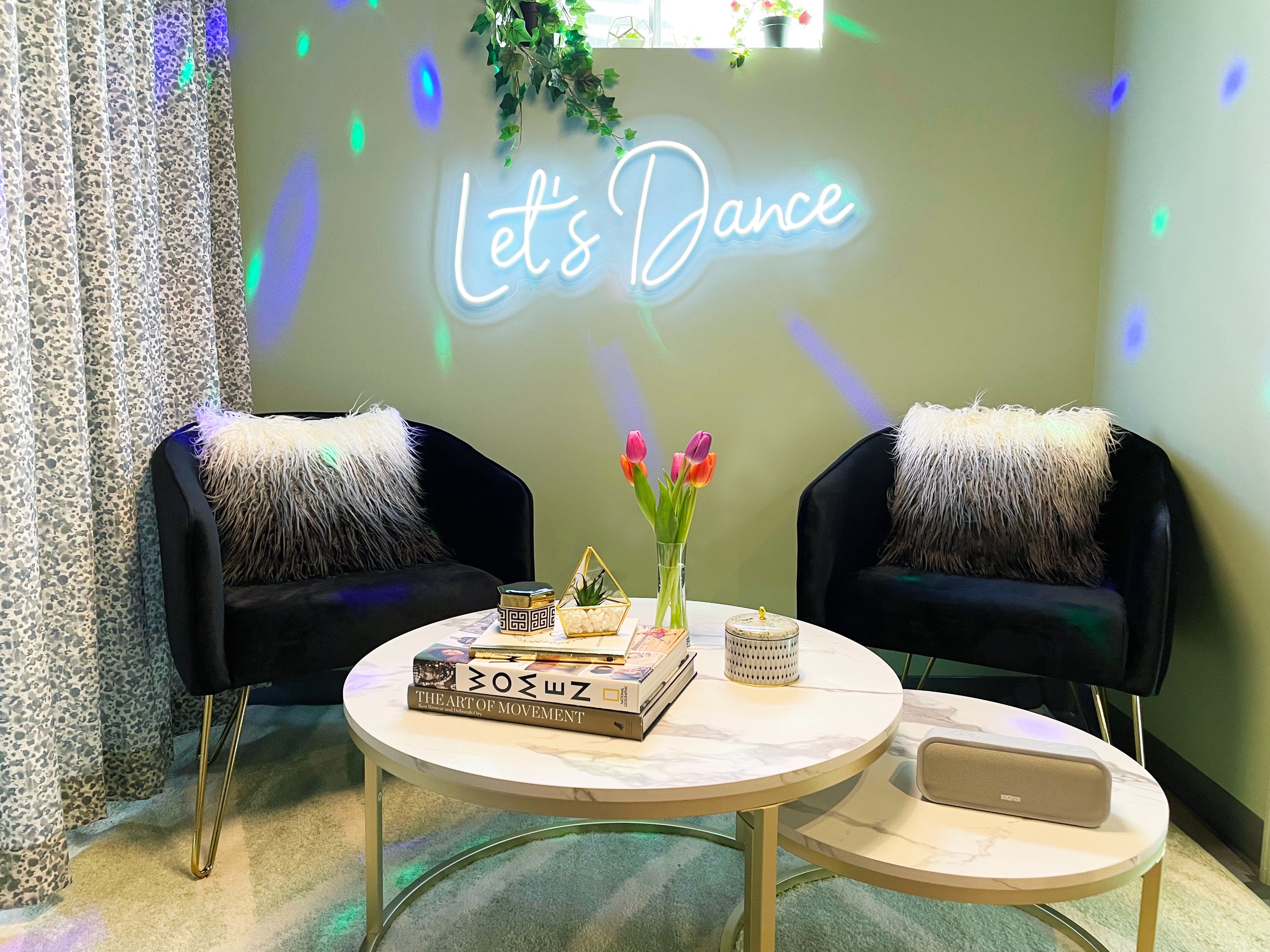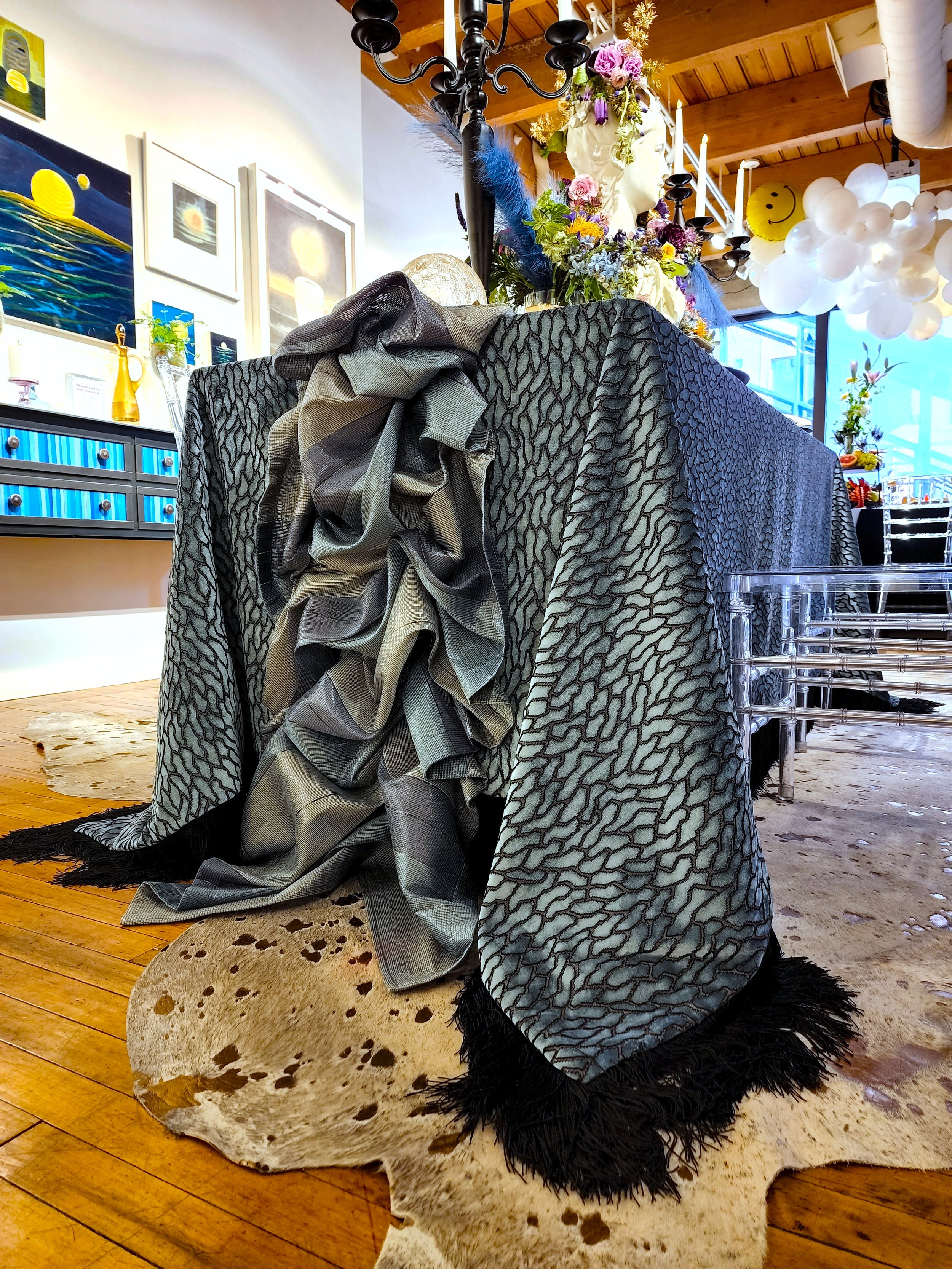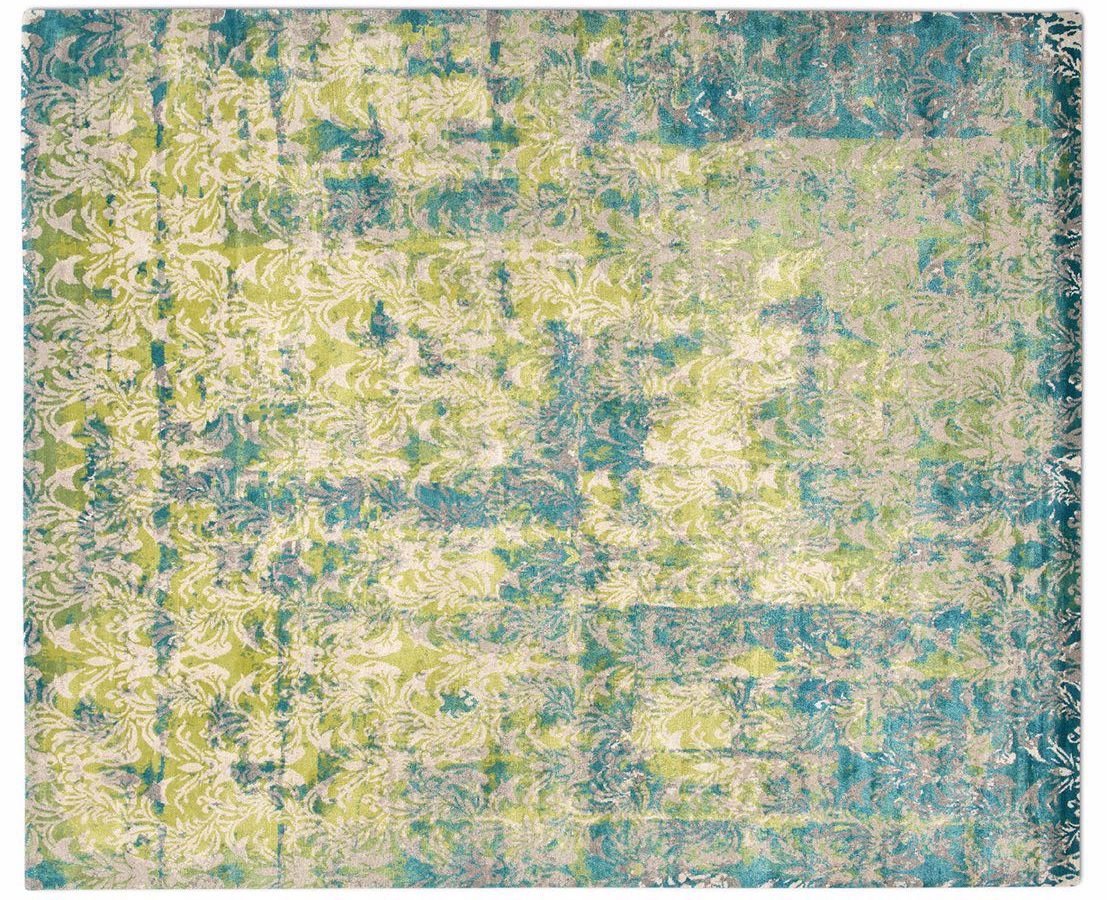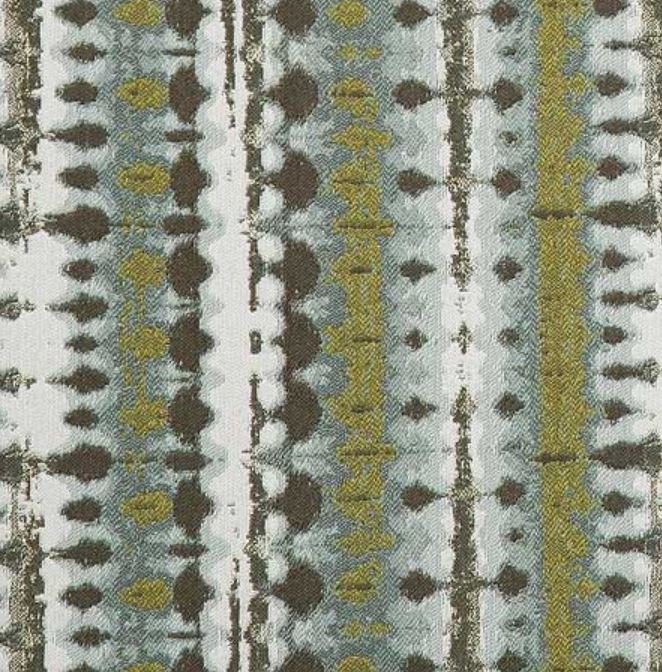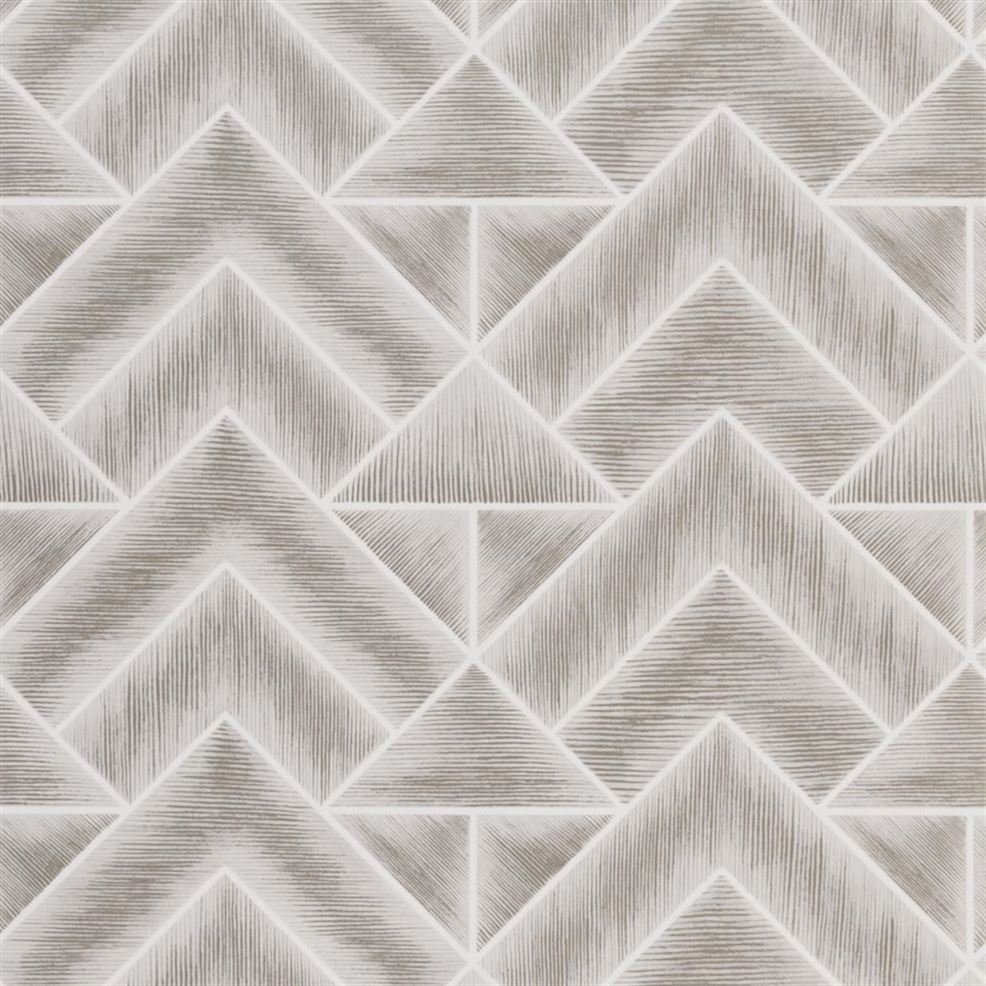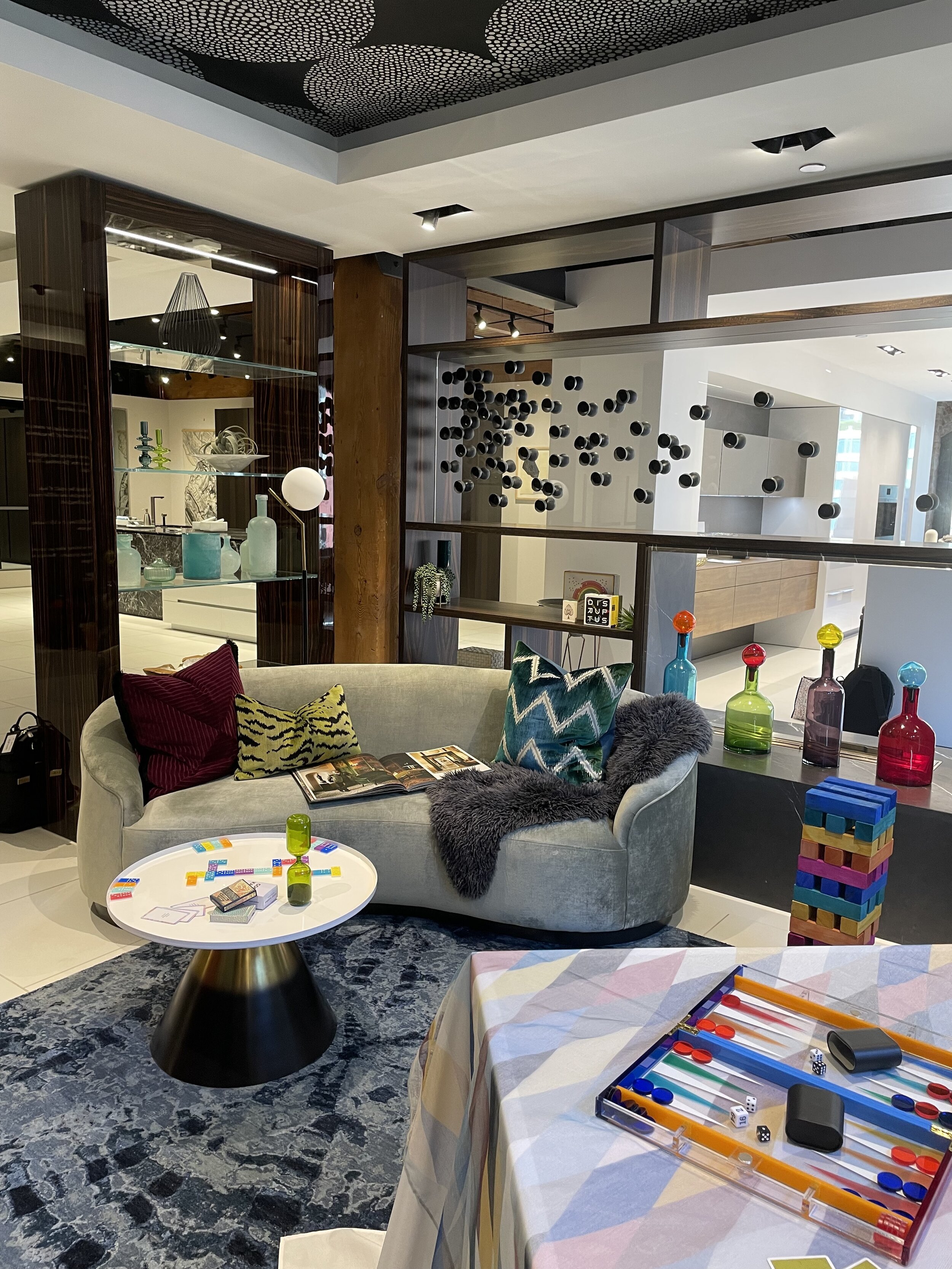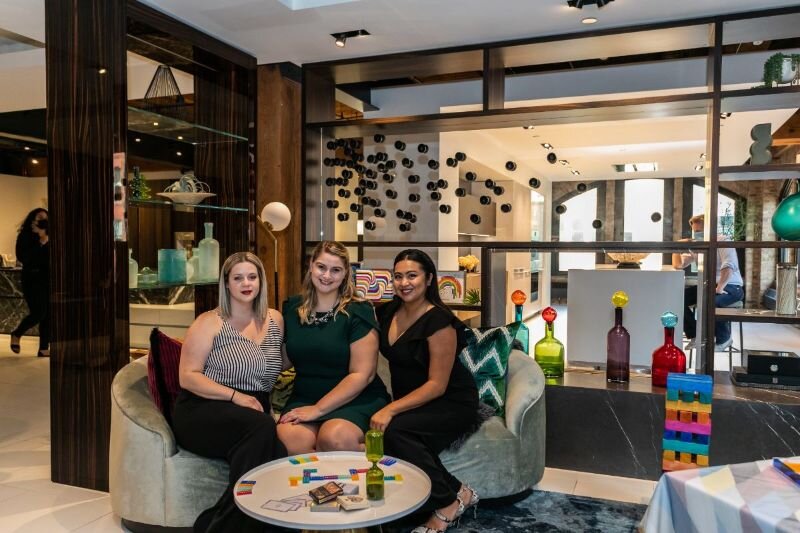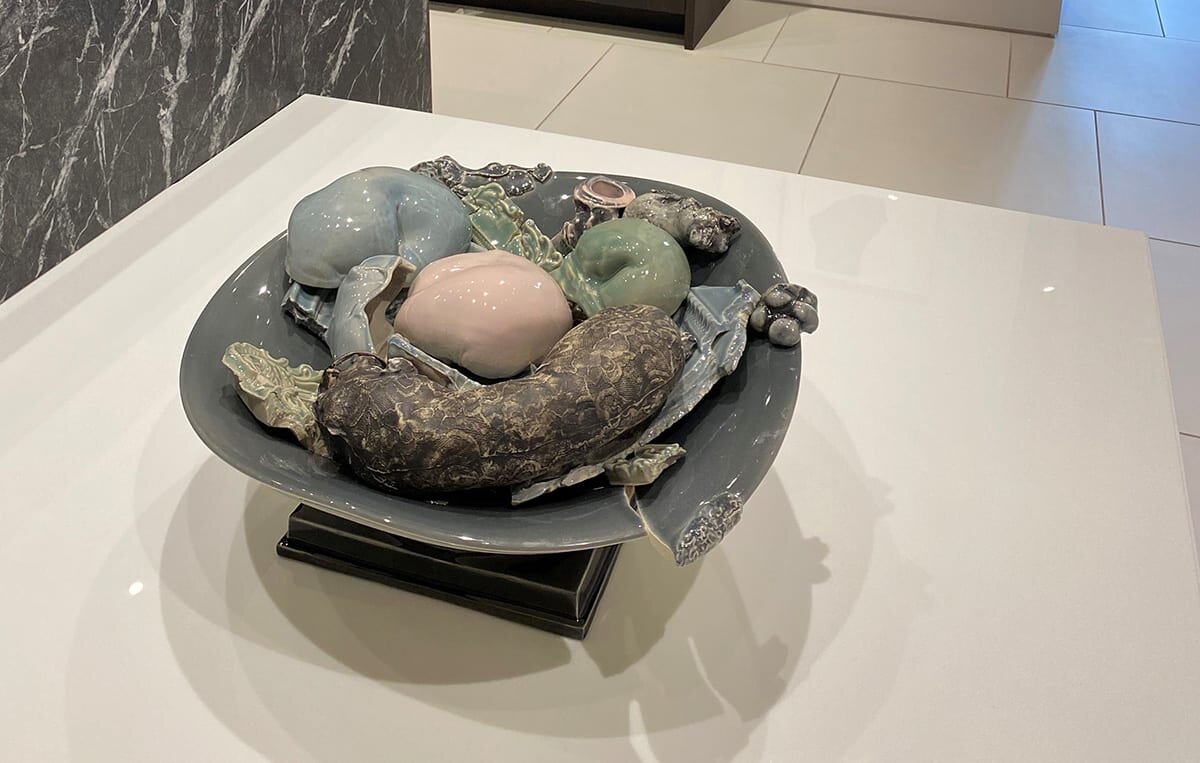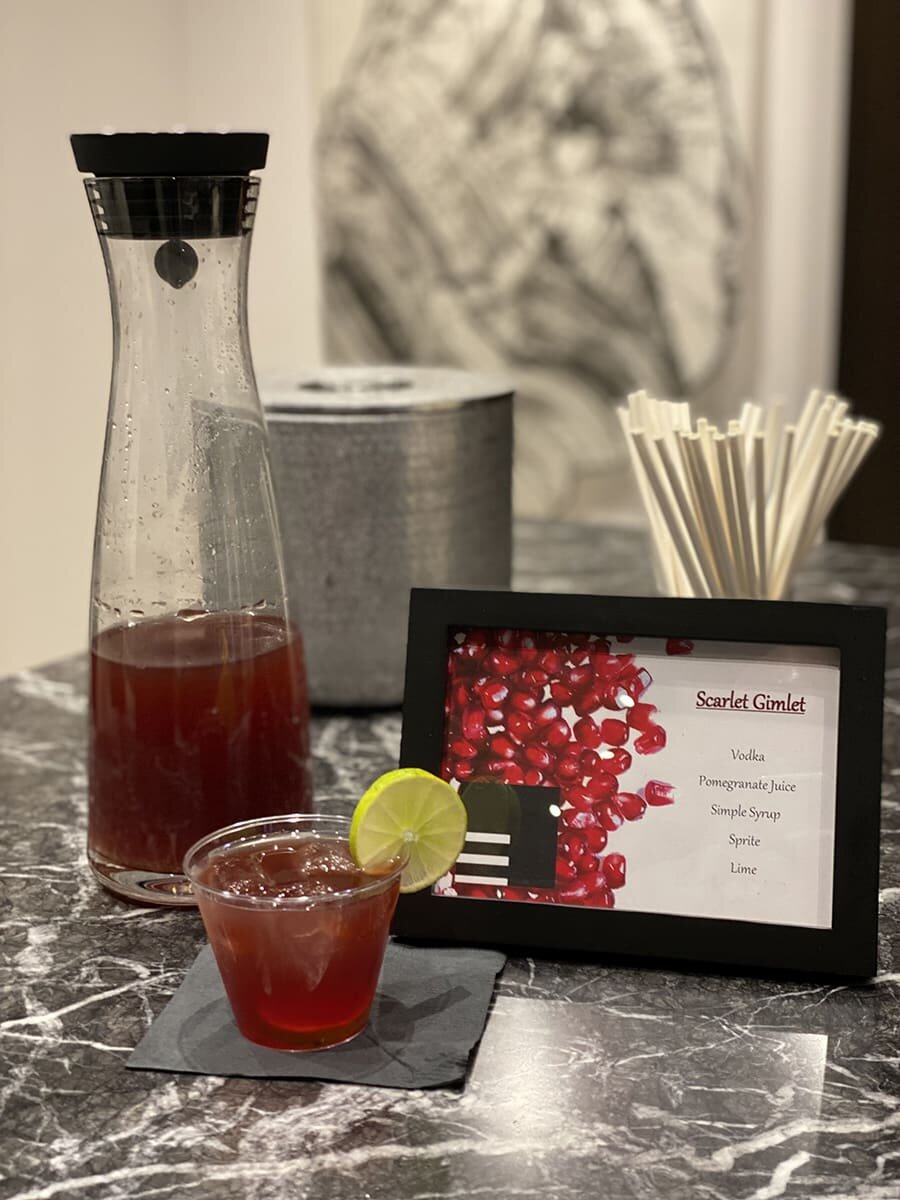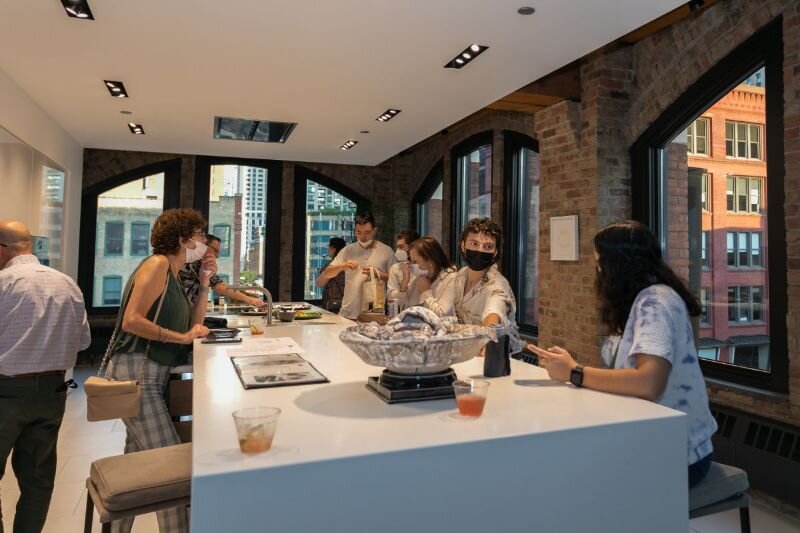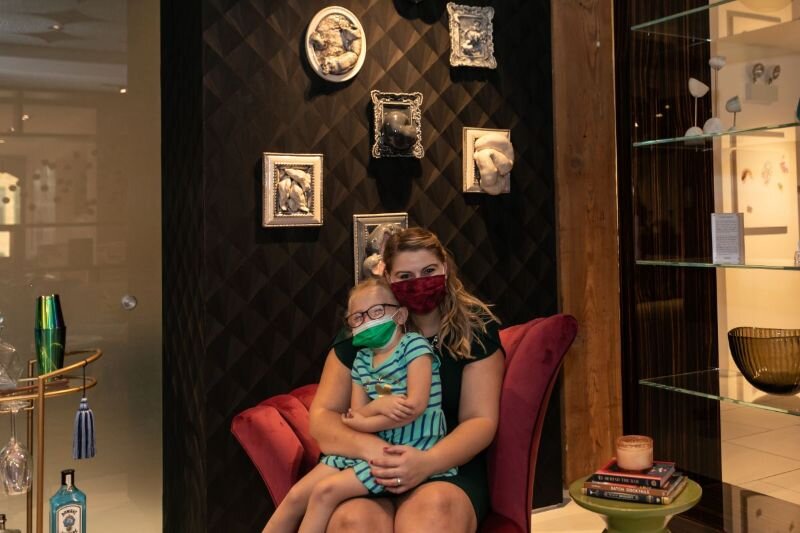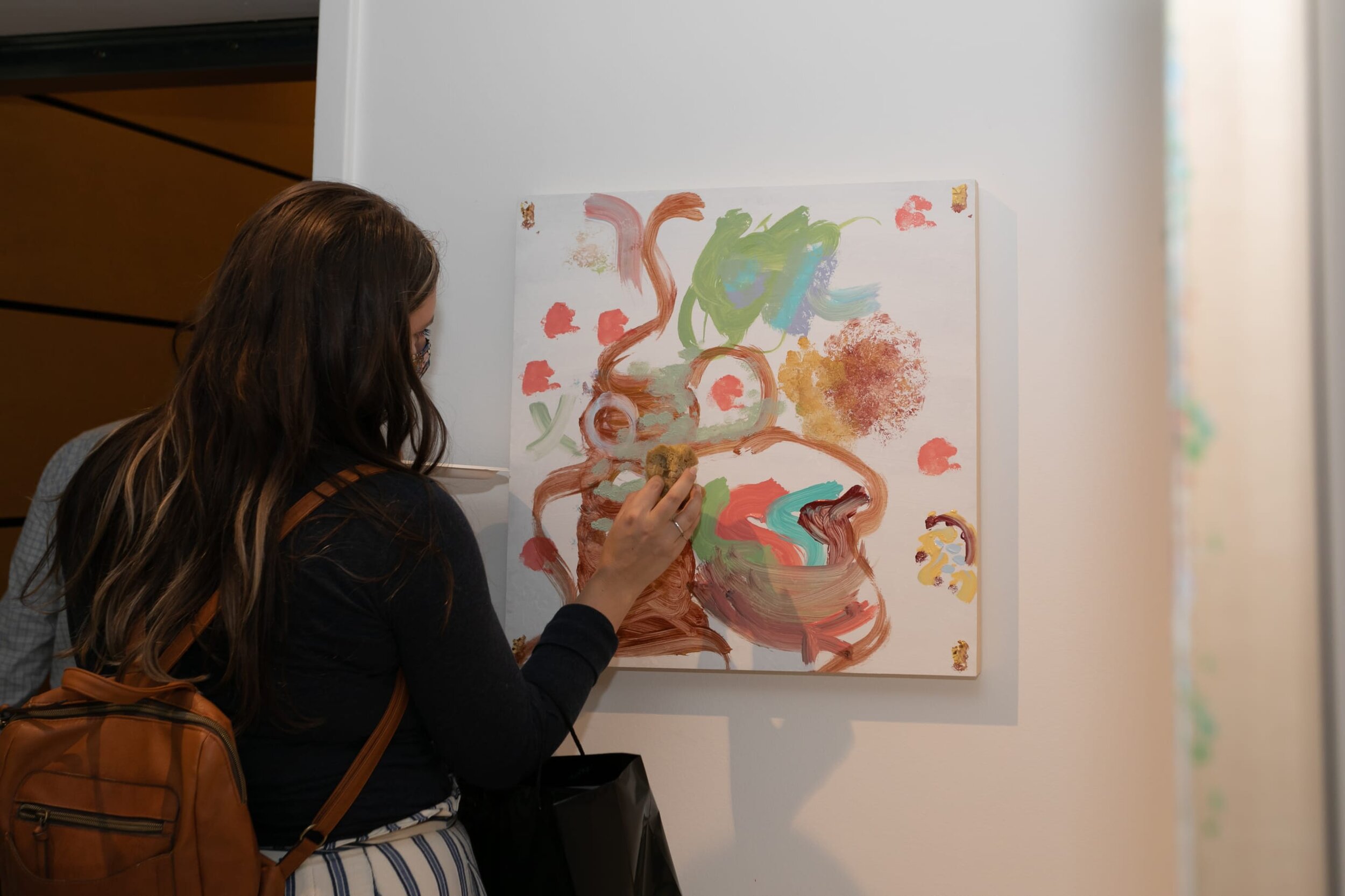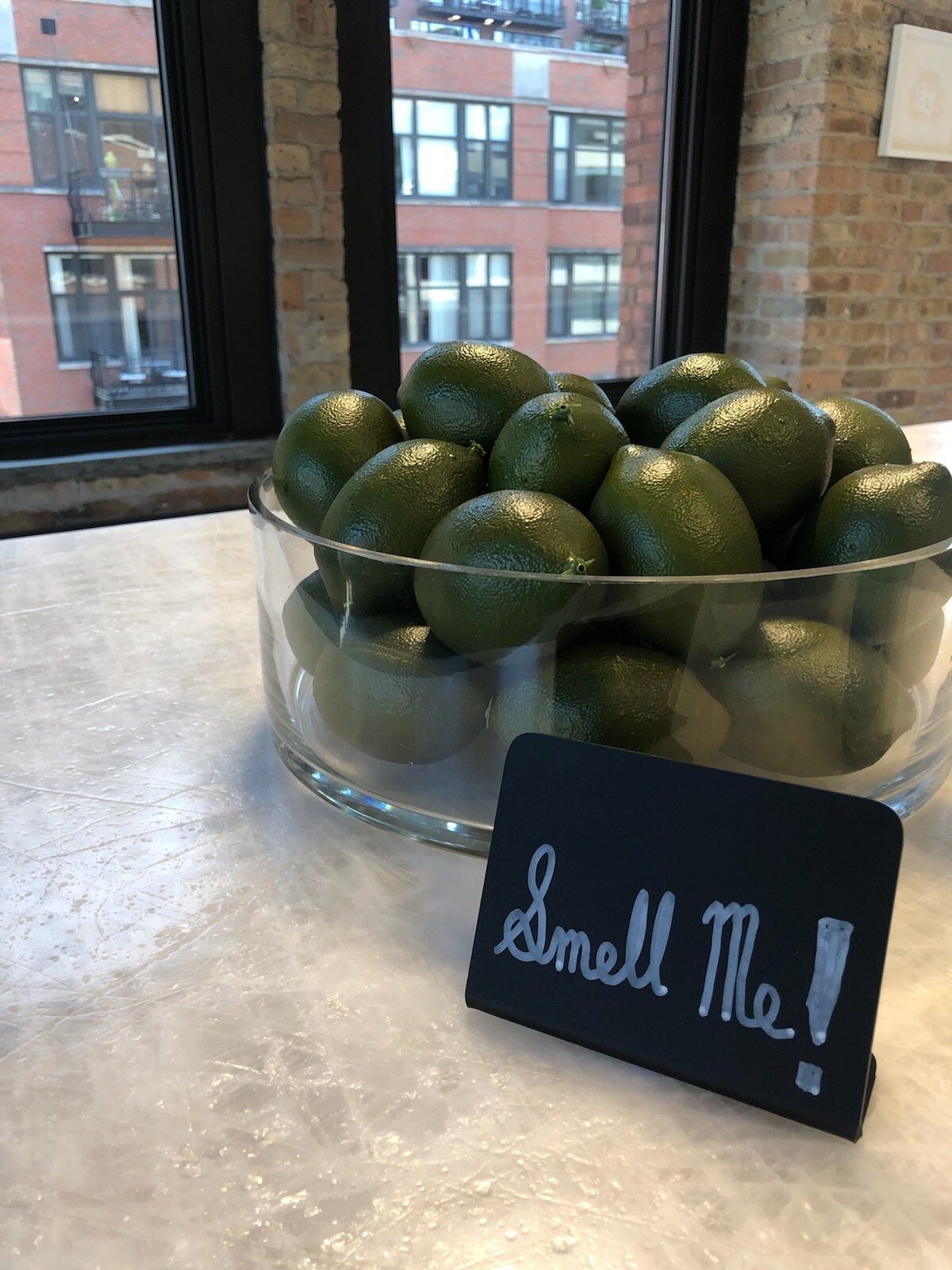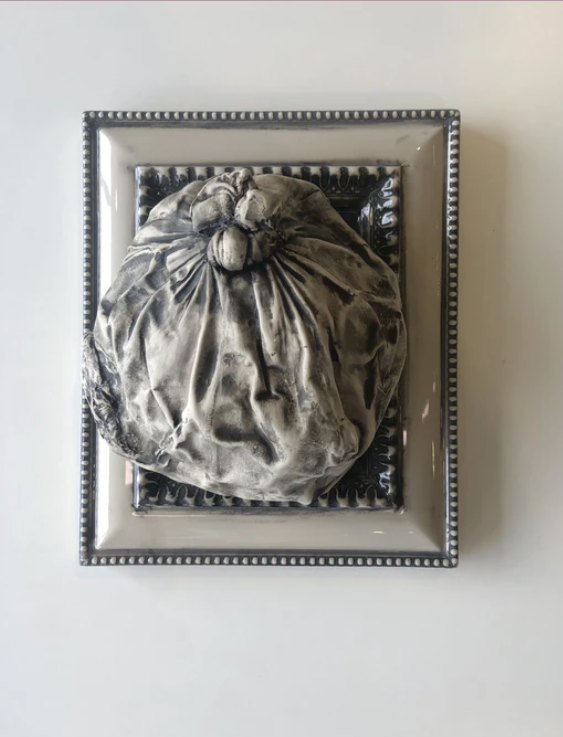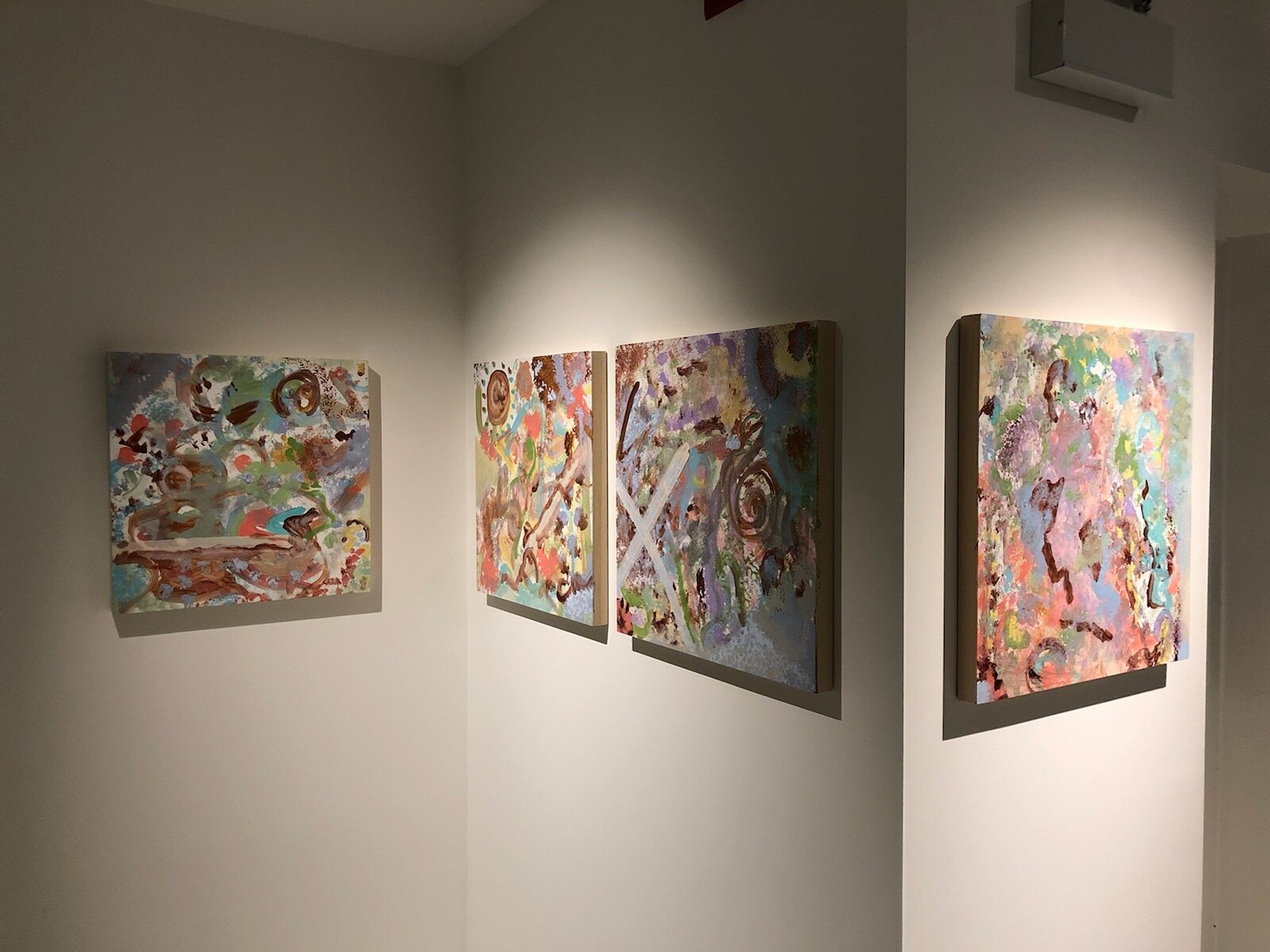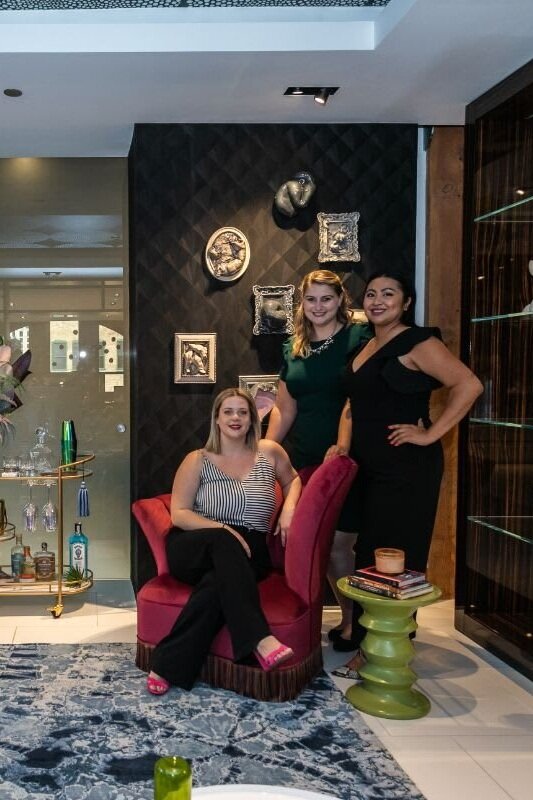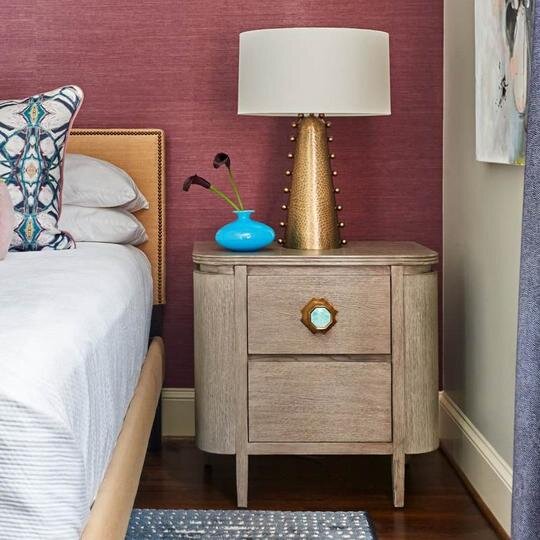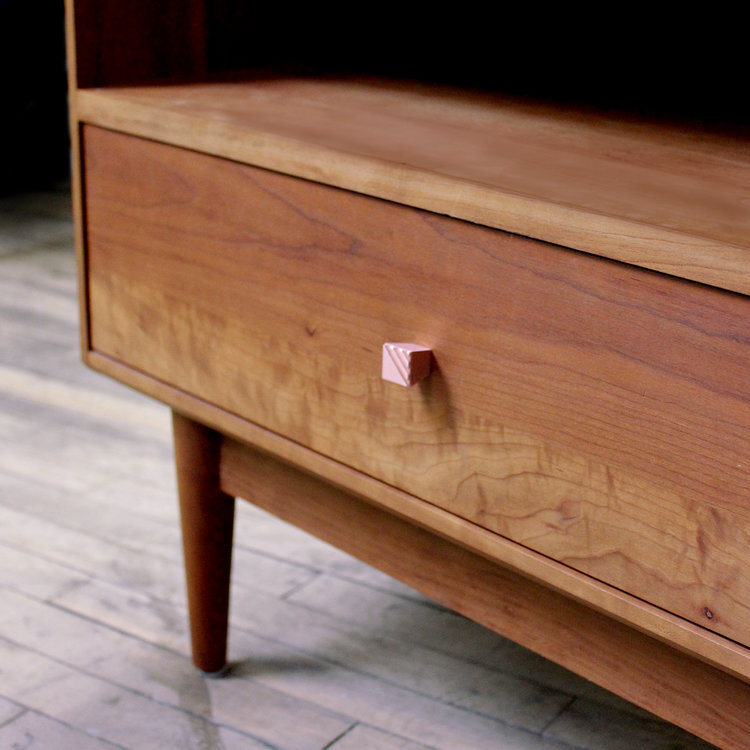
Our Top 5 Tips On How To Work With An Interior Designer
At Sarah Jacquelyn Interiors, we are committed to doing our research and educating the public on the ways that environmental and biological factors play a role in our health and wellness. Your wellness journey starts at home. Read on to learn how to design a wellness space, incorporating the seven WELL concepts for a healthier building.
What does an Interior Designer do?
Interior Design combines artistic and technical solutions to create beautiful spaces. It is the practice of making functional and aesthetically pleasing designs that enhance quality of life in living and working environments. Interior design incorporates space planning, circulation, furniture, lighting, finishes, fixtures, and supporting utilities in accordance with local codes and ordinances.
Designers create spaces that reflect their client’s lifestyles, establish a mood, complement the home's architectural features, and ensure function needs are met.
Additionally, an interior designer builds relationships with reliable suppliers, artisans, vendors, and contractors who carry out the design.
An Interior Designer Can Help You:
Realize your vision
Solidify your ideas
Create a comprehensive and well-planned project
Addresses your functional needs
Offers elegant and practical solutions
Navigate complex building codes and city ordinences
Coordinate with contractors
Ensure the job is done right
Help you stay on budget and schedule
Even if you have a clear idea of what you want your home to look like, an interior designer can help you bring it to life while making sure it is functional and well-planned. As a trained professional, an interior designer can come up with solutions that you might never have thought of as a result of their sharp eye and creative mindset. Paying attention to even the tiniest details will make your space look polished and put together.
Working with an interior designer can be intimidating and overwhelming, but ultimately, they are there to be your advocate and work alongside you to turn your home into an extension of who you are.
Read on to learn our top 5 tips for working with an interior designer.
5 Tips for working with an interior designer
Make Sure It’s A Good Fit
Establish Trust: You’re going to be spending a lot of time with your designer, so you need to trust them and build a relationship with them. They will often see a vision for your space that you’re not able to visualize that will be the perfect solution for your home.
It’s Not Always About Style: You’re not necessarily looking for style, many designers work in a variety of styles to meet their client’s needs. You’re not hiring that designer to duplicate work they have done for a previous client, you're hiring them to create a unique space for you!
Designers Are Your Advocate: They represent your best interest, make sure the contractors are following the drawings, and that the design is being executed accurately. They make sure the pricing is fair from vendors.
2. Be Upfront And Communicate
Creative Direction: Don’t put your designer in a box; Give them your taste and preferences without restricting their creativity. You are hiring them for a reason and they are the expert. Try using magazine pull-outs, Pinterest boards, etc. to provide some direction, even if you only have a hazy idea of what you want.
Have The Budget Conversation: Communicate and establish a budget early and be prepared to spend it. A good designer will educate you on realistic product costs for your project goals.
Focus Your Attention: Make time for your Interior Designer and try to eliminate any distractions during meetings.
Communicate Promptly: Replying to emails, phone calls, and making design decisions in a timely manner are essential to ensure accurate pricing and a seamless project.
3. Expectations
Do Your Homework: Complete any style or budget questionnaires that your designer sends.
Don’t Put On A Show: Leave your house messy, that’s how you and your family live! It’s our job to figure out functional solutions to solve those challenging issues like- never a place for your coat, shoes everywhere, and toys piling up in the living room. We can’t solve a problem if we don’t know it exists.
Don’t Rush Design: Your home is an investment, take your time to go through the process, listen to your designer, and be flexible with the timeline.
Products Get Delayed: Manufacturer back orders, shutdowns, and delays happen. Trust us, we are just as frustrated and on the phone trying to figure out what happened and when it will arrive. We would drive your new dining chairs here ourselves if we could. Lead times should be expected.
4. Utilize Their Skills and Resources
Eliminate Headaches: Your Interior Designer is the expert in design and project management; utilize them to manage all of the individual parties involved in your project (Contractors, Architect, Building Management, etc.) — you’ll thank them later!
The Best Contractors: Always hire contractors recommended by your interior designer. They have a substantial network of highly vetted and recommended tradespeople. Because your interior designer is ultimately the one who collaborates with them, you want someone you can rely on. They know what their contractors can and can’t do and if they can execute the design within your budget.
Trade Only Resources: Interior Designers have exclusive product resources like furniture showrooms, fabrics, and wallcoverings. They can put together a room with items completely unique. It is common for designers not to reveal their trade sources, as these are relationships that have been built and are not available to the general public.
5. Trust The Design Process
Construction Can Be Unpredictable: Recognize that design is not an exact science, it’s an art. It’s the designer’s responsibility to create the ideal plan and handle any problems that may arise, ensuring a smooth process.
See The Whole, Not Just The Parts: Some elements may come in sooner than others, don’t freak out if you’re not head over heels in love with the half-finished product. It’s about how all the pieces come together that makes the space great!
Don’t “Shop” Your Designer: We spend a lot of time developing and sourcing products for your design, so please be respectful. Many “discounted” or “dupe” items online are not as good of quality or even misprinted dye lots. We have your best interest at heart.
Design Experts: Interior designers are literally experts in interior design. You are hiring them for their intellectual property; it’s not a hobby, it’s a profession. Make sure to ask for your designer’s credentials when interviewing potential designers. Things to look for are National Council for Interior Design Qualification (NCIDQ), a Registered Interior Designer, Certified Interior Designer, and a College Education in an Interior Designer Program.
Most importantly, have fun with it! Leave your stress behind and trust your designer; allow yourself to be a little surprised, it’ll all be worth it.
Ready to turn your home into an extension of who you are?
Schedule a Design Discovery Call Today!
Get NCIDQ Certified in 2023!!
If you’re interested in learning more about the NCIDQ Exam, why it’s important, and how it can benefit you as a designer, you’re in the right place!
Hello! I’m so glad you are interested in learning more about the NCIDQ Exam! I’m Sarah Schwuchow, a Registered Interior Designer in Illinois and I passed the NCIDQ exam in the Spring of 2018.
I am also a CIDQ Ambassador, which means I help mentor exam candidates, educate students, and promote the value of NCIDQ certification to the public. I’m on a mission to help other designers pass the NCIDQ exam and become Registered Interior Designers!
If you’re interested in learning more about the NCIDQ Exam, why it’s important, and how it can benefit you as a designer, you’re in the right place!
It’s been 5 years since I earned my NCIDQ certification. This certification has benefited me in numerous ways, from opening my own business to having the confidence and knowledge to effectively communicate on a job site. This exam is not just for commercial interior designers; I use my NCIDQ knowledge every day as a residential interior designer and highly recommend all interior designers work towards this certification.
I always felt there was a need for more NCIDQ mentorship among the design community. After passing the exam, I looked into the CIDQ Ambassadors program where I could provide mentorship to candidates and educate Interior Design students on the value of the NCIDQ exam. I strive to be a resource to other designers, sharing my NCIDQ journey and encouraging them to take the exam.
I have helped many aspiring designers work towards this certification as well. In 2019 I created a study group through ASID to help designers pass the NCIDQ exam. Since then, the group has grown and we now partner with IIDA IL to broaden our reach.
Just starting to think about taking this exam can be a daunting task in itself! I’m here to help break down the requirements and get you on track for taking the exam. Keep reading below for step-by-step instructions on how you can become NCIDQ Certified.
Please note - the statements on this website are my own and not a reflection of CIDQ as an organization. This blog post is intended to be a supplementary guide for your NCIDQ journey. Please visit CIDQ.org for more information regarding qualifications, expectations, current prices, etc. Familiarize yourself with the CIDQ website, eligibility requirements, application process, registration process, and important dates and deadlines!
Application deadline
Applications for the Spring 2023 Exam needed to be
submitted by January 31st and July 31st for the Fall 2023 Exam.
Do NOT submit your application until you are ready to begin sitting for the NCIDQ Examination. Your testing windows are based on application approval.
What is NCIDQ Certification and Who is CIDQ?
CIDQ History
CIDQ was created by the American Institute of Interior Designers (AID) and the National Society of Interior Designers (NSID) in the late 1960s. The group officially incorporated as a not-for-profit in 1974 and was the basis for issuing credentials to Interior Design professionals. The AID and NSID would eventually merge to become what is now the American Society of Interior Designers. CIDQ went on to run as an independent organization, which administers the NCIDQ exam
What Does NCIDQ Mean?
The NCIDQ exam stands for the National Council for Interior Design Qualification. This is a globally recognized exam and the highest standard an Interior Designer can earn. The NCIDQ Exam was created by the Council for Interior Design Qualification (CIDQ). Once you pass all three sections (IDFX, IDPX, Practicum) of the the NCIDQ Exam, you become an NCIDQ Certificate Holder. You can then use the NCIDQ appellation after your name: Sarah Schwuchow, NCIDQ. The exam is offered for the entire months of April and October at Prometric Testing Centers. All three sections of the exam are now computerized.
Why Does NCIDQ Certification Matter?
NCIDQ Certification matters because it is an indicator of our proficiency and knowledge.
The Interior Design profession is still relatively young at only about 100 years old.
We are still working towards reasonable regulation, the title acts, practice acts, stamping abilities, and legislative rights for our profession.
NCIDQ Certification helps to create a standard to ensure designers have the knowledge, education, and experience to create spaces that meet codes, regulations, ADA requirements, health, safety, and welfare.
I am proud to be an NCIDQ Certified Interior Designer that can contribute to the development of the Interior Design profession as a whole.
From a legislative standpoint in Illinois, it is critical that we ensure the “Registered Interior Designers Act'' stays in effect, as many legal benefits come with this title such as lien rights.
In 2022, a major advancement in our profession was made. Governor Pritzker signed historic legislation that establishes practice rights for interior designers in Illinois. Read more Here.
10 Reasons Why You Should Take the NCIDQ Exam
NCIDQ Certification sets you apart from unqualified designers and decorators.
It is an indicator of your proficiency and knowledge.
NCIDQ Certification shows your commitment to the Interior Design profession.
You’ll earn respect among your colleagues, employers, and clients.
You’ll have the potential to earn more money and promotions, as many firms require NCIDQ Certification.
Increasing the number of registered/licensed designers elevates our profession.
NCIDQ Certification helps with legislation and Interior Design rights.
In Illinois, you must be an NCIDQ Certificate Holder to become a Registered Interior Designer, which gives you lien rights and practice rights now!
Registered Interior Designers in Illinois now have the right to file liens. Unregistered designers and decorators do not hold this right.
“To date, more than 30,000 people around the world have earned NCIDQ Certification, the gold standard for interior design professionals” (CIDQ.org).
What’s on the NCIDQ Exam?
“The strenuous requirements of the NCIDQ Examination give clients and employers added confidence in the caliber of work from NCIDQ Certified designers” (CIDQ.org).
The NCIDQ examination is no walk in the park. The level of difficulty proves that an NCIDQ designer possesses the knowledge and expertise for building systems, codes, construction standards, contract administration, design application, professional practice, and project coordination.
The exam is broken down into 3 parts: Interior Design Fundamentals (IDFX), Interior Design Professionals Exam (IDPX), and Practicum. Each section measures a candidate’s knowledge and proficiency on different topics related to health, safety, and welfare. All exams are taken during the entire month of April and October. Applicants have five years to complete all three exams.
Fundamentals Exam (IDFX)
Eligibility: Candidates can take this part of the exam before completing their work experience hours. This exam can be taken as early as a student’s final year of school for a Bachelors's or Masters's program.
Exam Format: 125 multiple-choice questions (100 Scored and 25 Pilot Questions)
Exam Length: 3 Hours
Application Fee for IDFX Only: $95.00
Registration Fee: $295.00
Testing Location: Remote Protectoring or Prometric Facility
Passing Score: 500 (Scores are weighted and on a scale of (200-800)
Professional Exam (IDPX)
Eligibility: Candidates must complete their education and work hours before applying for this exam. *WORK EXPERIENCE IS CHANGING IN 2024
Exam Format: 175 multiple-choice questions (150 Scored and 25 Pilot Questions)
Exam Length: 4 Hours
Application Fee for IDPX and Prac Only: $145.00
Application Fee for all 3 Sections: $225.00
IDPX Registration Fee: $355.00
Testing Location: Remote Protectoring or Prometric Facility
Passing Score: 500 (Scores are weighted and on a scale of 200-800)
Practicum (PRAC)
Eligibility: Candidates must complete their education and work hours before applying for this exam. *WORK EXPERIENCE IS CHANGING IN 2024
Exam Format: 114 Questions (105 scored, 9 Pilot Questions), Interactive computerized exam consisting of 3 case studies: large commercial, small commercial, and multi-family residential. No AutoCAD, or Hand Drawing.
Exam Length: 4 Hours
Application Fee for IDPX and Prac Only: $145.00
Application Fee for all 3 Sections: $225.00
Practicum Registration Fee: $460.00
Testing Location: Prometric Facility
Passing Score: 500 (Scores are weighted and on a scale of 200-800)
How Long do I have to Take the Exams?
ALL THREE SECTIONS: Must be passed within 10 exam administrations ( About 5 Years)
IDFX ONLY: Must be passed within 4 exam administrations + IDPX & PRACTICUM (2nd stage for IDFX ONLY applicants): Must be passed within 10 exam administrations.
Exam testing windows are April and October
Ready to Take the Exam?
Step 1: Eligibility Requirements
First things first—are you qualified to take the NCIDQ Exam? Visit the CIDQ website for full eligibility path requirements based your education and work experience. Work Experience will be changing for 2024!
Step 2: Create an Account
Before you can apply, you must create an account with CIDQ. Click here to register and then log in with instructions received in your email. If you have trouble, email inquiries@cidq.org for help.
Step 3: Applying for the Exam
There are two route options for applying for the NCIDQ Exam:
Option 1: Apply only for the IDFX. If you apply just for the IDFX now, you will need to submit another application for the IDPX and Practicum once you finish your work experience hours.
Application Fee for IDFX only: $95.00 (Second application for IDPX and Prac will be $145.00)
Option 2: Apply for all three sections.
Application Fee for all 3 Sections: $225.00
Applications are a one-time fee. Your application will also require you to submit an official transcript from your institution and your work experience (for IDPX & Practicum). Make sure you leave enough time for your sealed official transcripts to arrive, as any incomplete applications will not be considered after the deadline and you’ll have to wait until the next testing season.
Step 4: Registering and Scheduling Your Exam
Once your application has been approved, you will receive an email notifying you that you that can register for the exam and schedule a date at a Prometric Testing Center. Make sure to register early so you can lock in your preferred exam date!
From this point, you have 10 testing windows to pass all three sections of the NCIDQ exam. If you are only taking the IDFX, you must pass that exam within 4 exam windows. The second stage (IDPX and Practicum) must then be completed within 10 testing windows. Any scores older than 5 years are automatically voided. Registration fees occur each time you take an exam.
Exam Fees
IDFX: $295.00
IDPX: $355.00
PRAC: $460.00
Step 5: Studying
Make sure you leave yourself adequate time to study for this exam. I recommend at least 10 weeks and join a study group. Qpractice are ID Conquer are a great online resource to help you stay on schedule. Stay tuned for my upcoming blog post on my tips and tricks for studying for the NCIDQ Exam!
Join the more than 30,000 people around the world that have earned their NCIDQ Certification!
“Sarah has so much valuable knowledge and creativity to share as a designer. She will take the time to sit down and explain everything no matter what phase of the design process you are in. Sarah played a huge role in my success while studying for the NCIDQ. She was enthusiastic, motivating and genuinely cared. Working alongside Sarah and her team will make the entire process a positive and memorable experience!”
Reduce Stress in 2023 with a Dedicated Wellness Room
At Sarah Jacquelyn Interiors, we are committed to doing our research and educating the public on the ways that environmental and biological factors play a role in our health and wellness. Your wellness journey starts at home. Read on to learn how to design a wellness space, incorporating the seven WELL concepts for a healthier building.
Health and wellness at home
One of my passions as an Interior Designer is understanding how our environment can impact our health and well-being. During 2020, one of my hobbies became indoor gardening, which quickly grew into a full room being taken over by 50+ plants. Since then, I have moved to a new home where I have built a Wellness Room into my personal garden oasis.
In today’s world, staying healthy in body and mind can be challenging. We’re constantly being faced with something that throws our balance off and this in turn affects our quality of life. Being able to improve your self-care in the convenience of your home is priceless.
Excess clutter and a home that is in constant disarray can lead to a closed-in feeling and induce more anxiety. Designating an area in your home for a place to chill out can help clear your mind and reduce stress. It’s important to keep in mind environmental and biological factors when designing a wellness space. This space should be more than a place to retreat back to relax after a long day; it should also be a space that promotes health and wellness for your body.
I have always been interested in understanding how the environment can impact health and well-being. WELL is a commitment to advancing human health in buildings and communities, using evidence-based medical research by scientists, medical professionals, wellness teachers, and architects.
At Sarah Jacquelyn Interiors, we are committed to doing our research and educating the public on the ways that environmental and biological factors play a role in our health and wellness.
Your wellness journey starts at home. Read on to learn how to design a wellness space, incorporating the seven WELL concepts for a healthier building.
10 Steps to Creating Your Wellness Room
AIR: Get an Air Purifier
We spend 90% of our time indoors, therefore indoor air quality is vitally important. Indoor air quality issues can diminish work productivity, and overall health, and cause sick building syndrome.
An air filter with an activated carbon filter can absorb pollutants and VOCs. Here’s my favorite: LEVOIT Air Purifiers
2. WATER: Reduce Contaminants with a Water Filter
Clean drinking water is vital for optimal health. Water helps our body transport nutrients and waste, regulates temperature, and serves as a shock absorber for the brain.
Lead and mercury in our drinking water have been linked to developmental delays, learning disabilities, high blood pressure, and kidney problems.
Organic contaminants like Benzene and PCBs are linked to cancer, immune deficiencies, and nervous system difficulties.
Carbon filters like Brita are effective at removing these and other harmful chemicals.
3. HOBBIES: Food for Your Soul
It’s important to give yourself permission to spend time doing things you love. They help you clear your mind, relax, reduce stress, and can give you feelings of great satisfaction.
Your wellness room is a great place to create a hobby area that can help improve your quality of life. Hobby spaces can be anything you want. A large table to work from is important if your hobby includes puzzles or building Legos.
Most hobbies are enjoyed sitting down, so a nice comfy chair or sofa is essential. I love cozying up in my hanging chair in the early morning with a cup of coffee and a book.
Here are some of my favorites:
4. MIND: The Importance of Meditation
Mindfulness and meditation are great tools to help train your mind to focus.
Meditation spaces don’t need to be large, but they should incorporate things that help you relax. Lay a mat down in your wellness room for a designated space and to remind you to take a few moments to relax every day.
I love using to Calm App for daily medication and balance.
Another great way to promote mindfulness is to create a health and wellness library. Include books and magazines on self-care, personal development, recipes, and educational topics to help you live a more balanced life.
5. COMFORT: Improve Your Health
Comfort can be physical, mental, thermal, acoustic, or olfactory comfort (smell).
An environment that prioritizes comfort can help you focus more and perform better.
Design an environment that considers ergonomics: furniture that is designed and arranged in a way that enables people to work more efficiently and comfortably.
My favorite way to embrace comfort in my wellness room is by cozying up with a soft throw blanket, making sure the temperature is just right, adding some ambient music, and turning on some citrus essential oils.
6. LIGHTING: Natural Light is Critical to Our Health
Light is vitally important in the design of any space, not just visually but also physically.
All light, even indoor light, affects our bodies. Since we spend 90% of our time indoors, improper lighting can impact our phase cycles and cause issues with our sleep.
As humans, our bodies run on a 24-hour cycle called a circadian rhythm. We need exposure both to light and darkness to maintain healthy cycles.
Our bodies respond to external cues (zeitgebers) that align with physiological functions in the solar cycle. Light is one of the most important zeitgebers, as it keeps our bodies internal clock synchronized.
Make sure your wellness room location has access to natural light, not just for plants, but for you as well!
7. BIOPHILLIC DESIGN: Blending the Inside and Outside
When putting together your wellness room, consider using organic shapes, patterns, and colors. Immerse yourself in a luscious garden of soft greens.
Bring the outdoors in with colorful succulents, pothos, monstera, and more types of plants!
This supports cognitive function, physical health, and psychological well-being.
Adding a wellness room is a great way to incorporate Biophilia into your home.
8. FITNESS: Wellness for Your Body
Wellness encompasses so many aspects of our lives.
Add weights, a hula hoop, an elliptical, or a treadmill to your wellness room.
Leave these items accessible and out to remind yourself to use them.
Adding a full-length mirror in the room can also help with your daily fitness routine.
9. NOURISHMENT: Mindful Snacks in Your Wellness Room
Nutrition plays a major role in chronic disease prevention.
2.7 million people die people die annually worldwide due to insufficient fruit and vegetable intake
Having a space to take a break and snack mindfully without TV or other distractions is critically important to your daily health.
Try having a fresh smoothie packed with fruits and veggies in your wellness room to relax. Stay mindful by turning off all devices and sitting quietly, enjoying the moment.
10. DECOR: Design to Make you Smile
Add art you’ve collected or even made yourself to this space.
Objects from your travels for good memories can also boost your mood.
Paint the walls a cheerful color that invigorates and inspires.
A Healing Crystal Zen Garden, is a great element to add a relaxing and beautiful element to the space.
Try incorporating decorative accessories, photos, and other meaningful pieces into your wellness room.
“We’re not designing places to live. We’re designing how we live. Leading research demonstrates that the way our buildings are designed, constructed and maintained has a profound impact on how we live. When we design our buildings, we define how we sleep, what we eat and how we feel throughout the day. ”
Get Inspired!
Photos: Sarah Jacquelyn Interiors, Maryline Damour, Ashton Woods, Sean Litchfield
Shop the look
We’ve made it easy to jump-start your wellness room with our picks from Amazon. We call it Boho Home Oasis!
This room provides a relaxing, quiet space for the morning or evening. It has a comfy reading chair, plants to bring in oxygen, large windows spilling with sunlight, art, and photos that bring us joy, candles, a zen garden, a stretching mat, adult coloring books, crystals, and a lamp with color temperature adjustment.
Love this room? Shop the look on Amazon!
Need Help Creating Your Own Wellness Space? Schedule a Design Discovery Call Today!
Benjamin Moore's Color of the Year 2023
Benjamin Moore revealed their Color of the Year for 2023: Raspberry Blush 2008-30. The “vivacious shade of coral tinged with pink” is one that can bring a sense of electric optimism to any room.
Photo: el Mueble
Benjamin Moore revealed their Color of the Year for 2023: Raspberry Blush 2008-30. The “vivacious shade of coral tinged with pink” is one that can bring a sense of electric optimism to any room. Benjamin Moore teamed up with electro-funk duo Chromeo to bring us the color of the year and demonstrate the ever-changing role color has in regards to self-expression, similarly to music.
Here’s what we think of the new Color of the Year!
Raspberry Blush 2008-30
How To Use Raspberry Blush
Raspberry Blush can be used in just about every way you can imagine. With such a bold, stand-out color, you can either use it to add a splash of color to a space or go bolder by using it as the main focal color.
We would love to see Raspberry Blush used as a vibrant accent wall. This is an easy way to liven up your neutral space with a splurge of color. Raspberry Blush pairs well with the neutral, softer colors we have been seeing the last few years, making it an easy choice to bring in a bold color to change up the space.
When we see coral shades, we tend to think of modern spaces, however, Raspberry Blush is unique in a way that it can be used even in a traditional setting. Take a look at the living room from el Mueble (cover photo). The bright, bold, coral accent wall works well in this setting with more traditional interiors and rustic touches.
The possibilities are endless with a color like Raspberry Blush. Use it in a small space to extend to look of a room and make it feel more spacious. Or use it to add a bright, modern look to your kitchen. Raspberry Blush can be used in even the most unexpected rooms, just take a look at that lively mudroom!
Photos: photo: Fiona Duke Interiors, El Mueble, Wren Kitchens, Eric Piasecki
The Benjamin Moore Palette of 2023
Benjamin Moore also revealed their Color Trends 2023 palette, which includes great companion hues for Raspberry Blush. With colors from black and white to green and blue, the Color Trends palette offers a little something for everyone!
According to Benjamin Moore, “Bring individuality to your space and discover the transformative power of paint with sumptuous hues inspired by the bold strokes of modern art, the natural changes that occur in metal over time, and the desire to express ourselves through color.”
Each color was chosen for its distinctive personality and presence. The eight confident hues offer creativity, and inspiration, and push us to look beyond tradition to experience truly exceptional color.
For those who prefer less of a commitment
If painting isn’t an option or if you prefer a smaller commitment, you can still implement Raspberry Blush into your home through decor! Add a splash of color through accessories like throw blankets, tables, baskets, vases, or candles. Or bring life to your walls with coral shades in your art!
Need help finding the perfect paint palette for your space? Book one of our Designer On Call packages today!
Interior Designers Celebrate Practice Rights in Illinois
On Tuesday, October 4th, the Illinois Chapter of the American Society of Interior Designers (ASID-IL) and the Illinois Chapter of the International Interior Design Association (IIDA-IL), celebrated the passing of HB4715; a practice rights bill signed into law on June 10th, 2022 by Governor J.B. Pritzker. This legislation establishes a robust slate of practice rights for Interior Designers in Illinois and confirms that interior design work positively impacts lives in the built environment. Interior Designers who qualify, will be able to stamp and seal documents for permitting.
On Tuesday, October 4th, the Illinois Chapter of the American Society of Interior Designers (ASID-IL) and the Illinois Chapter of the International Interior Design Association (IIDA-IL), celebrated the passing of HB4715; a practice rights bill signed into law on June 10th, 2022 by Governor J.B. Pritzker. This legislation establishes a robust slate of practice rights for Interior Designers in Illinois and confirms that interior design work positively impacts lives in the built environment. Interior Designers who qualify, will be able to stamp and seal documents for permitting.
Legislators, chapter members and supporters were welcomed atop the Grand Stair of Chicago’s iconic Merchandise Mart at Marshall’s Landing, theMART’s center for socializing, gathering, and dining. Guests enjoyed spectacular views of the Chicago River as they toasted this historic piece of interior design legislation.
“This is an incredibly exciting time for Interior Designers in Illinois. We have been advocating for our rights and abilities for decades. As Registered Interior Designers, we possess the knowledge, education, practical experience, and nationally recognized examination to be the protectors of public health, safety, and welfare in the built environment. With the passing of HB4715, we are finally being acknowledged for our qualifications with the ability to independently sign and seal construction documents for permit. The interior design industry is an economic force within the United States and this profession is 75% female with over 80% small business owners. These new rights advance women’s economic empowerment and support equity and equality in the workforce. ASID-IL is incredibly grateful to everyone who helped pass this historic piece of legislation and we were honored to celebrate this achievement with the IIDA-IL Chapter, our Bill Sponsors, Legislators, Advocacy Partners, and design community.”
-Sarah Schwuchow, ASID, NCIDQ, WELL AP, RID
ASID Illinois Chapter President
See the gallery below for photos from the celebration!
Stay tuned for more updates on Interior Design legislation in Illinois. Thank you again for your support!
Sherwin-William's Color of the Year 2023
Sherwin-Williams just revealed it’s Color of the Year for 2023: Redend Point SW9081. The blush-beige undertones in Redend Point bring a sense of calm and warmth to a space, making it such a versatile color choice. Sherwin-Williams describes Redend Point as a “minimal, calming, and intriguing.” As a part of their Colormix® Forecast for 2023, Redend Point is one shade you can find in TERRA—a collection of hues that “embrace regeneration, creativity, care, connection, and joy.” Here’s what we think of the new Color of the Year!
Sherwin-Williams just revealed it’s Color of the Year for 2023: Redend Point SW9081. The blush-beige undertones in Redend Point bring a sense of calm and warmth to a space, making it such a versatile color choice. Sherwin-Williams describes Redend Point as a “minimal, calming, and intriguing.” As a part of their Colormix® Forecast for 2023, Redend Point is one shade you can find in TERRA—a collection of hues that “embrace regeneration, creativity, care, connection, and joy.” Here’s what we think of the new Color of the Year!
SHERWIN WILLIAMS
Redend Point SW9081 - Sherwin-Williams
Why We Love It!
Redend Point is neutral enough to use in any room with the right compliments. The earthy, cozy color makes a room feel inviting and grounded at the same time. The new-age neutral brings in a pop of color that traditional whites or eggshells lack, which makes it the perfect choice for those with a minimalist style who are desiring something new.
Redend Point is a natural transition from the classic neutrals we have been seeing the last decade as homeowners are moving towards warmer whites, beiges, pinks, and browns.
SHERWIN WILLIAMS
"Redend Point was inspired by the idea of finding beauty beyond ourselves. It is a heartening hue that invites compassion and connection into any space. The color is a natural choice for those looking for a warm and joyful neutral in both interiors and exteriors." - Sue Wadden, director of color marketing at Sherwin-Williams
SHERWIN WILLIAMS
How to Use it
Redend Point can be used in practically any room, which is one of the reasons we love it. This color could potentially be used in every room, tying in the entire home cohesively, creating a warm, inviting space throughout. It is also a great alternative for someone who tends to stay away from bold, loud colors but still wants an alternative to classic neutral shades.
As a color rooted with an earthy tone, this color would be perfect for an oasis space where you can relax and unwind, making it perfect for a reading nook or bedroom.
Sue Wadden, director of color marketing at Sherwin-Williams suggests using Redend Point alongside “natural-looking textiles and organic materials like wood and clay” to really bring out the colors earthiness.
“Redend Point is an incredibly versatile color, so it can come to life in so many different spaces," Wadden says. "It can create a warm and inviting entryway and a relaxing bedroom when used on all four walls. Redend Point can also make a big impact when used in small ways, such as an accent color on a ceiling or on a piece of furniture.” - Sue Wadden, director of color marketing at Sherwin-Williams
Love the color? Shop our top Amazon picks for Redend Point!
Need help finding the perfect paint palette for your space? Schedule a design consultation today!
Junior Job Shadow Day at SJI 2022
SJI hosted a Junior Job Shadow Day where we invited aspiring interior designers to join us for an exciting afternoon designing their dream bedrooms!
This summer we hosted a Junior Job Shadow Day where we invited aspiring interior designers to join us for an exciting afternoon designing their dream bedrooms!
Sarah Jacquelyn Interiors partnered with showrooms in theMart for our Junior Designers to select the perfect wallpaper, paint, pillow accent fabric, window treatment fabric, and trim to complete their dream bedroom designs.
A special thank you to all the wonderful vendors who came together to make this day possible for our aspiring designers!
Activity 1: Wallpaper
The SJI team and our Junior Designers headed to Zoffany to select the perfect wallpaper that served as a basis for their room designs.
Activity 3: Accent Pillow Fabrics
The Junior Designers made a quick stop to learn about Phillip Jefferies wallcoverings and then off to Romo for the perfect accent pillow fabrics!
Activity 4: Window Treatment Fabric
Pindler was kind enough to host a pizza party for our Junior Designers after we picked out window treatment fabrics!
Activity 5: Trims
Finally, the SJI team and our Junior Designers headed to Samuel & Sons to pick trims for their bedding, drapes, and pillows!
The Final Design Boards Are In….
All our Junior Designers presented their dream bedroom designs! See the galley below to see how they did!

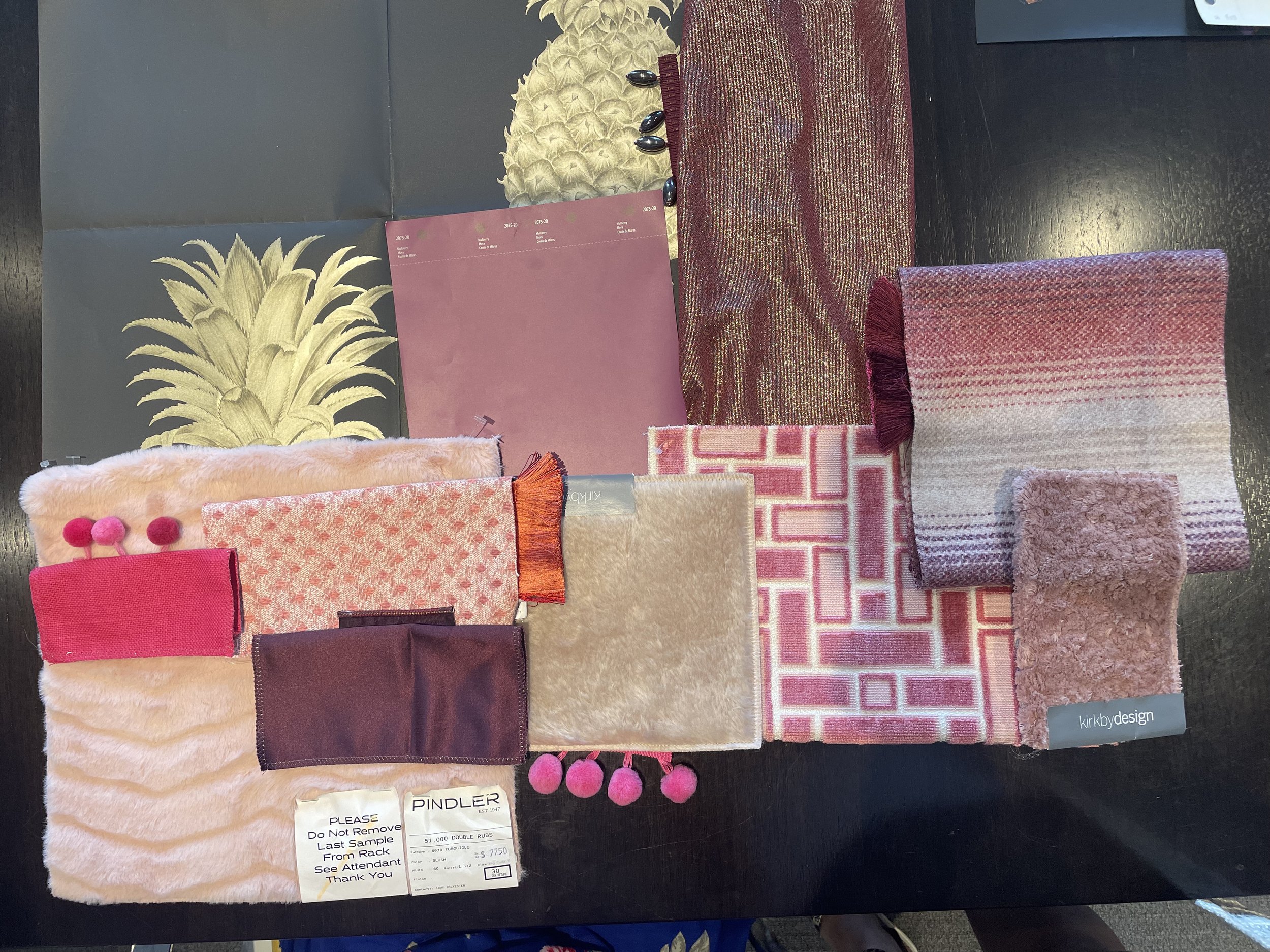
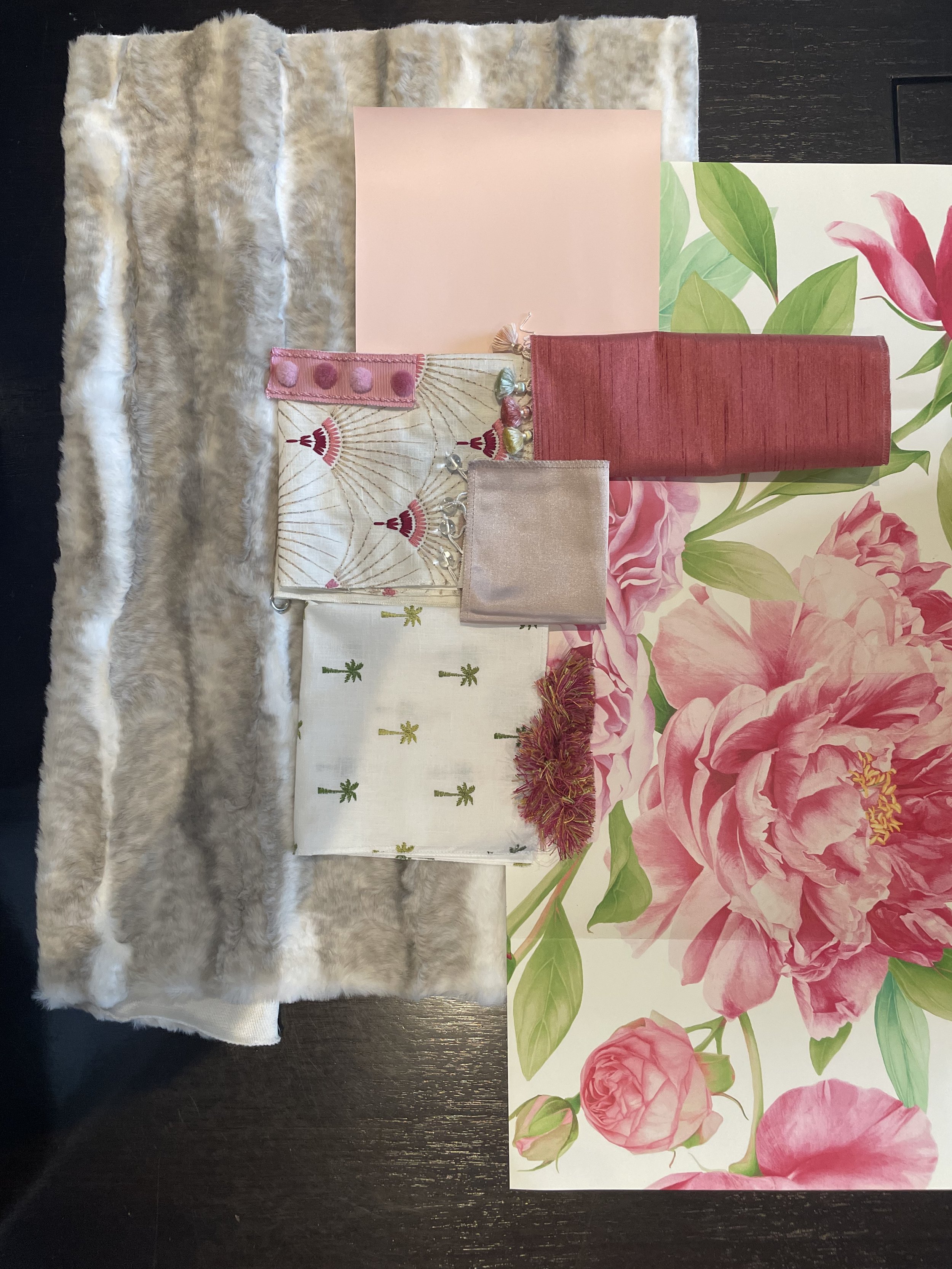
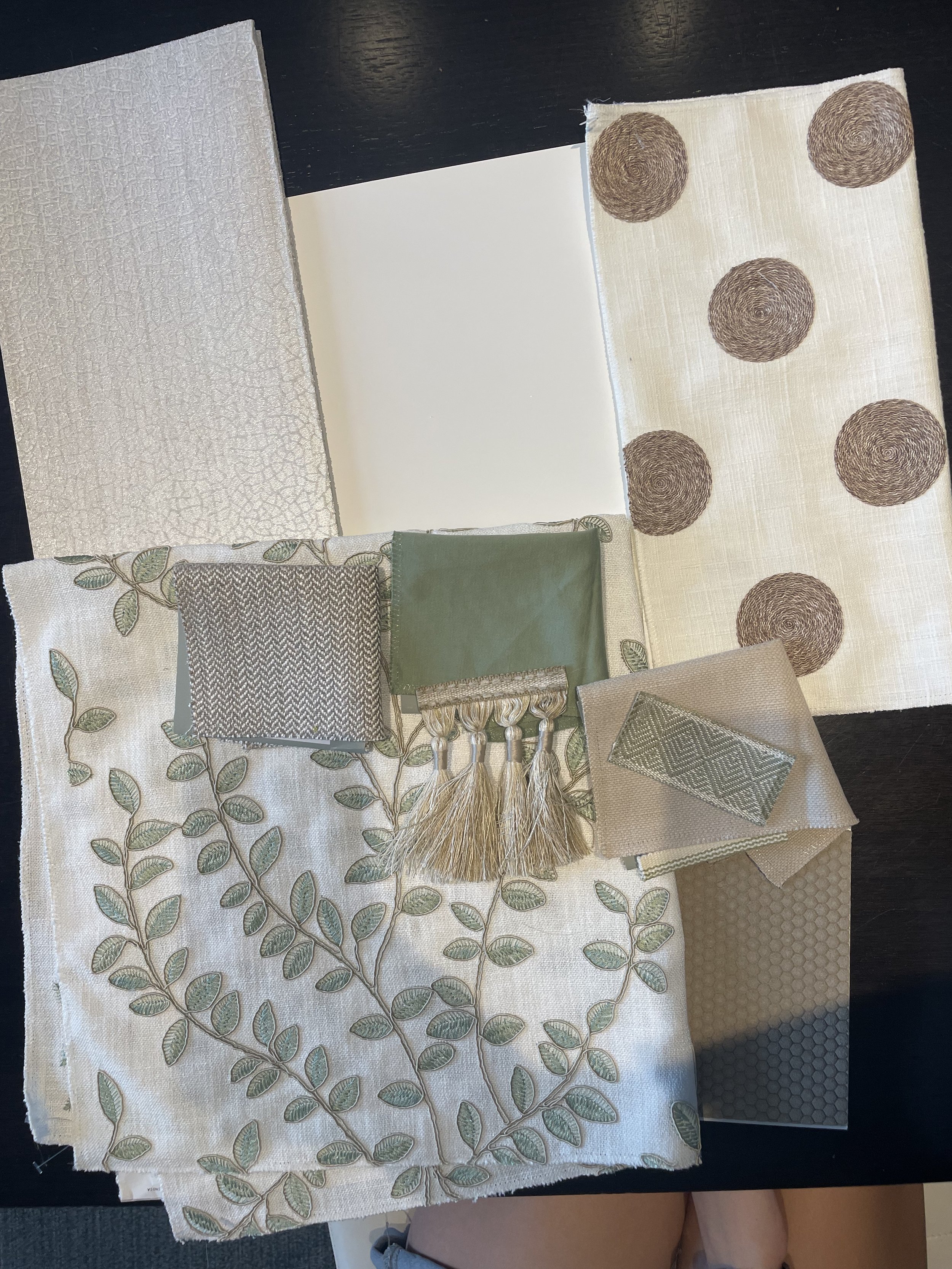
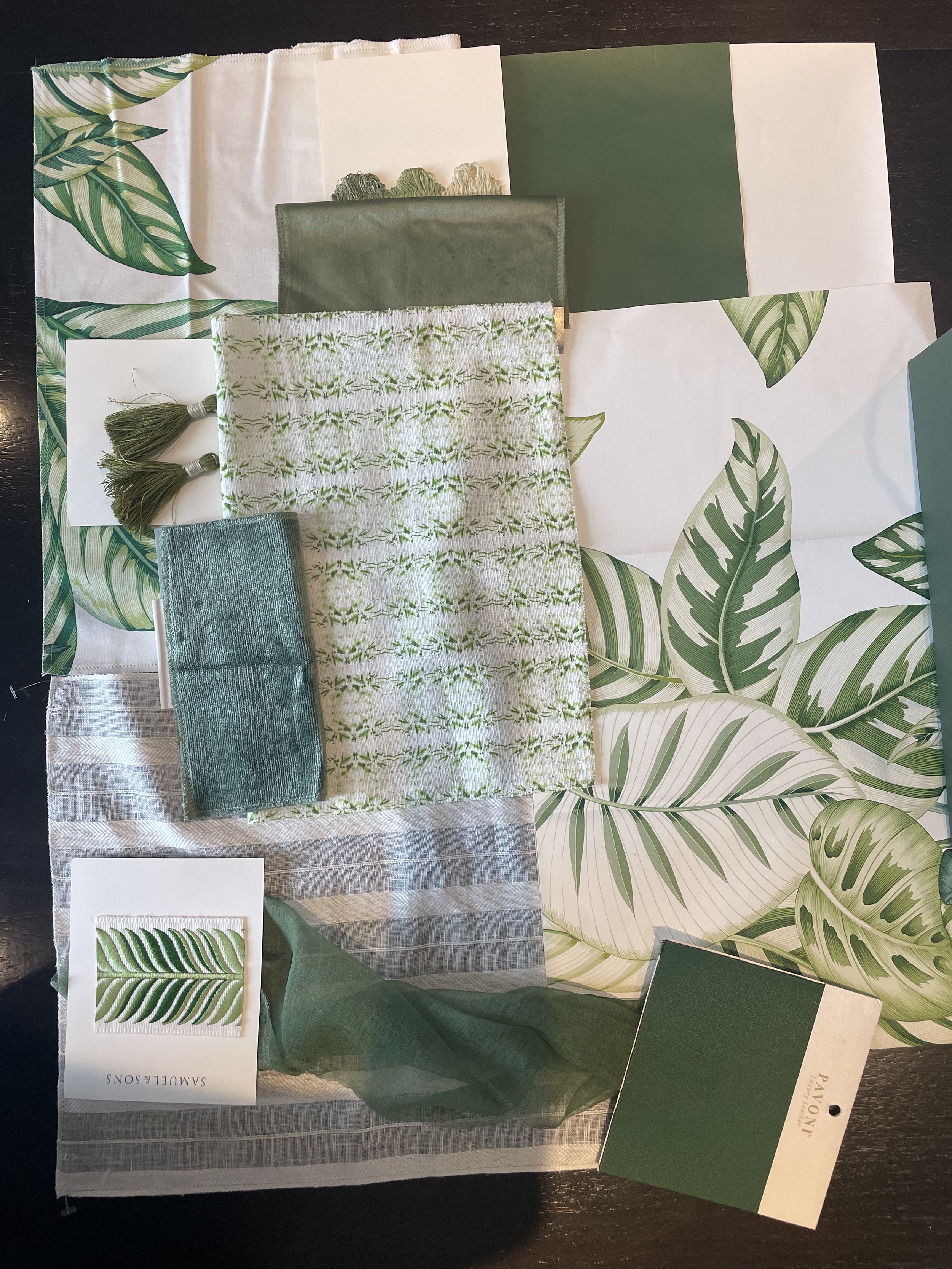
Need help on your next home project? Schedule a design consultation with the SJI team today!
SJI Wins 4 Design Excellence Awards!
On Tuesday, September 13, the American Society of Interior Designers’ Illinois Chapter (ASID-IL) celebrated their annual Celebration of Design and Design Excellence Awards at The Ivy Room at Tree Studios. Sarah Jacquelyn Interiors (SJI) was announced as the winner in 4 categories.
Left to right: Justine Trace, Violeta Arce, Sarah Schwuchow (Owner/Principal), Bianka Daehler, Tiana gaa
On Tuesday, September 13, the American Society of Interior Designers’ Illinois Chapter (ASID-IL) celebrated their Annual Celebration of Design and Design Excellence Awards at The Ivy Room at Tree Studios.
Sarah Jacquelyn Interiors (SJI) was announced as the winner in 4 categories:
Bath
Wild Card Residential Space
Philanthropic/ Charity - check out our blog post on this special project for more details
Custom Detail (Millwork)
The ASID Illinois Design Excellence Awards spotlight the best interior design projects in Illinois with submissions in over 50 categories including residential, contract and product design. Over 150 designers, industry partners, and enthusiasts came together to celebrate the winners.
A panel of distinguished interior design professionals from 8 other ASID Chapters across the country reviewed the entries and selected category winners based on lighting, scale and proportion, color and composition, design creativity, function, and solutions appropriate to the design criteria. All entrants also included an IMPACT statement –an explanation of how the project affected the users' lives or livelihoods.
Check Out More Event Photos and SJI’s winning projects:
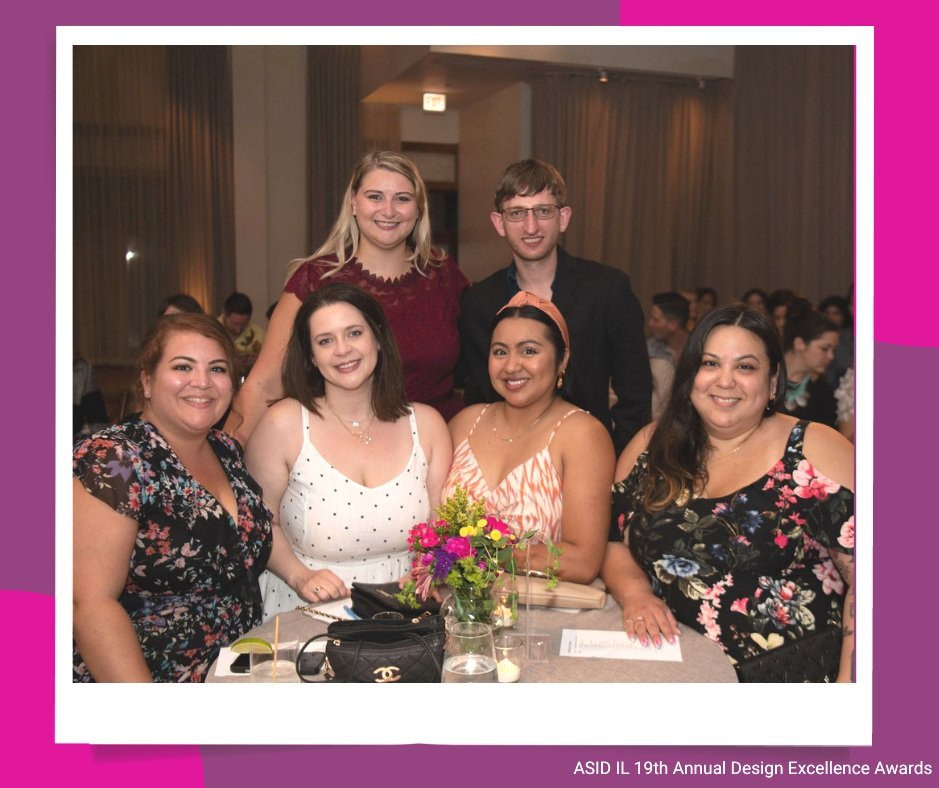
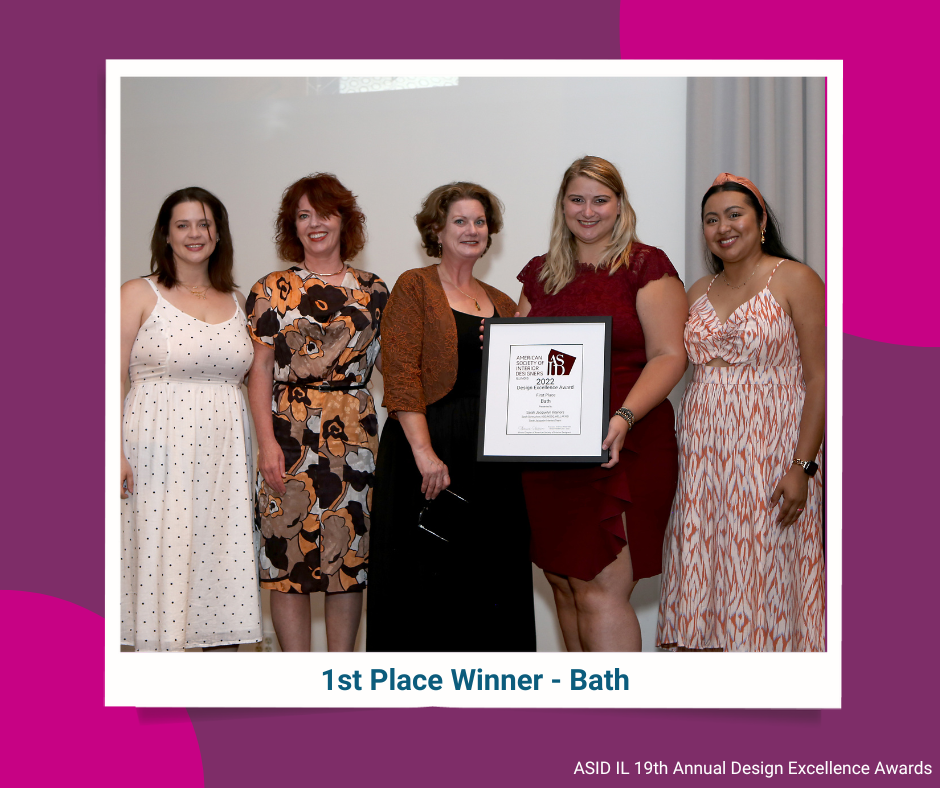
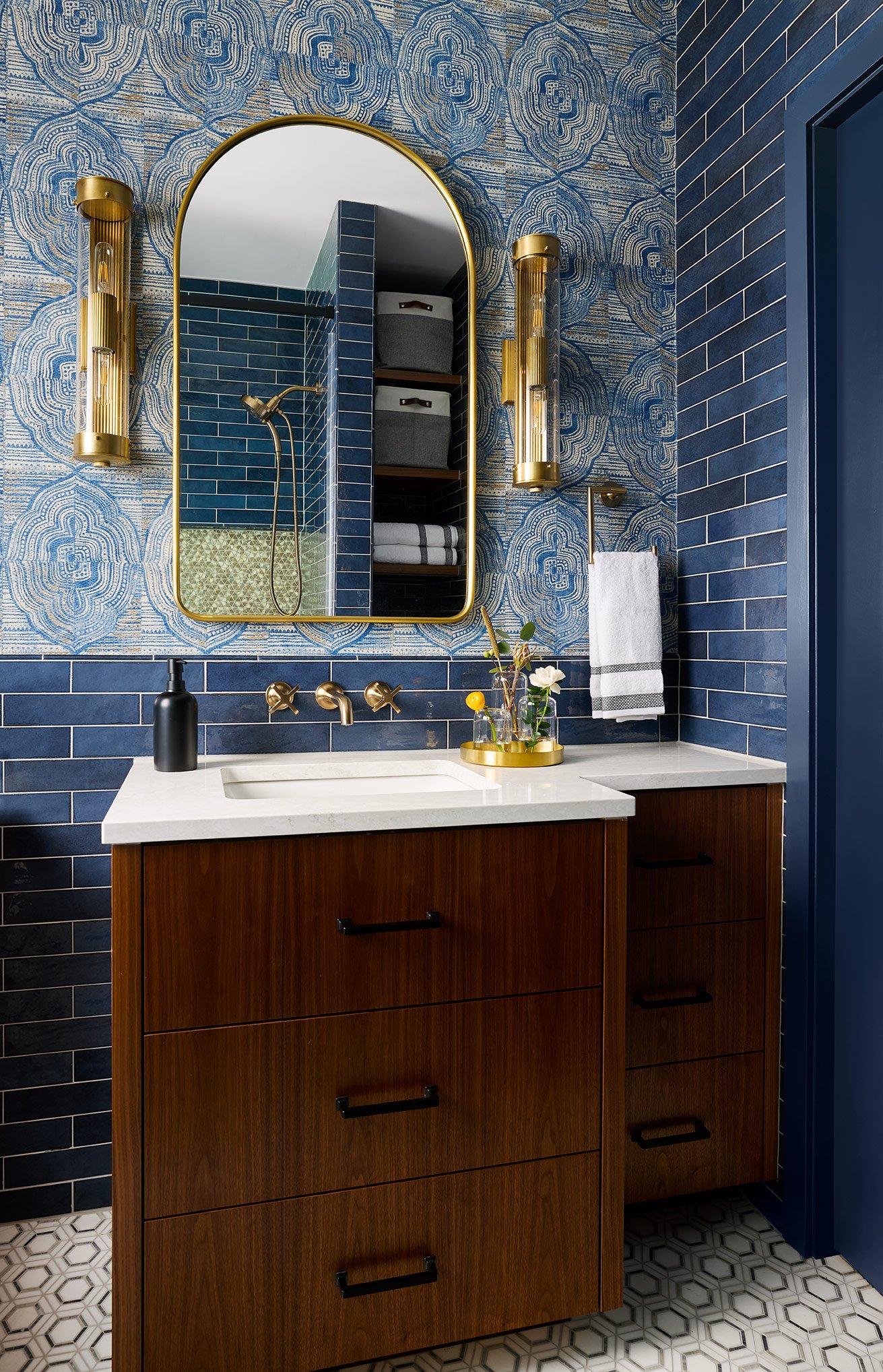
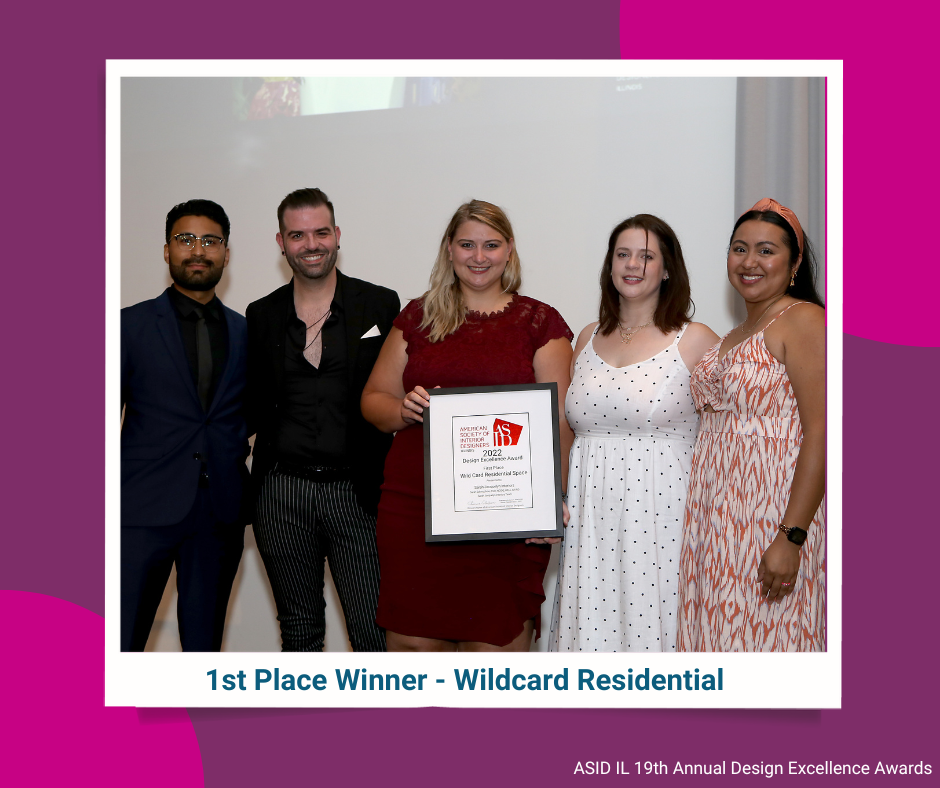
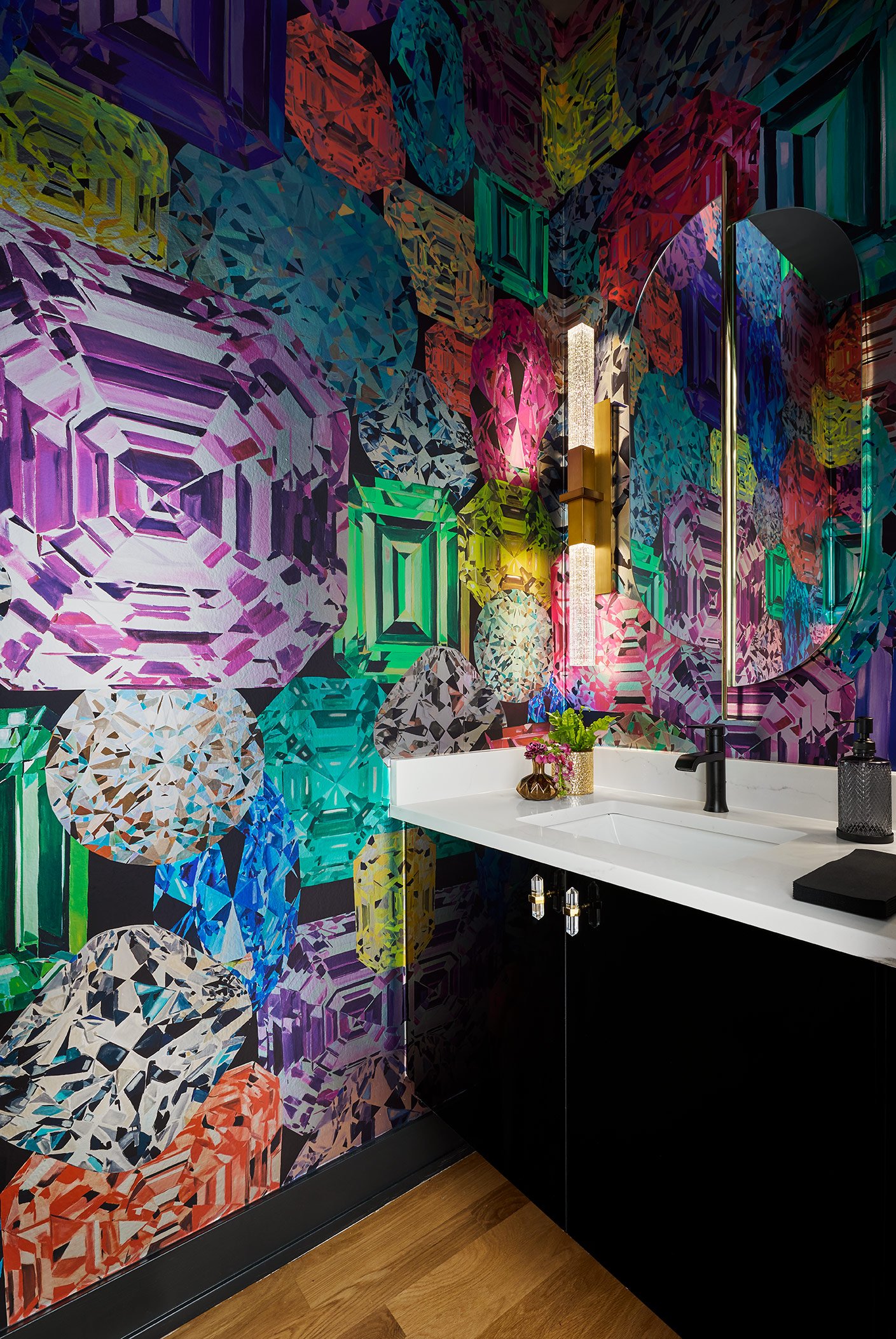

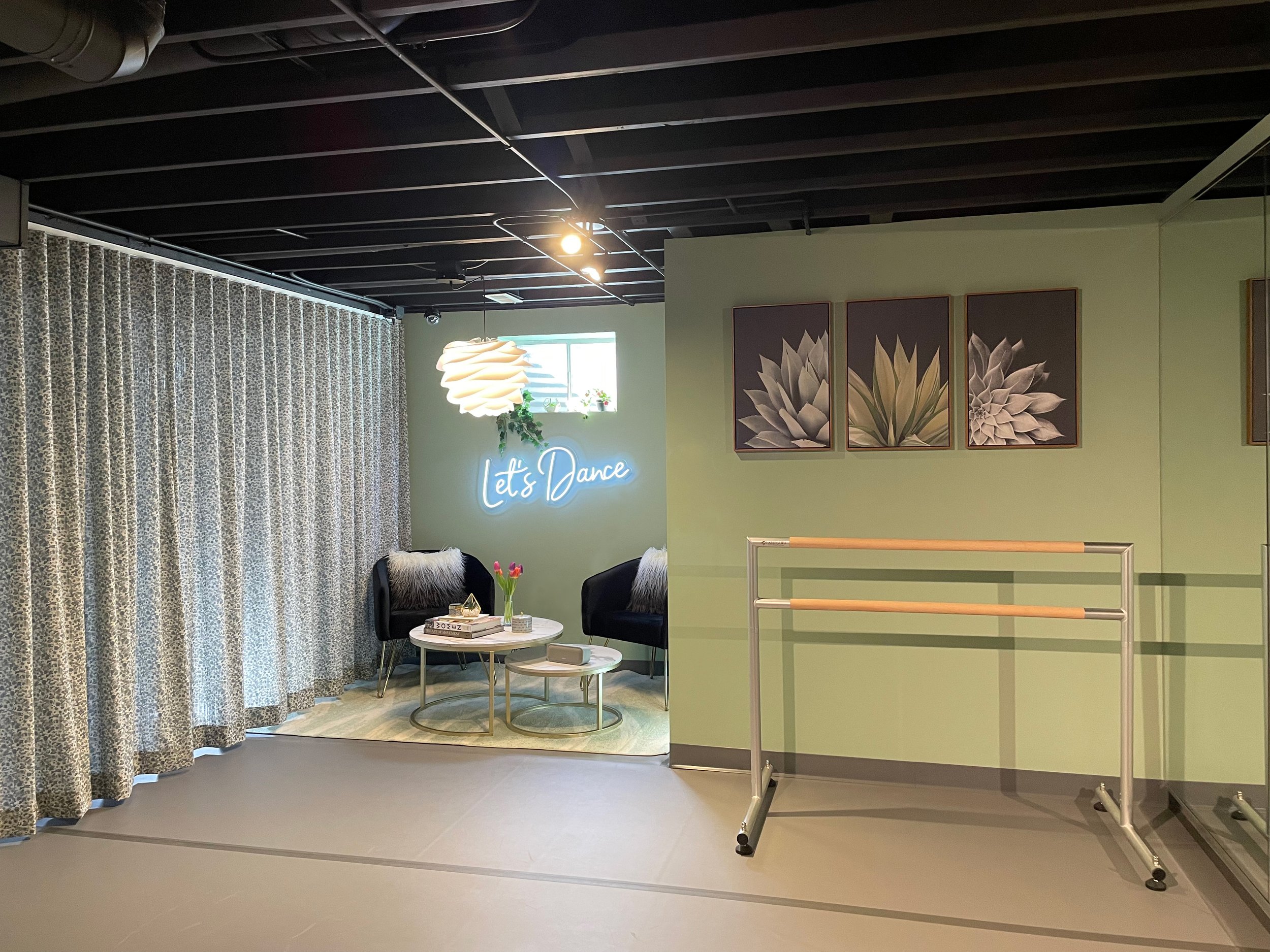
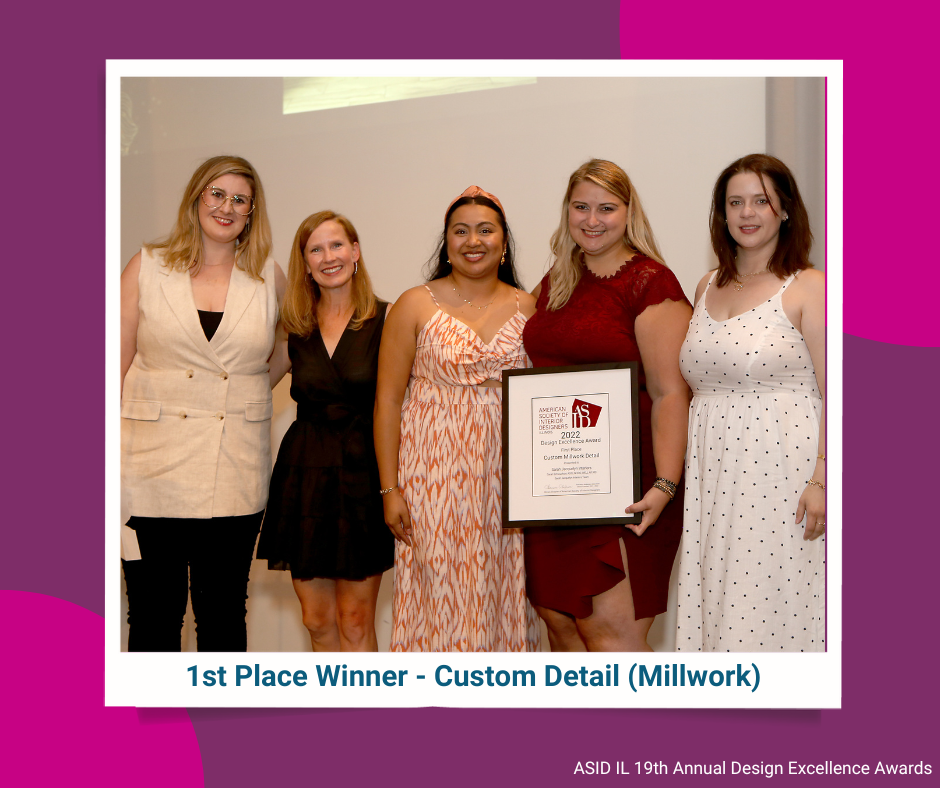
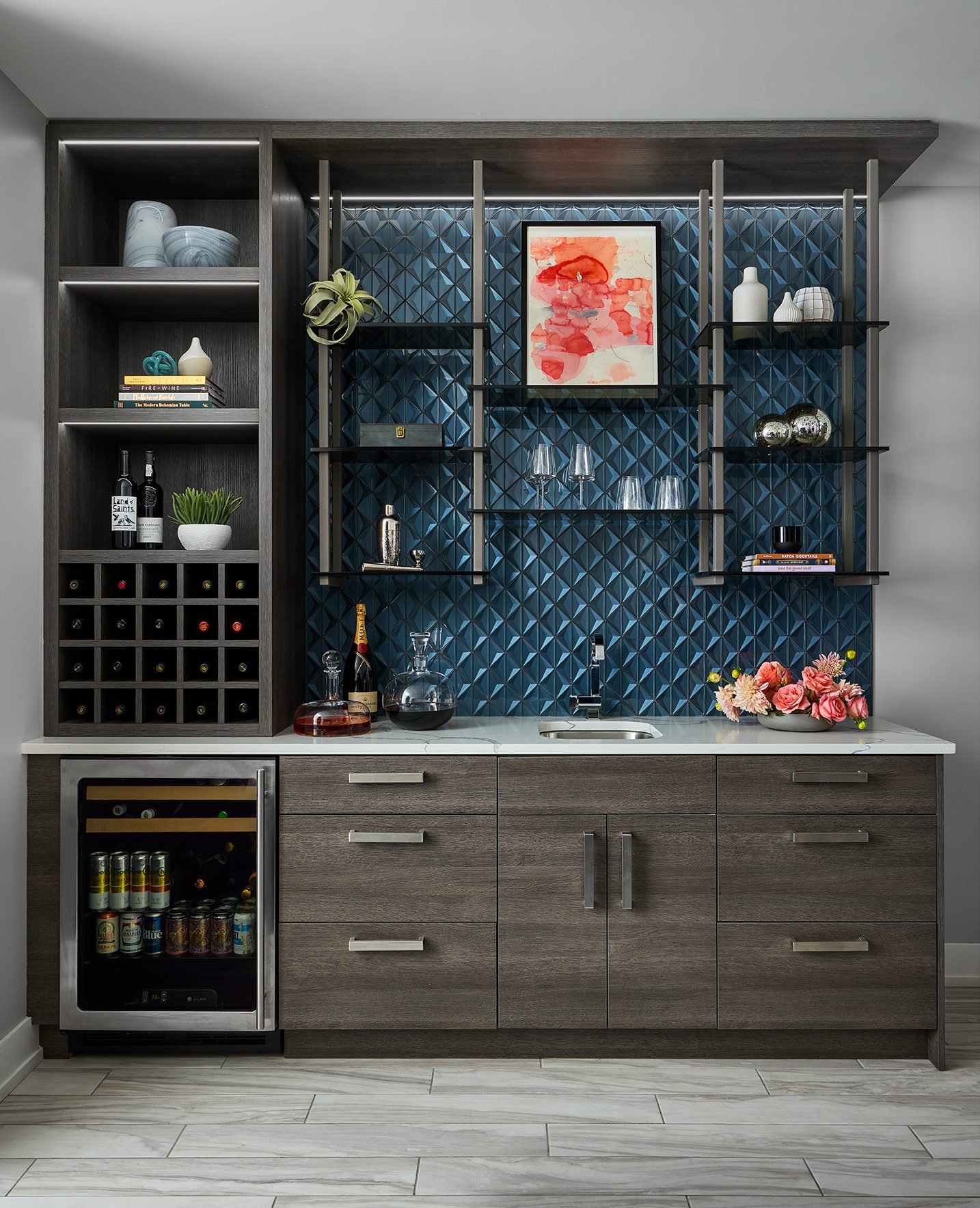
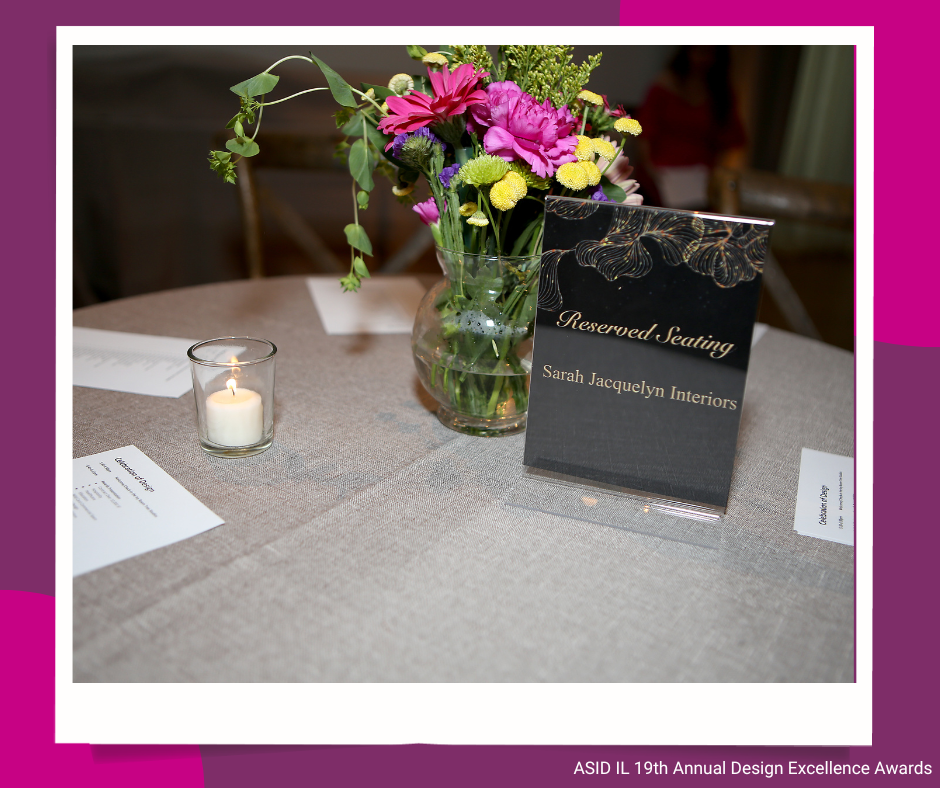
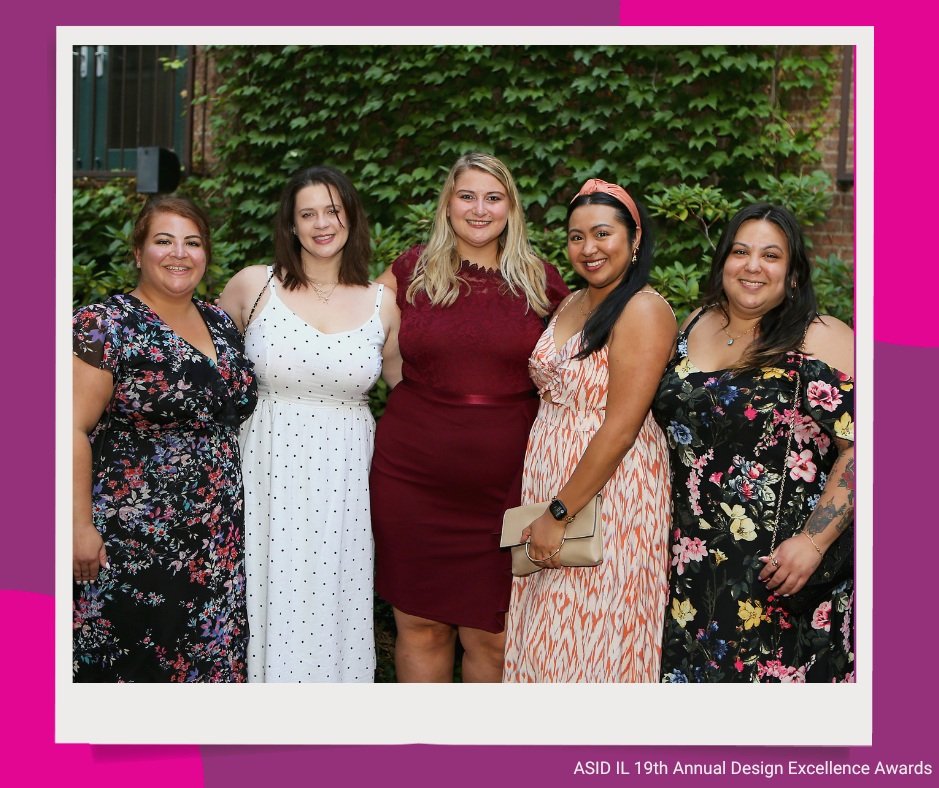
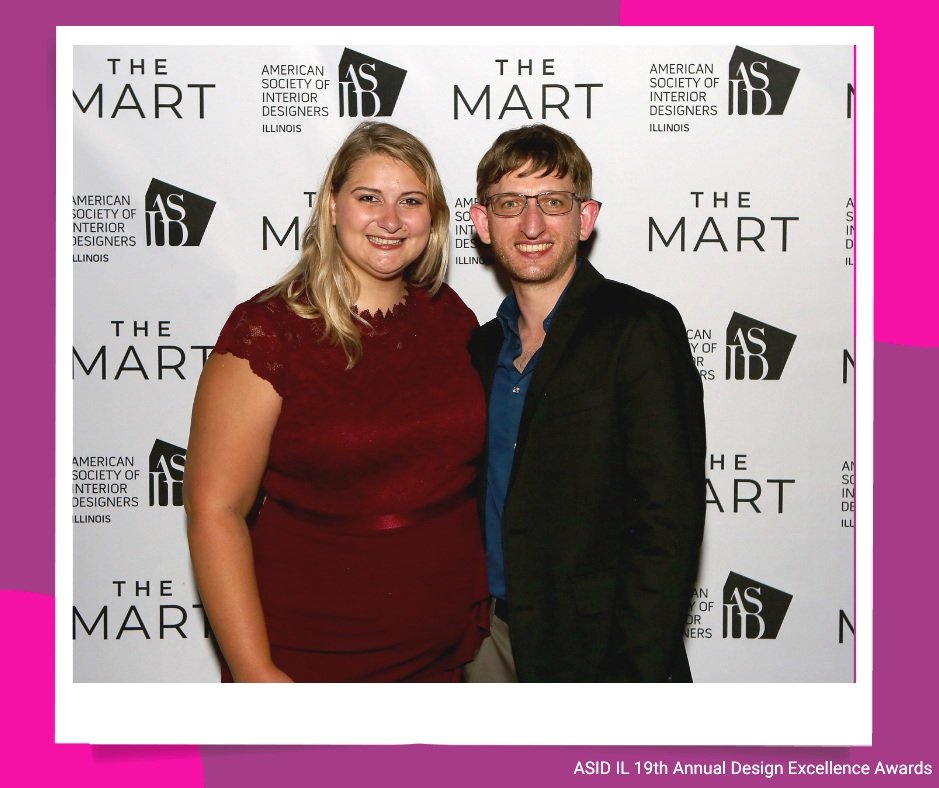
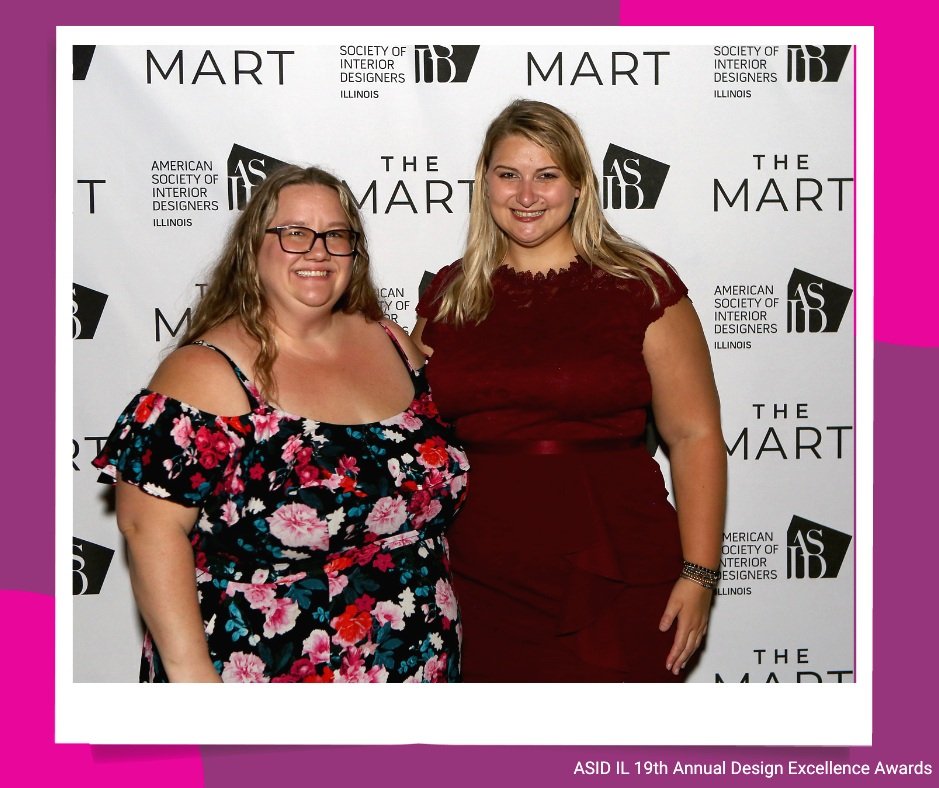
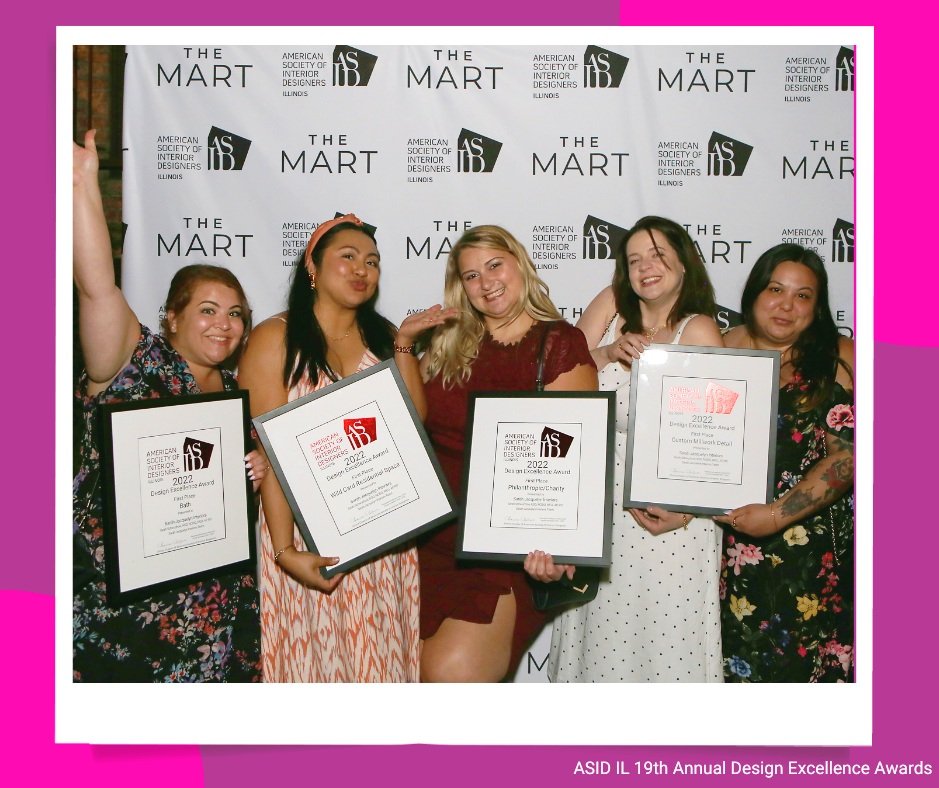
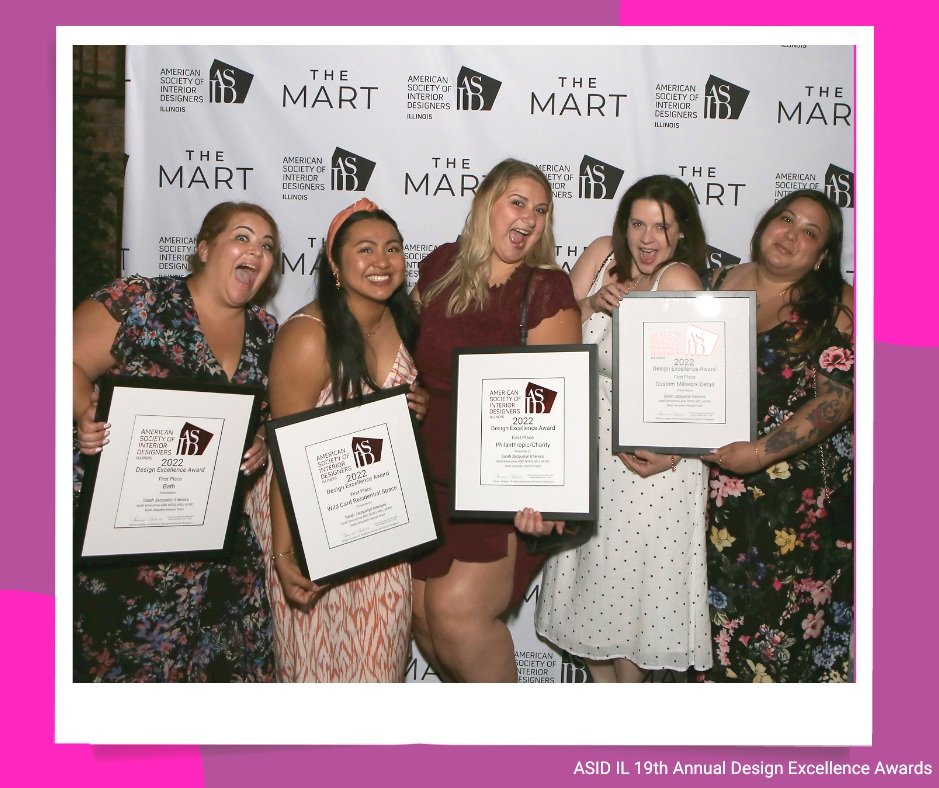
About ASID Illinois
The American Society of Interior Designers (ASID) is a community of people - designers, industry representatives, educators, and students - committed to interior design. Through education, knowledge sharing, advocacy, community building and outreach, the Society strives to advance the interior design profession and, in the process, to demonstrate and celebrate the power of design to positively change people's lives. Its more than 30,000 members engage in a variety of professional programs and activities through a network of 48 chapters throughout the United States and Canada.
The American Society of Interior Designers - Illinois Chapter (ASID-IL) is a professional association representing the interests of more than 1,000 Illinois interior designers, students, and design industry partner members. Its vision is to be the voice of design in Illinois, to provide information through quality, timely communications, to educate its members and clients and to grow and support market expansion.
ASID Illinois is led by a volunteer board that includes the Chapter's president, president-elect, five directors and one student representatives.
Please visit www.il.asid.org for more information.
Making Effie's Wish Come True
We transformed an unfinished basement into a dance studio for an incredible girl whose love of dancing helped her fight cancer. Now, she’s empowering fellow young cancer fighters to keep going.
We transformed an unfinished basement into a dance studio for an incredible girl whose love of dancing helped her fight cancer. Now, she’s empowering fellow young cancer fighters to keep going.
Meet Effie
Effie Inman was diagnosed with pre B-Cell Acute Lymphoblastic Lymphoma in March 2019 at the age of 10. Throughout her cancer treatments, she continued to do what she loved, dance! Even when she was not feeling well, she sat on the side and memorized dance routines.
Due to covid, attending practice in large groups was challenging, as she was immune compromised. Her wish was to have a dance studio in her basement where she could practice her dance routines in a safe environment.
We were contacted by Make A Wish to help with this project as Wish Type Experts. This volunteer position helps Wish Granters and staff research wish feasibility, identify vendors, secure donations, and provide logistical support.
The Unfinished Basement
In partnership with our many wonderful vendors, we transformed this unfinished basement into a dance studio oasis! Our process involved meeting with the Inman family, discussing Effie’s wants and needs, and designing a special space for this incredible 13 year old girl. We measured the basement and got to work organizing the team to make this wish happen. We were blown away by the generosity of our design community wanting to help on this wish.
The Design Process
The Missner Group generously donated their expertise, materials, and construction labor to make this wish come true. Special resilient dance flooring was donated by Harlequin Floors to ensure impact safety along with a ballet bar. A privacy divider curtain was donated by Pindler, Urban Environments, and J Taylor Drapery. A full wall of custom mirrors was donated by S&S Glass. Benjamin Moore/ JC Licht donated paint and Lightology provided new studio lighting and pendant lights. We also created a cozy seating nook, perfect to hang out and watch dance routines. The ambiance wouldn't be complete without color changing lights and a Bluetooth speaker.
Revealing the New Dance Studio
This special space created a major impact on Effie and her family. She was elated with her new dance studio and plans to share the space by offering dance lessons to other kids who are immune compromised that need a safe space to practice.
“Previous to this experience, my home looked like what the inside of mine and Effie’s worlds felt like – all of over the place, messy, and not how we would have wanted. After Sarah and Bianka, and this wish journey, we are beginning to rebuild our homes and it feels like a rebuilding of our lives. I don’t think anyone knows how much of an impact this has had on our family.”
“Make A Wish is incredibly lucky to be represented by Sarah and Bianka and the work they did went above and beyond and beyond and beyond…Effie felt excited, cared for, supported, loved, and celebrated throughout the whole process.”
Effie’s Wish Day Celebration
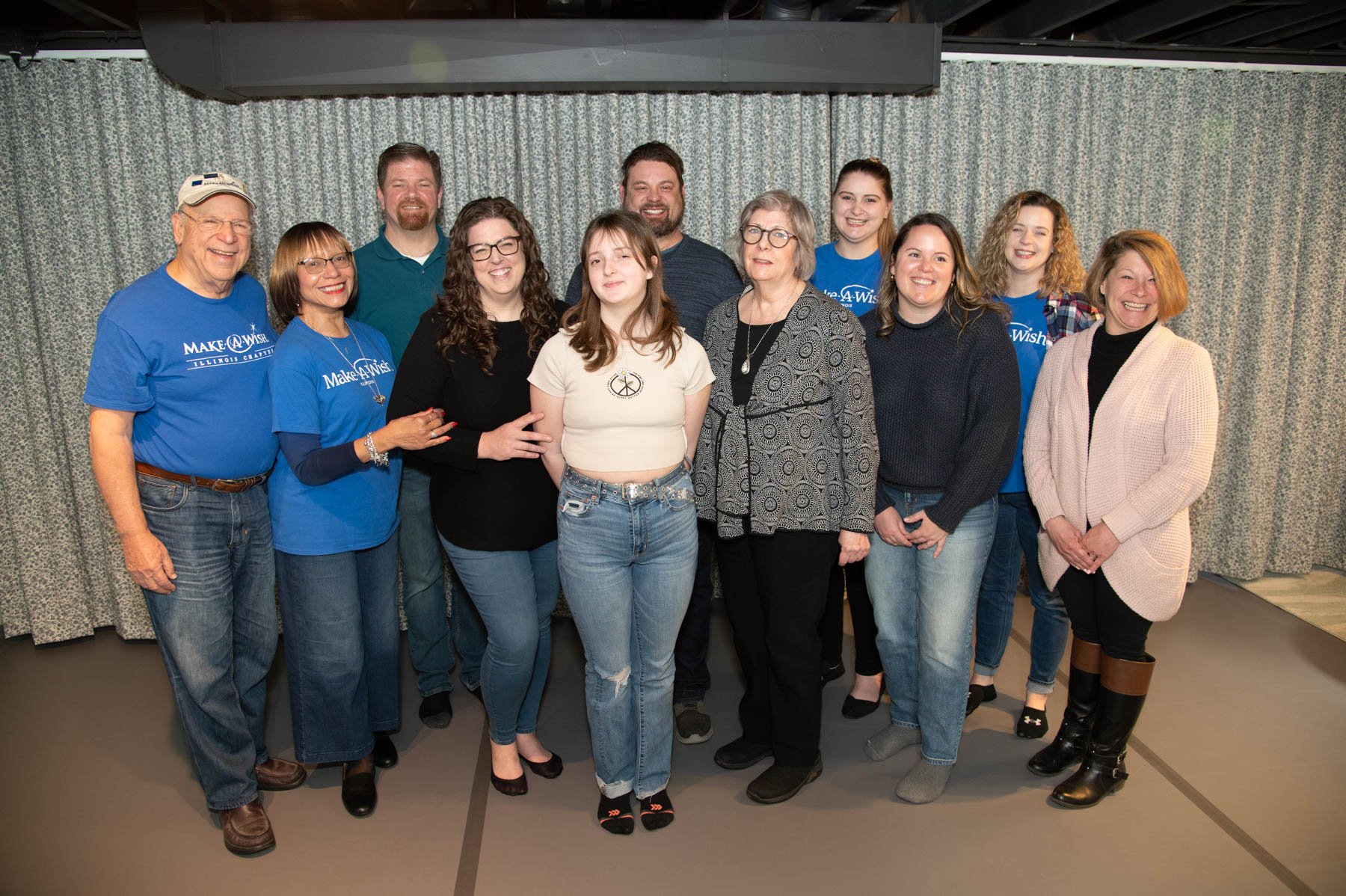

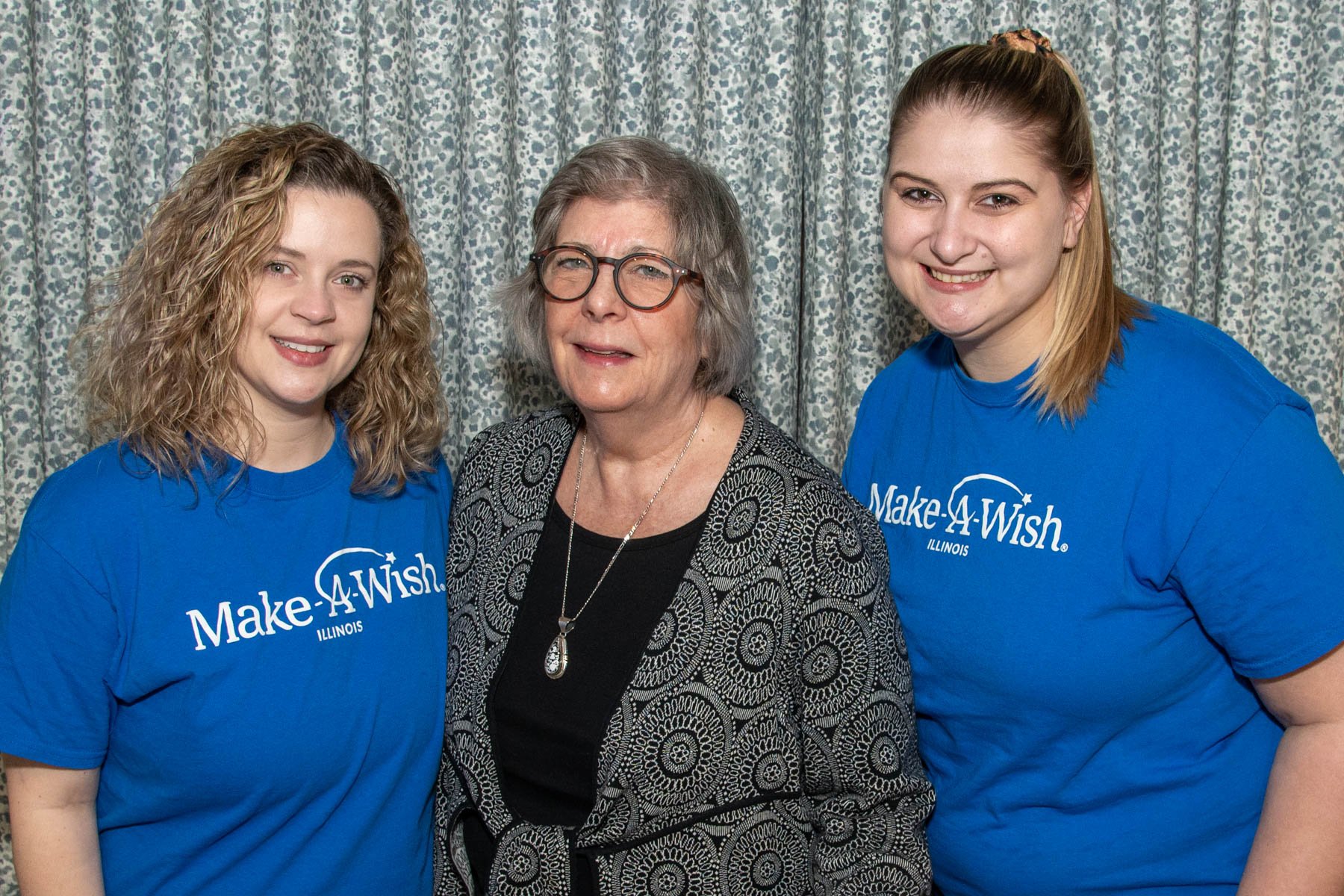


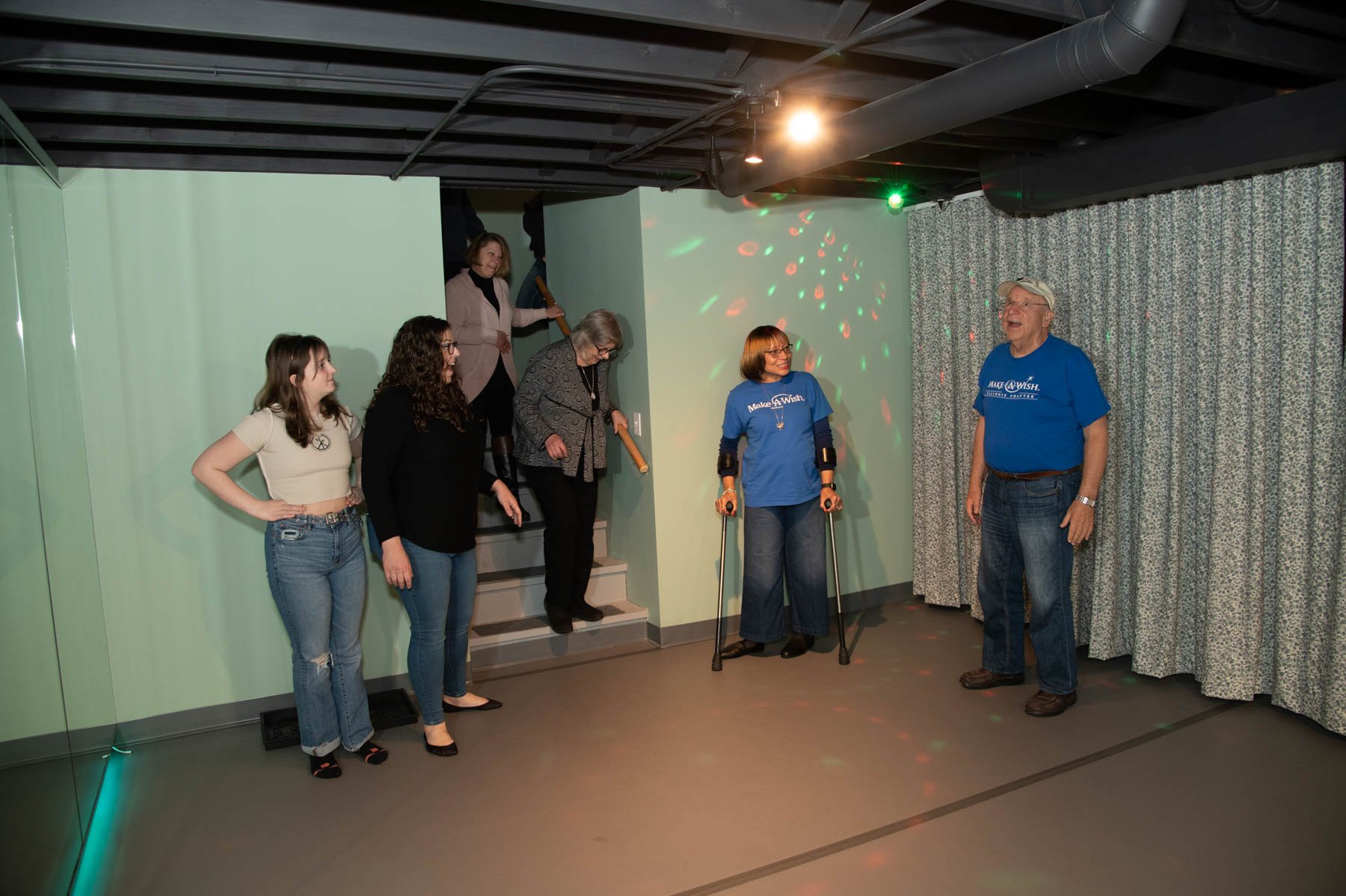
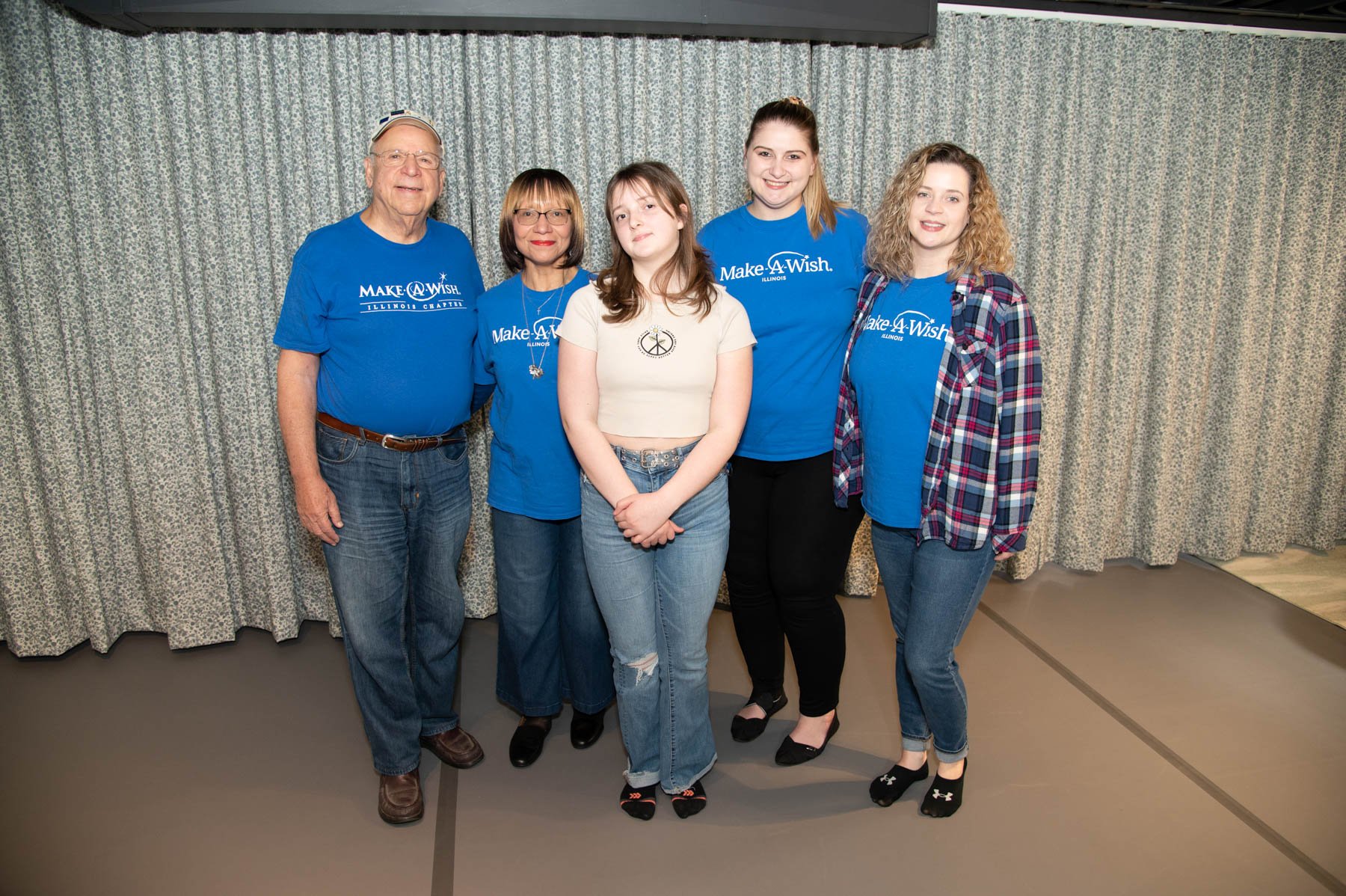






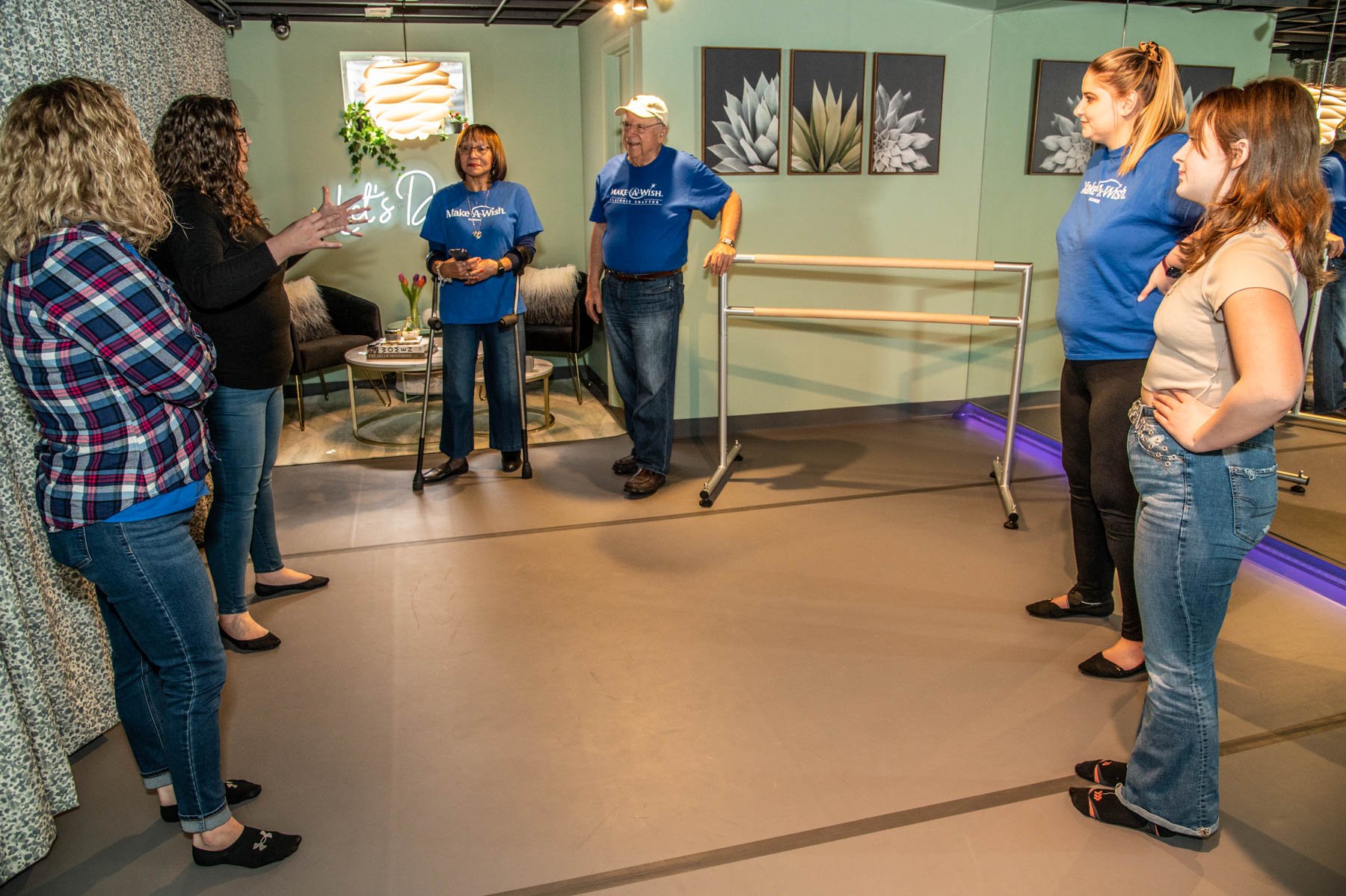
Effie Rings the Bell
In September 2021, Effie completed her treatment after 2.5 long years in and out of Lurie Children’s Hospital.
Through this experience she gained perspective and empathy, and now has the desire to give back. She has since started a nonprofit called Effie’s Wish” with the goal to help kids that are hospitalized and battling critical illnesses. She, along with her Junior Board of Directors, raises funds to provide fun activities and enhance quality of life for children during treatment. Last fall, Effie’s Wish raised thousands of dollars to purchase Nintendo Switches that will be donated to hospitalized children.
We were so grateful to have met and helped the Inman family, and look forward to supporting Effie on her philanthropic journey.
Thank You to Everyone Who Made This
Make A Wish Project Possible!
Make a Wish Illinois
The Missner Group
Harlequin Floors
Urban Environments
S&S Glass
Pindler
J Taylor Drapery
Lightology
Benjamin Moore / JC Licht
George and Debra - Make a Wish Volunteers
Effie’s Amazing Family
Announcing Practice Rights for Registered Interior Designers in Illinois!
Our Bill has become a Law!
Over the last year, you may have seen messages from our team asking for your support for interior design rights in Illinois. We are excited to announce that with your assistance, our bill has become a law!
On June 10th 2022, Governor J.B. Pritzker signed this into law this historic piece of legislation that establishes practice rights for Registered Interior Designers in Illinois and confirms that interior design work positively impacts lives in the built environment.
What does this mean?
Amends the Registered Interior Design Act in Illinois
Provides a Seal for Registered Interior Designers (RID)
RID’s can stamp their own design plans for non-structural construction
Acknowledges the crucial role Interior Designers play in protecting occupant health, safety, and welfare
Who lead the initiative?
Introduced and sponsored by Representative Margaret Croke (D) in the House of Representatives and by Senator Laura Fine (D) in the Senate
ASID IL and IIDA IL Chapter Leaders, Members, and Legislators
CIDQ (Council for Interior Design Qualification)
Who will regulate this Practice Act?
The Illinois Department of Financial and Professional Regulation
When will the new law take effect?
January 1st 2023
Stay tuned for more updates on Interior Design legislation in Illinois. Thank you again for your support!
The Art of Dining: A Tablescape Inspired by the Art of Christina Haglid
Swaying with the ocean’s breath, illuminated orbs dance over translucent waves. Nighttime flowers blossom under moonlight. Peace washes over as glimmering stars brighten the endless midnight sky. Inspired by Christina Haglid’s ethereal artwork, Sarah Jacquelyn Interiors sets the space between light and dark.
Our team had the honor of participating in ASID Illinois inaugural Art of Dining event this year!
12 talented interior designers created beautiful tablescapes that were inspired by the art of: René Romero Schuler, Christina Haglid, Steve Turner, Mark Bowers & Jeff Conroy. The event was hosted at Gallery Victor Armendariz and Zola Lieberman Gallery in River North.
Sarah Jacquelyn Interiors was inspired by Christina Haglid’s ethereal artwork.
The fragility of the environment has always played an important role in Christina Haglid's work. As a child growing up on the East Coast, the ever changing seaside landscapes intrigued her. This fragile balance between nature and her subject matter is as delicate as a paper lantern floating on the ocean.
The Ocean, Christina Haglid 2019 - 2020, acrylic on panel, 8h x 10w inches
Christina Haglid’s history with writing poetry has shaped the narrative process in her artwork. She views objects in the painting like words placed on a page. Haglid creates her paintings with watercolor and gouache on paper or acrylic on panel. She composes flowers, manipulated objects, and architecture together in compositions to symbolize the subtle conversations and interactions between them. Her imagery is placed in imaginary landscapes that are inspired by actual places seen throughout her travels.
Each tablescape highlighted a color from Sherwin Williams, one of the event sponsors. Our vignette incorporated the beautiful color: Smokey Blue
Smoky Blue by Sherwin Williams
Petunia in Space, Christina Haglid, 2018, watercolor and gouache on paper, 5.25h x 5w inches
“At the heart of my work is the recurring depiction of perseverance, strength of will, and a subtle optimism. Symbolically through the objects, precarious situations depict a moment of possible difficulty, often involving the influence of nature.”
Paper Boat, Christina Haglid, 2019 - 2020, acrylic on panel, 8h x 10w inches
Monolith No. 4, Sarah Haglid, 2020, watercolor and gouache on paper, 8h x 9w inches
Daybreak, Christina Haglid, 2015-2018, watercolor and gouache on paper, 7.88h x 14.50w inches
Swaying with the ocean’s breath, illuminated orbs dance over translucent waves. Nighttime flowers blossom under moonlight. Peace washes over as glimmering stars brighten the endless midnight sky. Inspired by Christina Haglid’s ethereal artwork, Sarah Jacquelyn Interiors sets the space between light and dark.
What inspired us:
mysterious and spiritual quality
movement vs. calm nature of water
layers of ocean moving at night
juxtaposition of light and dark
floating quality of the orbs, glowing flowers
glowing effect of organic objects
story of the object and its environment
We used color and a 3D fabric texture to evoke the feeling of the ocean at night. Generous florals adorn a feminine bust with a mysterious gaze. Droplets of gold accents float over the blue tablecloth, emulating the ocean. Glowing orbs dance over waves of fabric on each end of the table setting.
Thank you to everyone who came out to support us and a special thank you to all that made this tablescape possible. We couldn’t have done this without you!
How to Design Your Living Room
Expert advice on how to design your living room.
1. First things first…paint last! It may seem counterintuitive, but with so many nuanced options, you'll want to get it just right. We used Benjamin Moore’s luscious ‘Galapagos Green’ in an ultra flat finish for the ceiling in our latest living room makeover. Be patient, and be bold!
Botanical Garden Living Room, Photo Credit Dustin Halleck
Best Specialty Art and Framing Project: ASID IL Design Excellence 2021, Photo Credit Dustin Halleck
2. Find your focal point. Every room has a natural center point, whether it's the fireplace, TV, or picture window with an expansive view. Plan furniture around this center line. Sometimes a room can have two focal points, like a TV wall and a fireplace. This is trickier, but with the right sectional, anything is possible. Art is one of my favorite focal points. A good frame makes the piece. Artists Frame Service is our favorite local framer. Art helps set the mood in the space, balances the weight of the room, adds color + texture, and creates a conversation starter.
Pro Tip: I love vacation art. These are special pieces picked up on your travels that bring you back to that time and place. Also, buy art done by family members, local artist’s pieces that speak to you, or try framing your own artwork!
Botanical Garden Living Room, Photo Credit Dustin Halleck
3. Select functional furniture. Opt for tight over loose cushions. You'll save yourself the trouble of constantly cleaning between the seats. Multifunctional furniture is great! Pull up ottomans on casters and add instant seating. Bonus if they cant be tucked away under a coffee table or console. Make sure there’s ample surfaces to live and function. Consider a console behind your sofa, end tables for a wine glass, or a coffee table 18-20" from the sofa edge.
4. Think about function & address traffic flow. Do you host super bowl parties and need seating for 8-10? Maybe the kids need it to be cozy, while you need it to be easy to clean. Perhaps it's just you, your partner, and your dog relaxing after a long day of work. Knowing how you will use the space will determine the direction of the design.
To find a flow, think about how you and your guests are entering and exiting this room. Are two points of entry needed? Does that point of entry cross the path of the TV? Can that be avoided?
5. Layer your lighting. Think ceiling lights, table lamps, floor lamps, and windows. Balance the light in the space. Make sure your lighting is on dimmers to adjust it has a day turns to night.
6. Bring in color. Start with the rug. Use the colors of the rug to influence the palette for the rest of the room. Your rug should be large enough that the front two feet of the sofa sit on it comfortably.
“Cover” by Knots Rugs, Sold Exclusively at Integral THread
7. Choose fabrics for your lifestyle. Busy living calls for stain treated or bleach cleanable fabrics depending on your needs (and how rowdy your guests get!) Cozy up with the final layer of pillows. Add in pattern, texture, and trim here. Have fun with it! These can be changed out seasonally or as you want to update your decor!
First Place winner of The Gallery Walk 2021, PHoto Credit Michael Kaskel.
It’s Time to Paint Your Front Door
Your front door is the first thing your guests see when they approach your home. It should prepare them for the beautiful interior that waits inside.
Updating the front of your home doesn’t need to break the bank. Sometimes a little paint, new door hardware, and some new lighting is all you need!
Your front door is the first thing your guests see when they approach your home. It should prepare them for the beautiful interior that waits inside.
Updating the front of your home doesn’t have to break the bank. Sometimes a little paint, new door hardware, and some new lighting is all you need!
The Design Challenge
Our client was looking to spruce up her front door entryway. The hardware finish was degraded, the paint was tired, and the lighting didn’t coordinate with the rest of her beautiful interior. We were challenged to update this front door with some new hardware, paint, and sconce lighting.
The Design Process
We started by taking influence from the stained glass motif. The square nature of the design influenced us to select square hardware and lighting. We went with a pewter metal finish for the hardware, as it coordinated with the metal in the stained glass. Matte black square lanterns completed the look.
Selecting a Paint Color
When selecting the front door paint color, we thought about the context of the whole home. The palette was rich and vibrant aqua and teal tones that balanced well with the neutrals. We used a lot of angled geometry, which also nicely tied in the rectangular design of the new door hardware and sconce lighting.
Benjamin Moore Aegean Teal
We finally landed on Benjamin Moore’s 2021 Color of The Year - Agean Teal as the paint color. It’s a beautiful blend of blue-green and gray. It’s an intriguing midtone that creates natural harmony; a balanced and soothing color that allows you to reflect and reset. It goes great with browns, taupe, chartreuse, and whites.
This welcoming color was perfect for the client’s front door.
The Reveal
Need help refreshing your front door? Schedule a design consultation today!
Bianka Daehler: ASID Illinois At- Large Director
We are excited to announce that our Senior Interior Designer, Bianka Daehler has been nominated and voted in as the At-Large Director for the ASID Illinois Chapter.
We are excited to announce that our Senior Interior Designer, Bianka Daehler has been nominated and voted in as the At-Large Director for the American Society of Interior Designers Illinois Chapter.
Her two year term will begin on October 1st, 2022. Bianka began her journey as an ASID member while in school at the Illinois Institute of Art Chicago. As she progressed in her career, Bianka realized that she wanted to pursue a path toward NCIDQ certification and rejoined ASID, which provided resources and connections to others on the same journey.
Interior Design rights and legislation sparked Bianka’s interest in pursuing a path of leadership. Her goals are to enhance the design community by increasing the number of Registered Interior Designers, provide resources for those pursuing NCIDQ certification, and help advance the legislative rights of interior designers. She plans to connect and collaborate with other organizations to unify the expansive Chicago design community.
Bianka currently serves as the Chicago Peer Group Leader, where she hosts monthly meet-ups for ASID designers and industry partners.
This is her last year studying for the NCIDQ exam. Upon passing the Prac exam this spring, Bianka will become NCIDQ Certified and Register with the State of Illinois.
ASID has so much to offer!
Interested in learning more about ASID? ASID members can get involved with committees and volunteer groups, attend peer group meetings, educational lectures and advocacy events, seek mentorship or become mentors, and learn leadership and professional development skills. We, as a design team, would not be where we are today without the support of the American Society of Interior Designers. We look forward to being able to give back in every way we can so we may continue to support the design community.
If you’re interested in becoming more involved in ASID, please reach out! Bianka@SarahJacquelynInteriors.com
Everything You Need to Know About the 2022 NCIDQ Exam
If you’re interested in learning more about the NCIDQ Exam, why it’s important, and how it can benefit you as a designer, you’re in the right place! I’m Sarah Schwuchow, a Registered Interior Designer in Illinois and I passed the NCIDQ exam in the Spring of 2018. I am also a CIDQ Ambassador, which means I help mentor exam candidates, educate students, and promote the value of NCIDQ certification to the public. I’m on a mission to help other designers pass the NCIDQ exam and become Registered Interior Designers!
Hello! I’m so glad you are interested in learning more about the NCIDQ Exam!
I’m Sarah Schwuchow, a Registered Interior Designer in Illinois and I passed the NCIDQ exam in the Spring of 2018.
I am also a CIDQ Ambassador, which means I help mentor exam candidates, educate students, and promote the value of NCIDQ certification to the public. I’m on a mission to help other designers pass the NCIDQ exam and become Registered Interior Designers!
If you’re interested in learning more about the NCIDQ Exam, why it’s important, and how it can benefit you as a designer, you’re in the right place!
It’s been 4 years since I earned my NCIDQ certification. This certification has benefited me in numerous ways, from opening my own business, to having the confidence and knowledge to effectively communicate on a job site. This exam is not just for commercial interior designers; I use my NCIDQ knowledge everyday as a residential interior designer and highly recommend all interior designers work towards this certification.
I always felt there was a need for more NCIDQ mentorship among the design community. After passing the exam, I looked into the CIDQ Ambassadors program where I could provide mentorship to candidates and educate Interior Design students on the value of the NCIDQ exam. I strive to be a resource to other designers, sharing my NCIDQ journey and encouraging them to take the exam.
I have helped many aspiring designers work towards this certification as well. As the 2019 ASID Illinois NCIDQ Committee Chair, I lead a study group of 5 designers towards NCIDQ success. Everyone in our study group passed their exams! Since then, the ASID Illinois Chapter has hosted a study group session every testing season and has even partnered with IIDA to broaden the outreach to the design community.
Just starting to think about taking this exam can be daunting task in itself! I’m here to help break down the requirements and get you on track for taking the exam. Keep reading below for step by step instructions on how you can become NCIDQ Certified.
Please note - the statements on this website are my own and not a reflection of CIDQ as an organization. This blog post is intended to be a supplementary guide for your NCIDQ journey. Please visit CIDQ.org for more information regarding qualifications, expectations, current prices, etc. Familiarize yourself with the CIDQ website, eligibility requirements, application process, registration process, and important dates and deadlines!
Applications for the Spring 2022 Exam needed to be
submitted by January 31st and July 31st for the Fall 2022 Exam.
What is NCIDQ Certification and Who is CIDQ?
The NCIDQ exam stands for the National Council for Interior Design Qualification. This is a globally recognized exam and the highest standard an Interior Designer can earn. The NCIDQ Exam was created by the Council for Interior Design Qualification (CIDQ). Once you pass all three sections (IDFX, IDPX, Practicum) of the the NCIDQ Exam, you become an NCIDQ Certificate Holder. You can then use the NCIDQ appellation after your name: Sarah Schwuchow, NCIDQ. The exam is offered for the entire months of April and October at Prometric Testing Centers. Remote proctoring is available for the IDFX and IDPX Exams. All three sections of the exam are now computerized- no hand drafting!
CIDQ History
CIDQ was created by the American Institute of Interior Designers (AID) and the National Society of Interior Designers (NSID) in the late 1960s. The group officially incorporated as a not-for-profit in 1974 and was the basis for issuing credentials to Interior Design professionals. The AID and NSID would eventually merge to become what is now the American Society of Interior Designers. CIDQ went on to run as an independent organization, which administers the NCIDQ exam
Why Does NCIDQ Certification Matter?
NCIDQ Certification matters because it is an indicator of our proficiency and knowledge. The Interior Design profession is still relatively young at only about 100 years old. We are still working towards reasonable regulation, title acts, practice acts, stamping abilities, and legislative rights for our profession. NCIDQ Certification helps to create a standard to ensure designers have the knowledge, education, and experience to create spaces that meet codes, regulations, ADA requirements, health, safety, and welfare. I am proud to be an NCIDQ Certified Interior Designer that can contribute to the development of the Interior Design profession as a whole
The NCIDQ exam was always a vital goal of mine and I admired design professionals who held the credentials. In the State of Illinois, you must be an NCIDQ Certificate holder to become a Registered Interior Designer. From a legislative standpoint in Illinois, it is critical that we ensure the “Registered Interior Designers Act'' stays in effect, as many legal benefits come with this title such as lien rights. I wanted to be part of the advocacy efforts, increasing our Registered Interior Designer numbers, and supporting the ASID and IIDA chapters who continuously educate the public on Interior Designs' impact on health, safety and welfare.
10 Reasons Why You Should Take the NCIDQ Exam
NCIDQ Certification sets you apart from unqualified designers and decorators.
It is an indicator of your proficiency and knowledge.
NCIDQ Certification shows your commitment to the Interior Design profession.
You’ll earn respect among your colleges, employers and clients.
You’ll have the potential to earn more money and promotions, as many firms require NCIDQ Certification.
Increasing the number of registered/licensed designers elevates our profession.
NCIDQ Certification helps with legislation and Interior Design rights.
In Illinois, you must be an NCIDQ Certificate Holder to become a Registered Interior Designer.
Registered Interior Designers in Illinois now have the right to file liens. Unregistered designers and decorators do not hold this right.
“To date, more than 30,000 people around the world have earned NCIDQ Certification, the gold standard for interior design professionals” (CIDQ.org).
What’s on the NCIDQ Exam?
“The strenuous requirements of the NCIDQ Examination give clients and employers added confidence in the caliber of work from NCIDQ Certified designers” (CIDQ.org).
The NCIDQ examination is no walk in the park. The level of difficulty proves that a NCIDQ designer possesses the knowledge and expertise for building systems, codes, construction standards, contract administration, design application, professional practice, and project coordination.
The exam is broken down into 3 parts: Interior Design Fundamentals (IDFX), Interior Design Professionals Exam (IDPX), and Practicum 2.0. Each section measures a candidate’s knowledge and proficiency on different topics related to health, safety, and welfare. All exams are taken during the entire month of April and October. Applicants have five years to complete all three exams.
Fundamentals Exam (IDFX)
Eligibility: Candidates can take this part of the exam before completing their work experience hours. This exam can be taken as early as a student’s final year of school for a Bachelors or Masters program.
Exam Format: 125 multiple choice questions (100 scored and 25 unscored pilot questions)
Exam Length: 3 Hours
Application Fee for IDFX Only: $95.00
Registration Fee: $295.00
Passing Score: 500 (Scores are weighted and on a scale of (200-800)
Professional Exam (IDPX)
Eligibility: Candidates must complete their education and work hours before applying for this exam.
Exam Format: 175 multiple choice questions (150 scored and 25 unscored pilot questions)
Exam Length: 4 Hours
Application Fee for IDPX and Prac Only: $145.00
Application Fee for all 3 Sections: $225.00
IDPX Registration Fee: $355.00
Passing Score: 500 (Scores are weighted and on a scale of 200-800)
Practicum 2.0 (PRAC)
Eligibility: Candidates must complete their education and work hours before applying for this exam.
Exam Format: Interactive computerized exam consisting of 3 case studies: large commercial, small commercial, and multi-family residential
Exam Length: 4 Hours
Application Fee for IDPX and Prac Only: $145.00
Application Fee for all 3 Sections: $225.00
Practicum Registration Fee: $460.00
Passing Score: 500 (Scores are weighted and on a scale of 200-800)
What’s New for 2022?
Interior Design Fundamentals Exam and Interior Design Professional Exam
The IDFX and IDPX are now available for remote proctoring! Remote proctoring is an exam delivery method administered by Prometric, CIDQ’s test delivery vendor, which provides candidates with the option of taking the IDFX or IDPX exams in a convenient location (i.e., at home) versus at a Prometric test center. Participating in a remotely proctored exam can only occur if your testing environment and computer systems meet Prometric requirements.
Practicum Exam
The Practicum Exam uses new codes, no longer will you use the 18 page NCIDQ codes for this exam. Instead, you will reference real life codes from IBC. You are not expected the completely memorize all of these codes, but should be familiar with them, know how to reference and apply the codes. Click here to view the codes!
Ready to Take the Exam?
Step 1: Eligibility Requirements
First things first—are you qualified to take the NCIDQ Exam? Visit the CIDQ website for full eligibility path requirements based your education and work experience.
Step 2: Create an Account
Before you can apply, you must create an account with CIDQ. Click here to register and then log in with instructions received in your email. If you have trouble, email inquiries@cidq.org for help.
Step 3: Applying for the Exam
There are two route options for applying for the NCIDQ Exam:
Option 1: Apply only for the IDFX. If you apply just for the IDFX now, you will need to submit another application for the IDPX and Practicum once you finish your work experience hours.
Application Fee for IDFX only: $95.00 (Second application for IDPX and Prac will be $145.00)
Option 2: Apply for all three sections.
Application Fee for all 3 Sections: $225.00
Applications are a one time fee. Your application will also require you to submit an official transcript from your institution and your work experience (for IDPX & Practicum 2.0). Make sure you leave enough time for your sealed official transcripts to arrive, as any incomplete applications will not be considered after the deadline and you’ll have to wait until the next testing season.
Step 4: Registering and Scheduling Your Exam
Once your application has been approved, you will receive an email notifying you that you that can register for the exam and schedule a date at a Prometric Testing Center. Make sure to register early so you can lock in your preferred exam date!
From this point, you have 10 testing windows to pass all three sections of the NCIDQ exam. If you are only taking the IDFX, you must pass that exam within 4 exam windows. The second stage (IDPX and Practicum) must then be completed within 10 testing windows. Any scores older than 5 years are automatically voided. Registration fees occur each time you take an exam.
Registration Fees
IDFX: $295.00
IDPX: $355.00
PRAC: $460.00
Step 5: Studying
Make sure you leave yourself adequate time to study for this exam. I recommend at least 10 weeks and join a study group. Qpractice is a great online resource to help you stay on schedule. Stay tuned for my upcoming blog post on my tips and tricks for studying for the NCIDQ Exam!
Join the more than 30,000 people around the world that have earned their NCIDQ Certification!
“Having an NCIDQ has helped me further develop my professional career in many ways. Overall, I look at new projects with better insight, knowledge, and have more confidence in the work I am providing to our clients.”
“NCIDQ validates you as a professional designer to your clients, peers, and the public.”
Sarah Schwuchow is now a WELL Accredited Professional
Our Principal Interior Designer, Sarah Schwuchow, earned her WELL AP Certification. This certification shows Sarah’s commitment to design and create healthier spaces. Read on to find out more about this certification and how this credential impacts lives for the better!
Last month, our Principal Interior Designer, Sarah Schwuchow, earned her WELL AP credential. This shows SJI’s commitment to design and create healthier spaces. Read on to find out more about this certification and how this credential impacts lives for the better!
“Those who successfully pass the WELL AP exam and receive the WELL Accredited Professional (WELL AP) credential are recognized for their expertise in the WELL Building Standard (WELL) and for demonstrating a commitment to advancing human health and wellness in buildings and communities around the world.”
-www.resources.wellcertified.com/faqs/what-is-a-well-ap/
Sarah has always been interested to understand how the environment can impact health and wellbeing. WELL is a commitment to advancing human health in buildings and communities, using evidence-based medical research by scientists, medical professionals, wellness teachers and architects.
As someone who has a family experience with cancers, auto immune diseases, and mental health disorders, it’s very important to Sarah to learn how SJI can make an impact in what we do as designers and how the spaces we design can impact our clients’ physical and mental wellbeing.
We are committed to doing our research and educating the public on the ways that environmental and biological factors play a role in our health and wellness.
“Becoming a WELL AP gives you the opportunity to become an ambassador for public health and design spaces that empower people to eat, sleep, work out, perform and feel their best.” -www.asid.org/learn/well
The WELL Building Standard focuses on 7 concepts for healthier buildings & spaces:
AIR
We spend 90% of our time indoors, therefore indoor air quality is vitally important. We need to consider off-gassing from building materials in our designs, such as VOC’s from paints.
Indoor air quality issues can diminish work productivity and lead to sick building syndrome (no disease or cause is identified but health effects are linked to time spent in the building). Pollution source avoidance, proper ventilation and air filtration are some of the most effective means of achieving higher indoor air quality.
WATER
Clean drinking water is vital for optimal health. 2/3 of our bodies are composed of water; it helps our bodies transport nutrients and waste, regulates our body temperature and serves as a shock absorber for the brain and spinal cord. Women should consume 2.7L and men should should consume 3.7L of water daily according to the Institute of Medicine.
Water contamination is major health issue. Almost 1 billion people do not have access to safe drinking water worldwide and 2 million people die annually from access to safe drinking water. The Clean Water Act of 1974 in the US by the EPA provides standards for levels of contaminants allowed in our water such as lead, arsenic, mercury, glyphosate, atrazine and microbes. These limits are set based on the likelihood of causes health effects like cancer.
WELL seeks to help limit the presence of inorganic containments - like Lead and mercury in our drinking water which have been linked to developmental delays, learning disabilities, high blood pressure and kidney problems. Reverse Osmosis and Kinetic Degradation Fluxion filters can remove these dissolved metals. WELL also seeks to limit the presence of organic contaminates like Benzene and PCB’s which are linked to cancer, immune deficiencies and nervous system difficulties. Carbon filters are effective at removing these and other harmful chemical substances.
NOURISHMENT
Nutrition plays a major role in health maintenance, weight management, and chronic disease prevention. 2.7 Million people die annually worldwide due to insufficient fruit and vegetable intake. It’s a top 10 risk factor of global mortality. Low fruit and vegetable consumption can lead to higher rates of type 2 diabetes, cardiovascular issues, as well as breast and gastrointestinal cancers.
WELL incorporates strategies that can help people eat better, by encouraging fruit and vegetable consumption, discouraging artificial ingredients, storing foods properly, labeling foods for allergies and recognizing special diets, providing foods that are Federally Certified Organic, and Certified Human. Spaces are designed to provide employees with break areas and salad bars to encourage healthy eating and taking breaks from the work day.
LIGHT
Light is vitally important in the design of any space, not just visually but also physically. As humans, our bodies run on a 24 hour cycle called a circadian rhythm. Our bodies respond to external cues (zeitgebers) that align with physiological function in the solar cycle. Light is one of the most important zeitgebers, as it keeps our bodies’ internal clock synchronized. Exposure to light and different types of light affects our sleep and wake cycles. Between 50-70 Million US Adults have chronic sleep or wakefulness disorders. These disorders put us at a higher risk for diabetes, obesity, depression, heart attack, hypertension, and stroke.
All light, even indoor light, affects our bodies. Since we spend 90% of our time indoors, improper lighting can impact our phase cycles and cause issues for our sleep. We need exposure both to light and darkness to maintain healthy cycles. Glare is a major problem addressed by WELL, designing workstations that minimize glare from nearby windows. Well also address individuals right to light, where 75% of the occupied space must be located within 25 feet of a viewing window.
FITNESS
Fitness is defined as the ability to carry out daily tasks with vigor and alertness, without fatigue, and with ample energy to enjoy leisure-time pursuits and respond to emergencies. 30 minutes of moderate intensity activity 5 days a week is encouraged by the American College of Sports Medicine to ensure a healthy lifestyle. Lack of physical activity can increase the odds of having a stroke by 20-30% and shave off 3-5 years of life. Physical inactivity is the 4th leading cause of death worldwide accounting for 3-5 million deaths per year.
WELL seeks to provide opportunities for building occupants by providing spaces and access to fitness equipment, classes, and adjustable furnishings to encourage an active lifestyle. Designing spaces with a common staircases between 2-4 floors encourages people to take the stairs rather than an elevator. Treadmill desks, bicycle desks, and portable stepper machines under the desk are great solutions that WELL encourage. 60% of workstations must be an adjustable height standing desk. Standing burns 50 more calories per hour than sitting.
COMFORT
The comfort section of WELL covers physical, mental, thermal, acoustic, and olfactory comfort. Acoustic problems are the number one complaint among occupants. WELL uses mitigation strategies such as absorbing and reducing materials, masking systems, and construction techniques that can help create an environment that enables occupants to focus better.
Ergonomics of the space play a major role in our health and wellness. Musculoskeletal Disorders, such as back pain, affects 31 million Americans. WELL seeks to design spaces that can help these issues such as adjustable computer screens, desk height flexibility, and seat adjustability to create ergonomically-friendly workspaces.
MIND
Mental and Physical health are related. Exercise of the physical body releases serotonin which elevates mood and regulates sleep cycles. Anxiety triggers a physiological response on the body similar to the way a physical injury can. Stress is damning physiologically and psychologically. Global mental health disorders account for 8 million deaths each year. Life expectancy of those living with mental illness is 10 years shorter compared to those without mental illness. In the US, 21% of people are living with a mood disorder, such as depression. This affects 16 Million adults in the US alone.
Depression is linked to a higher risk of heart disease and immunosuppression. Chronic Stress and anxiety are responsible for the stress hormones that can result in metabolic syndrome, cardiovascular disease, gastrointestinal disorders, and skin conditions.
WELL seeks to provide strategies to help individuals mitigate stress and promote relaxation in addition to increasing awareness and education of mental health. This is done by creating access to a health and wellness library for building occupants, incorporating nature and light within spaces, creating policies on work-related travel and late night hours, offering workplace family support, and stress and addiction treatment.
“We’re not designing places to live. We’re designing how we live. Leading research demonstrates that the way our buildings are designed, constructed and maintained has a profound impact on how we live. When we design our buildings, we define how we sleep, what we eat and how we feel throughout the day. ASID is dedicated to leading the conversation on integrating health and wellness in the built environment.” -https://www.asid.org/learn/well





